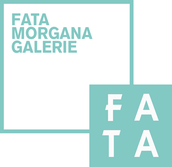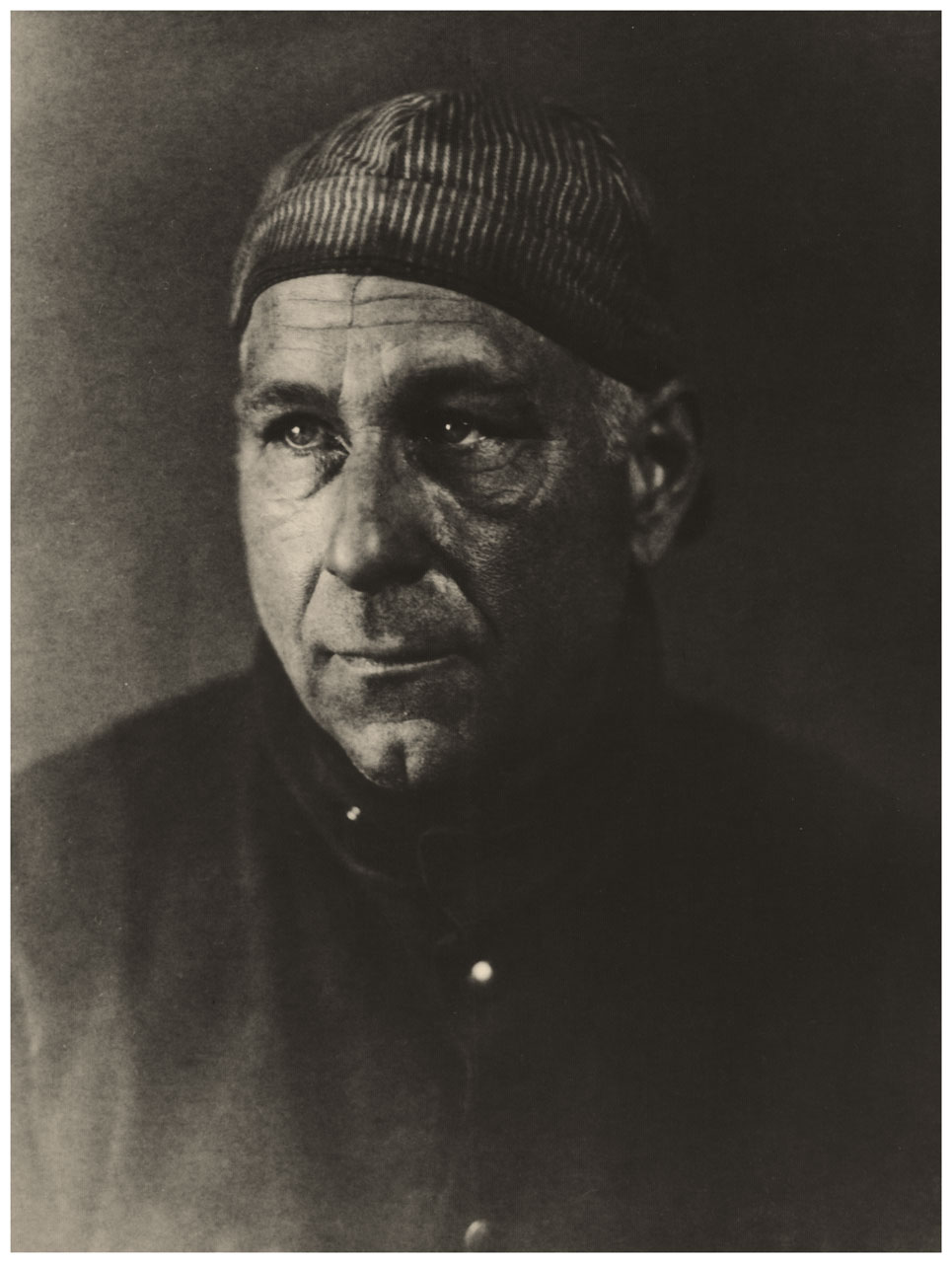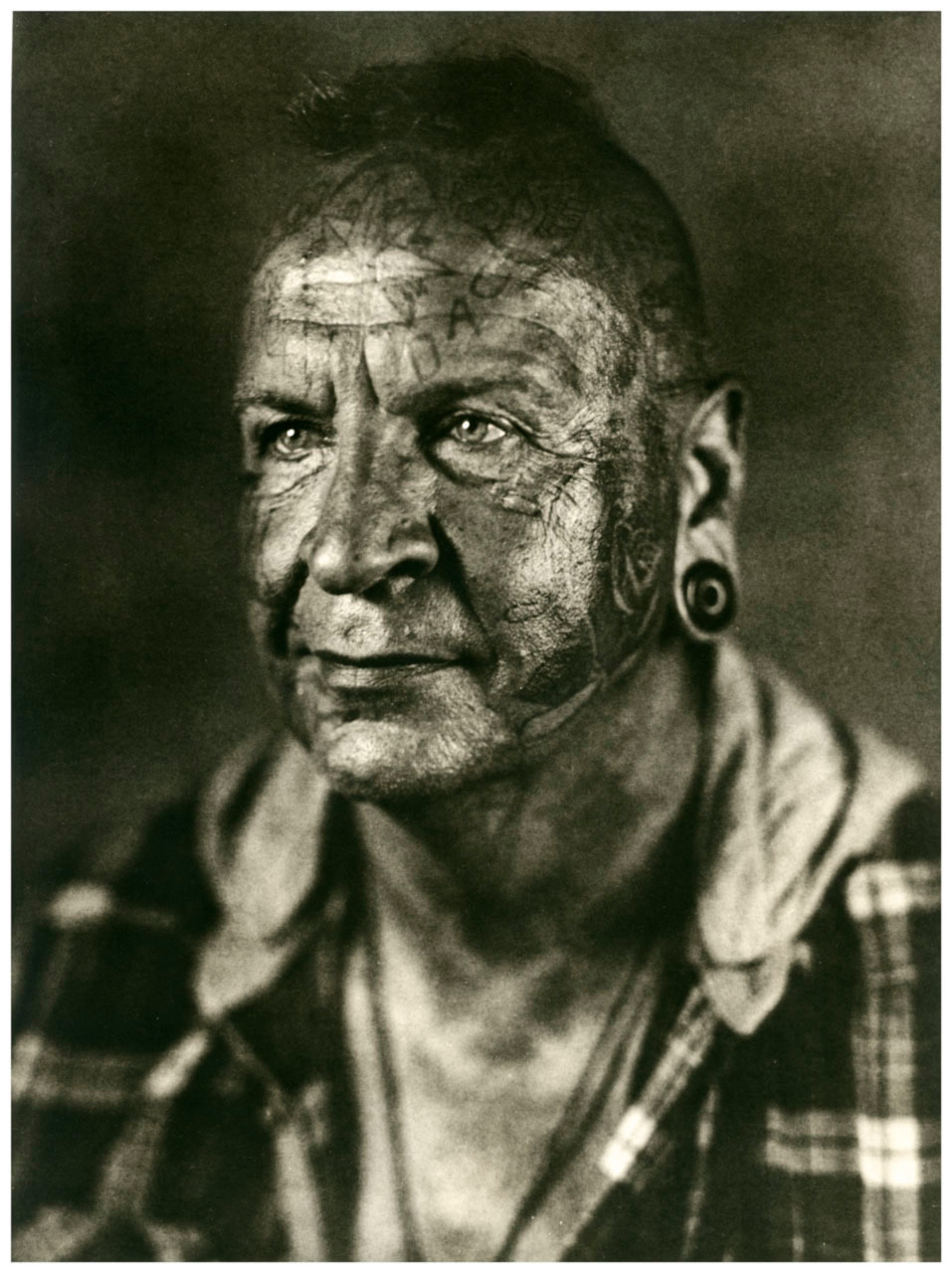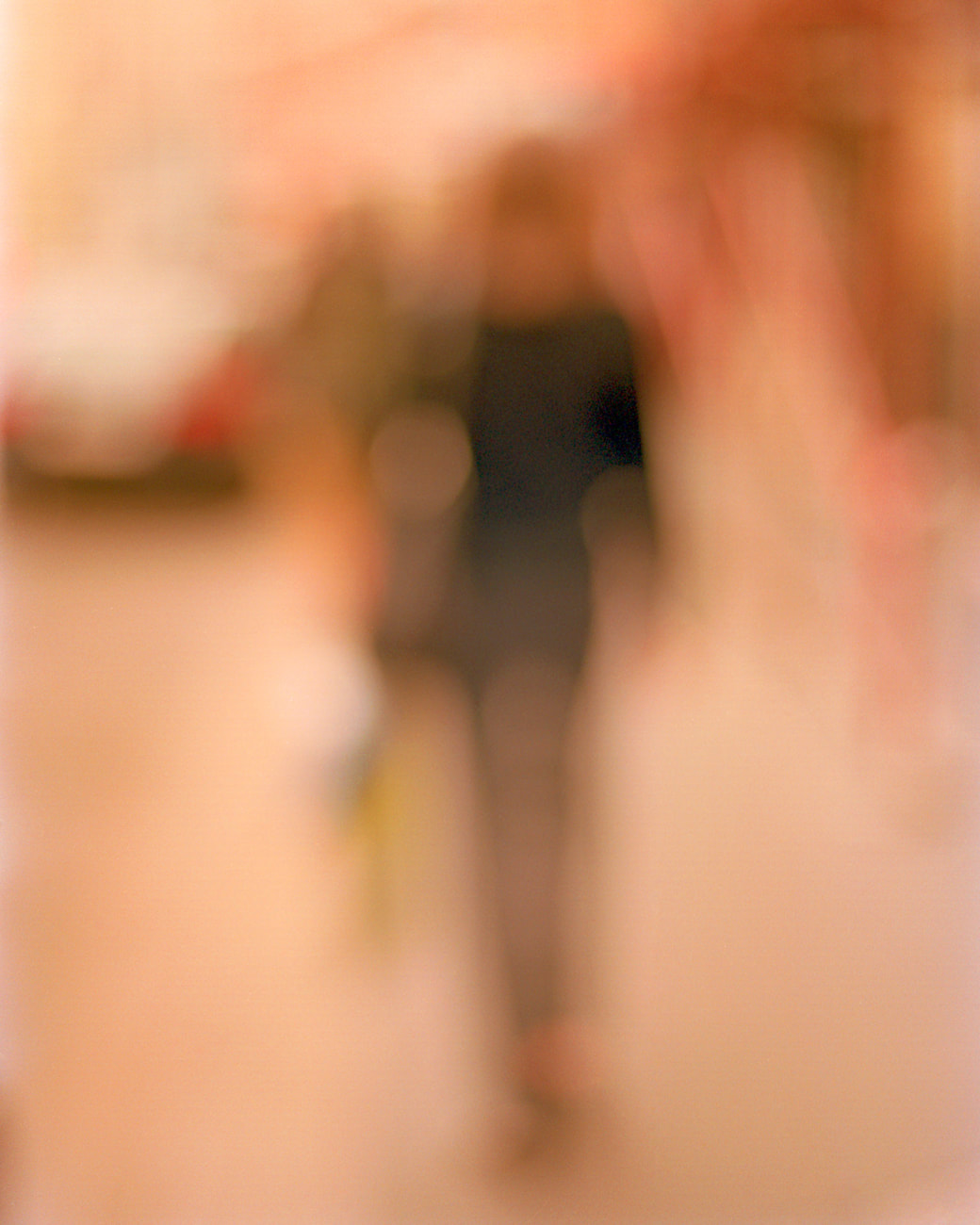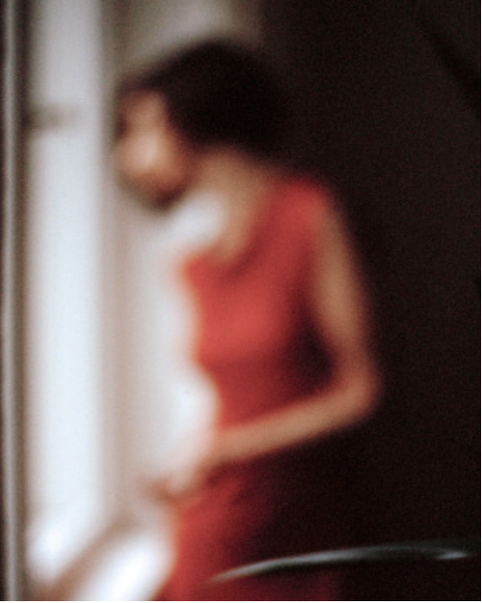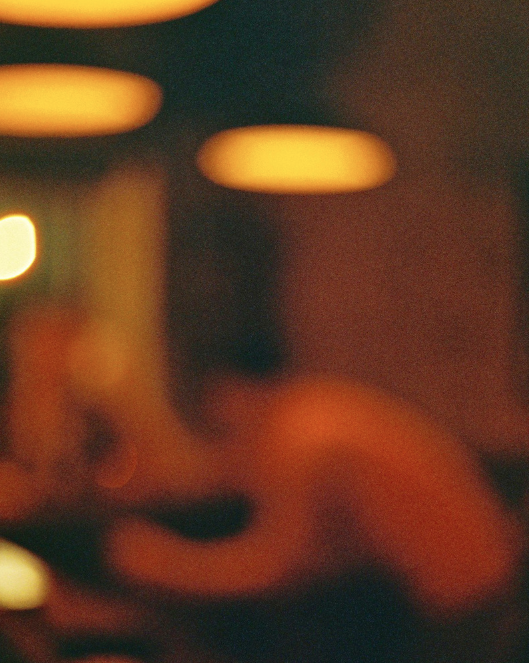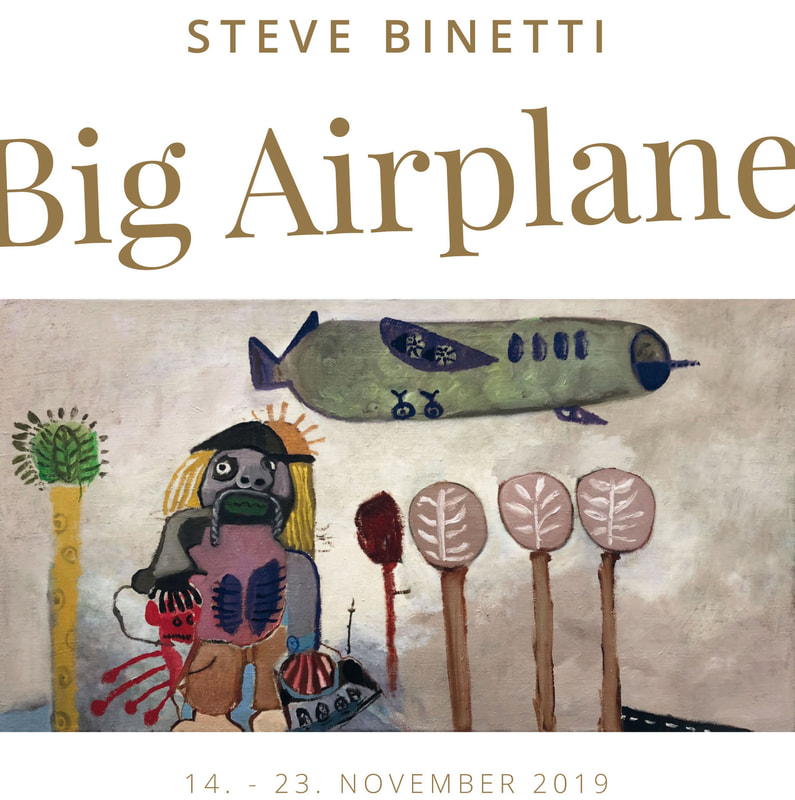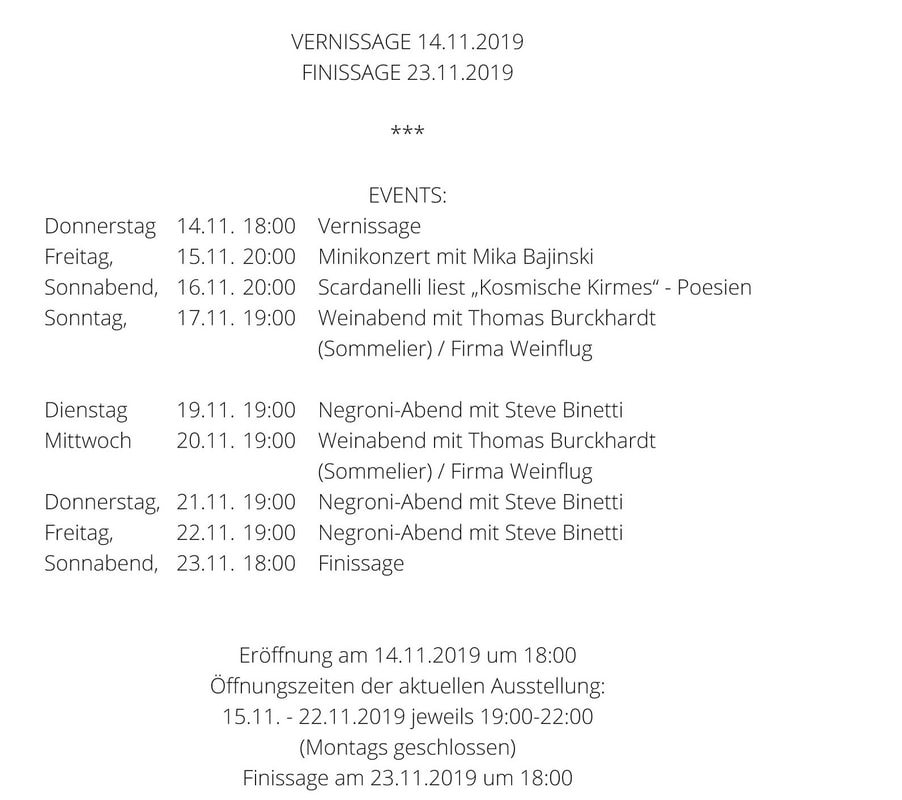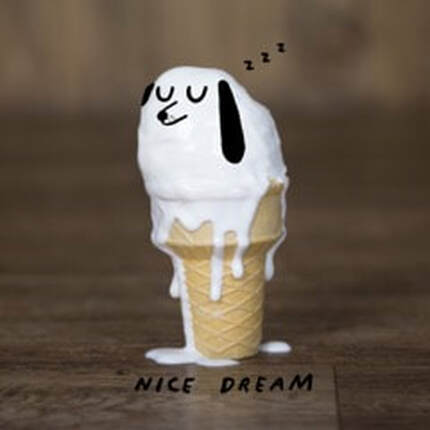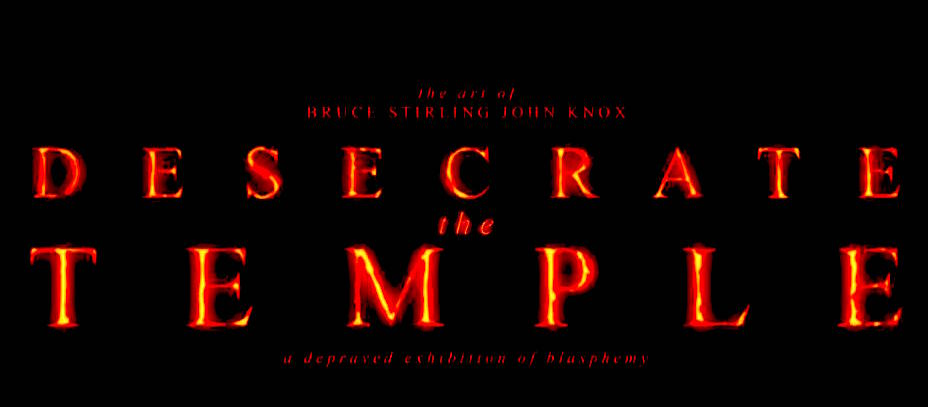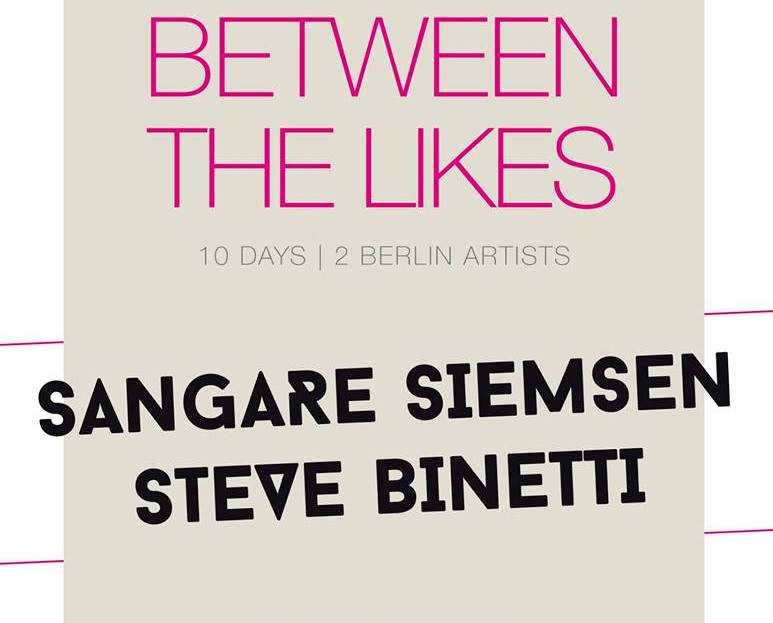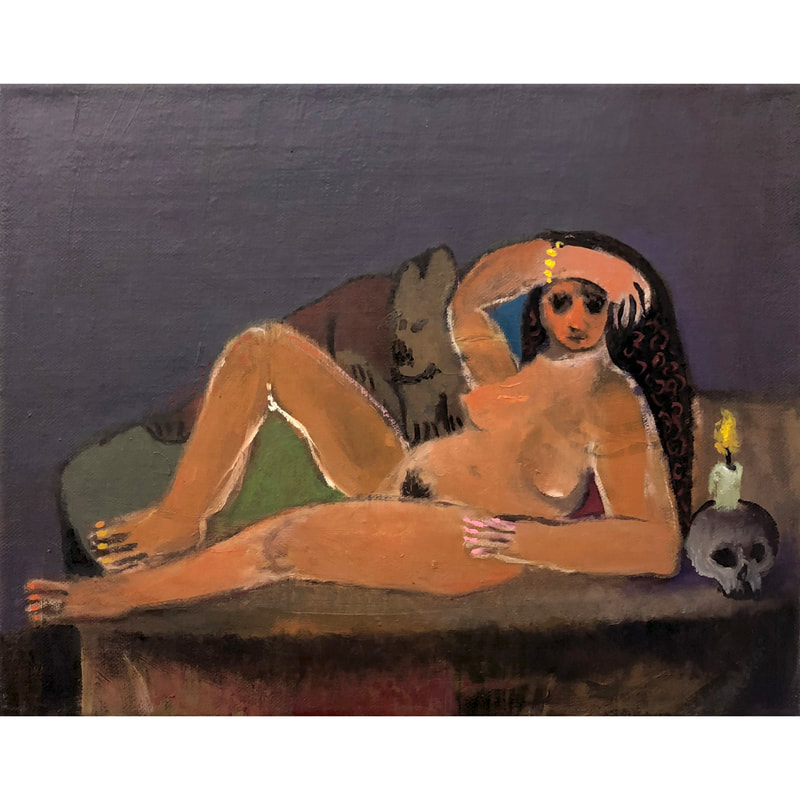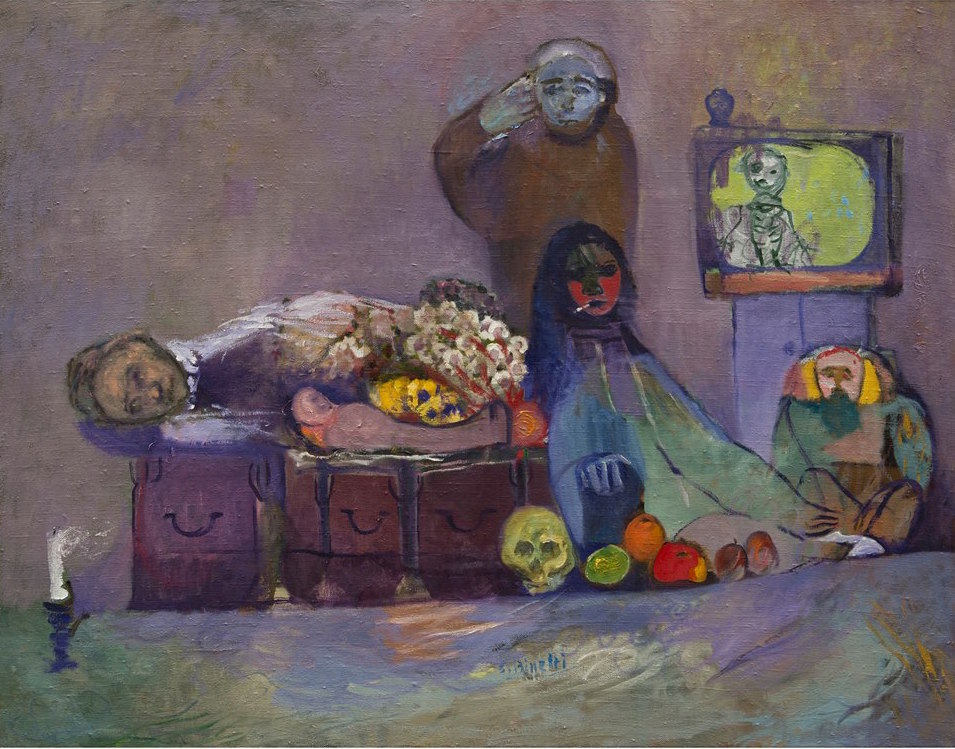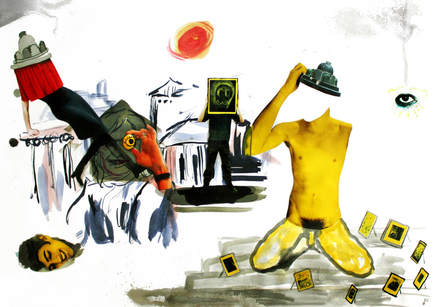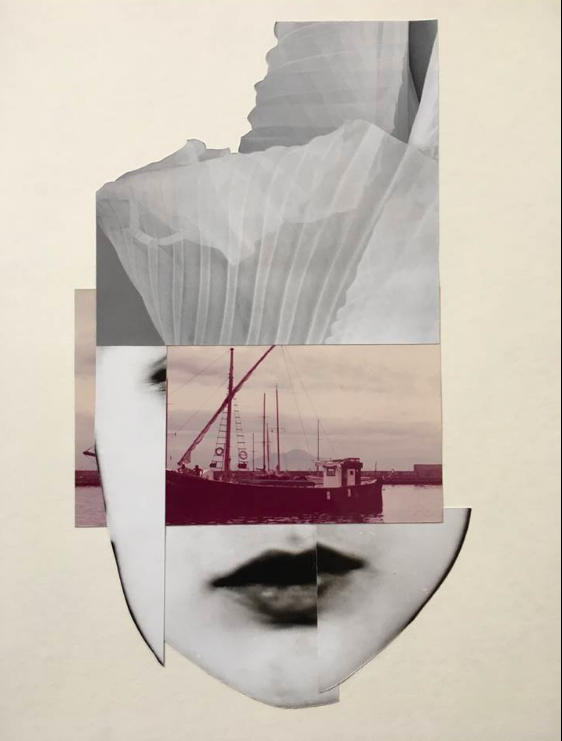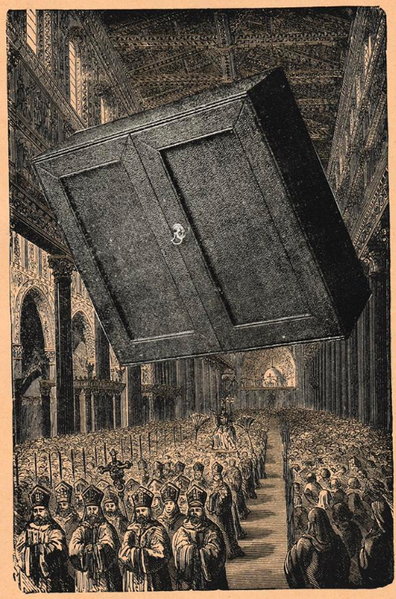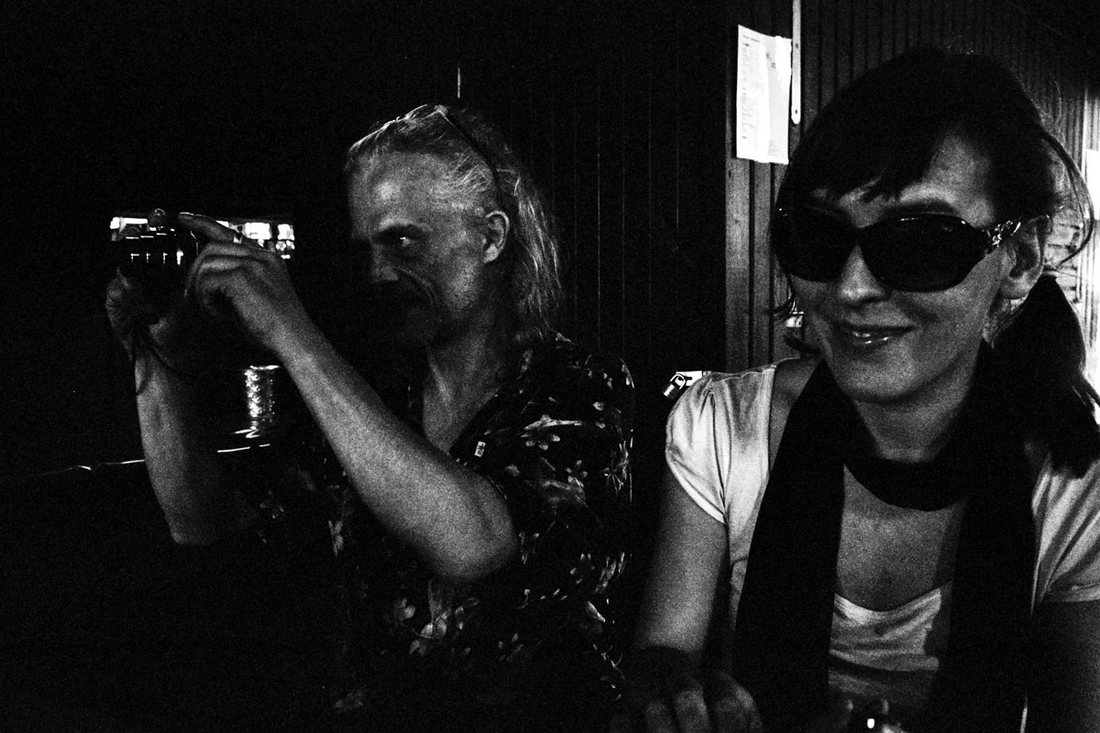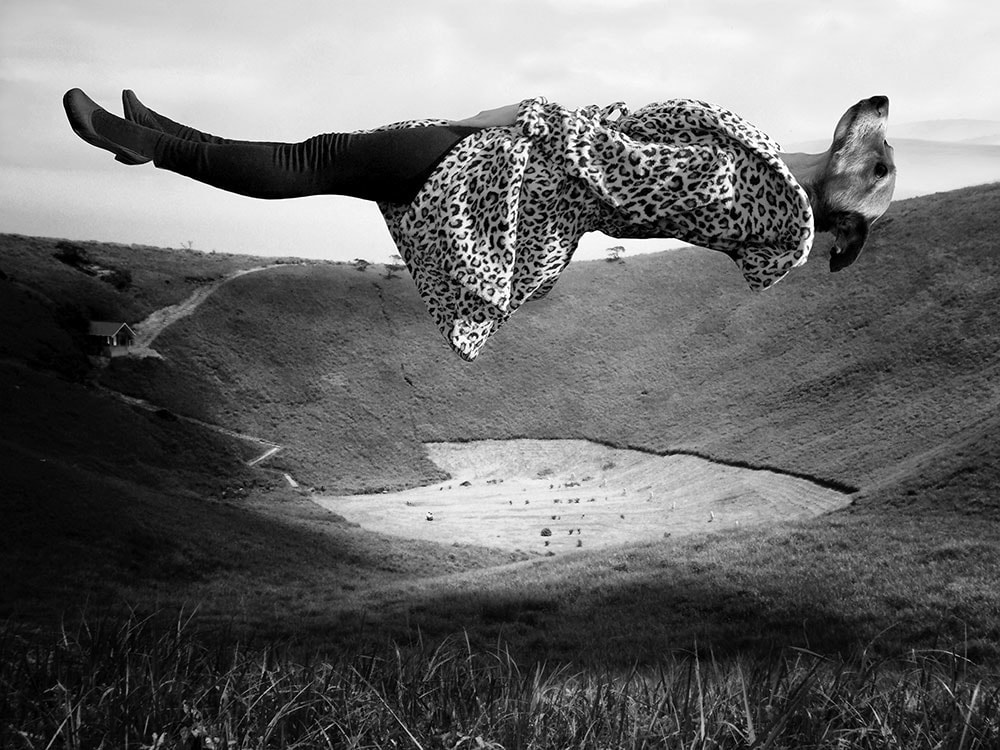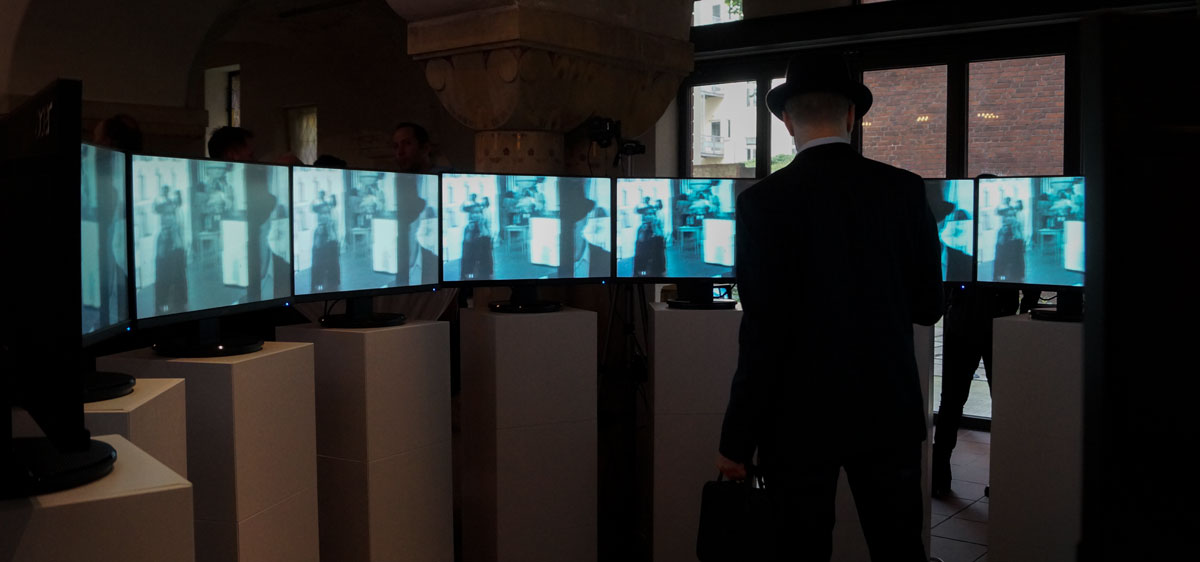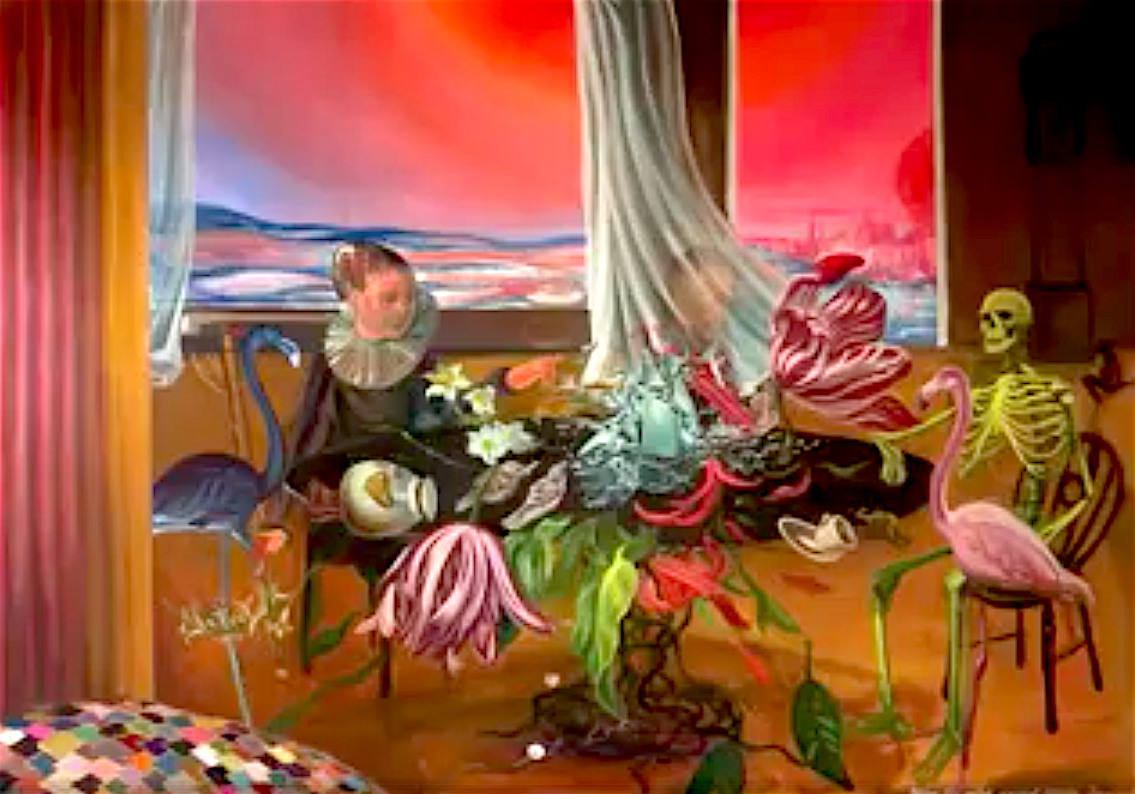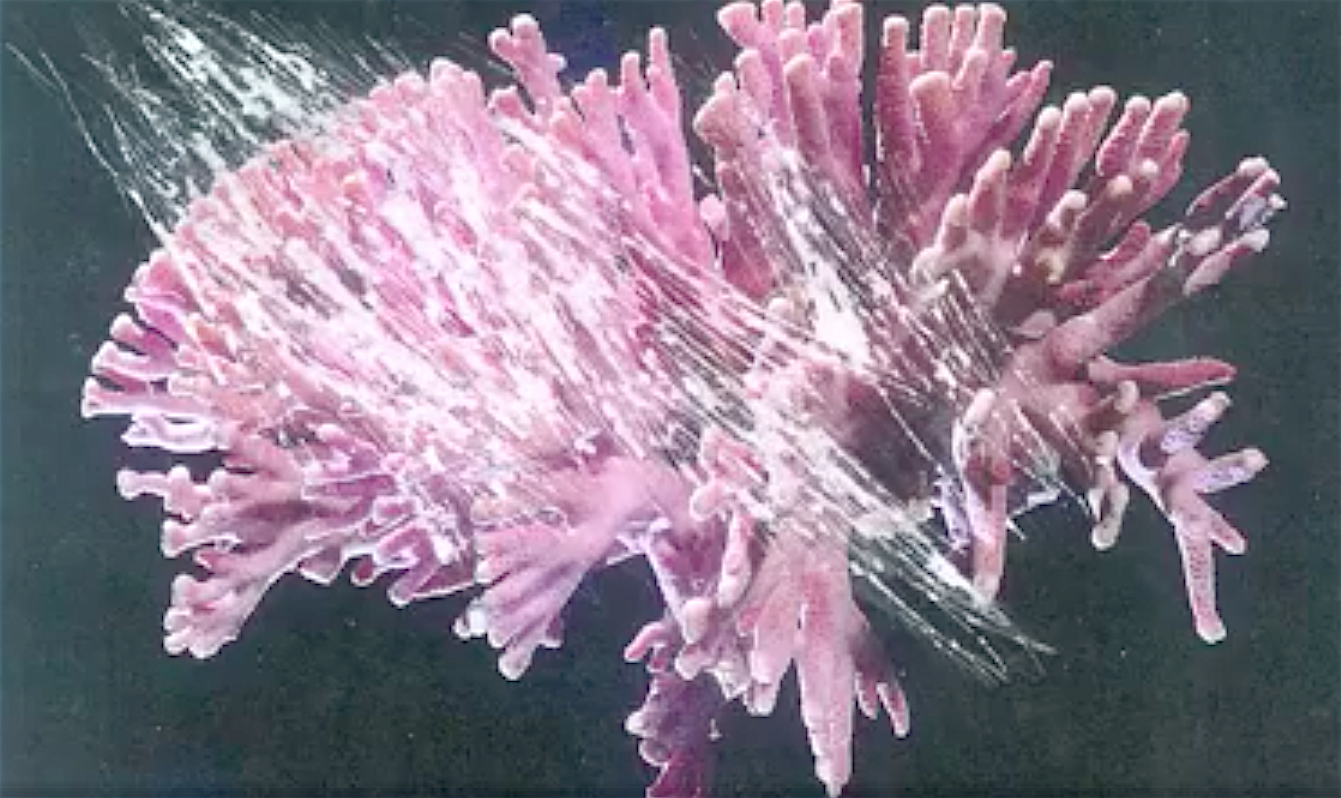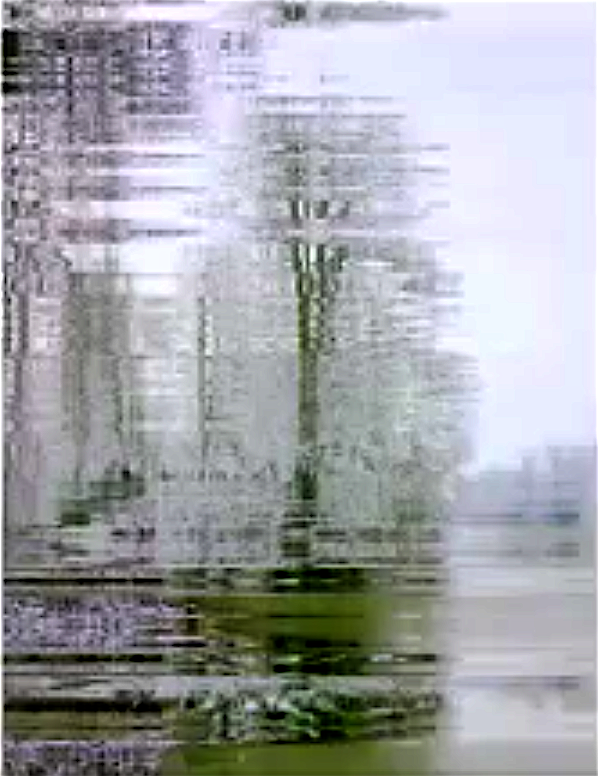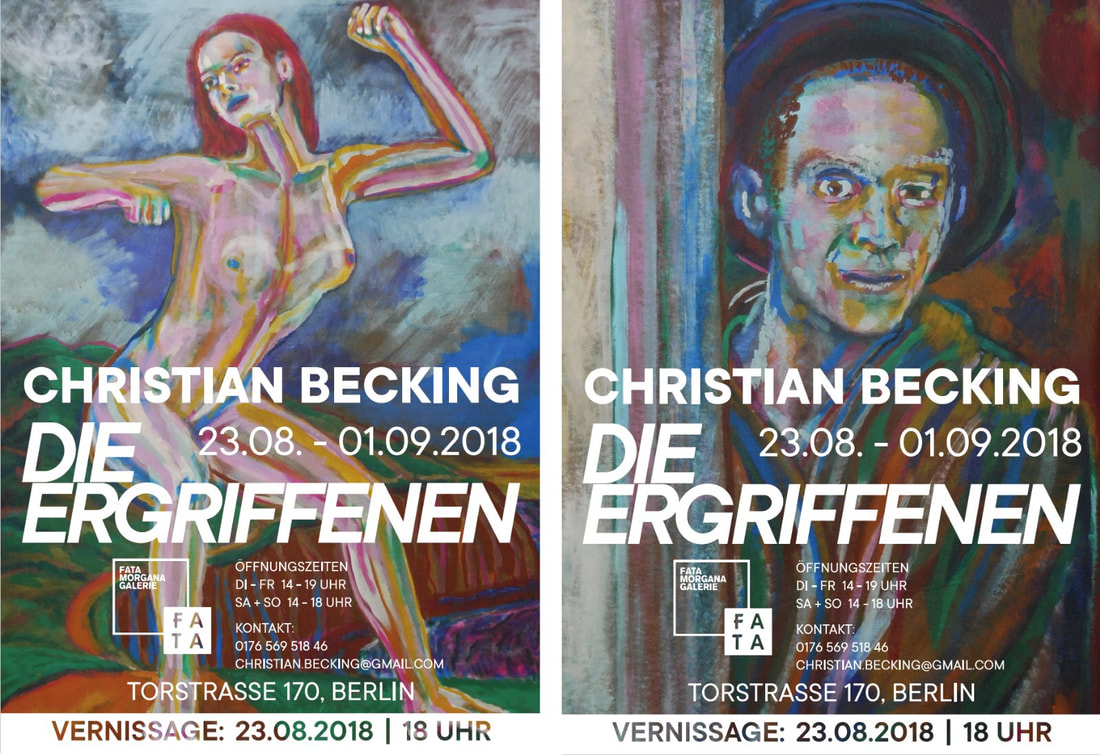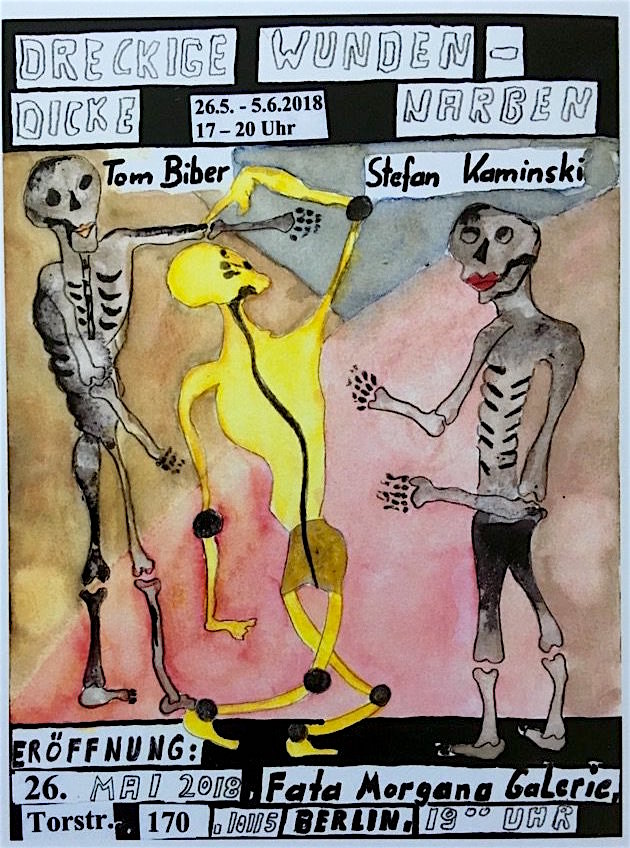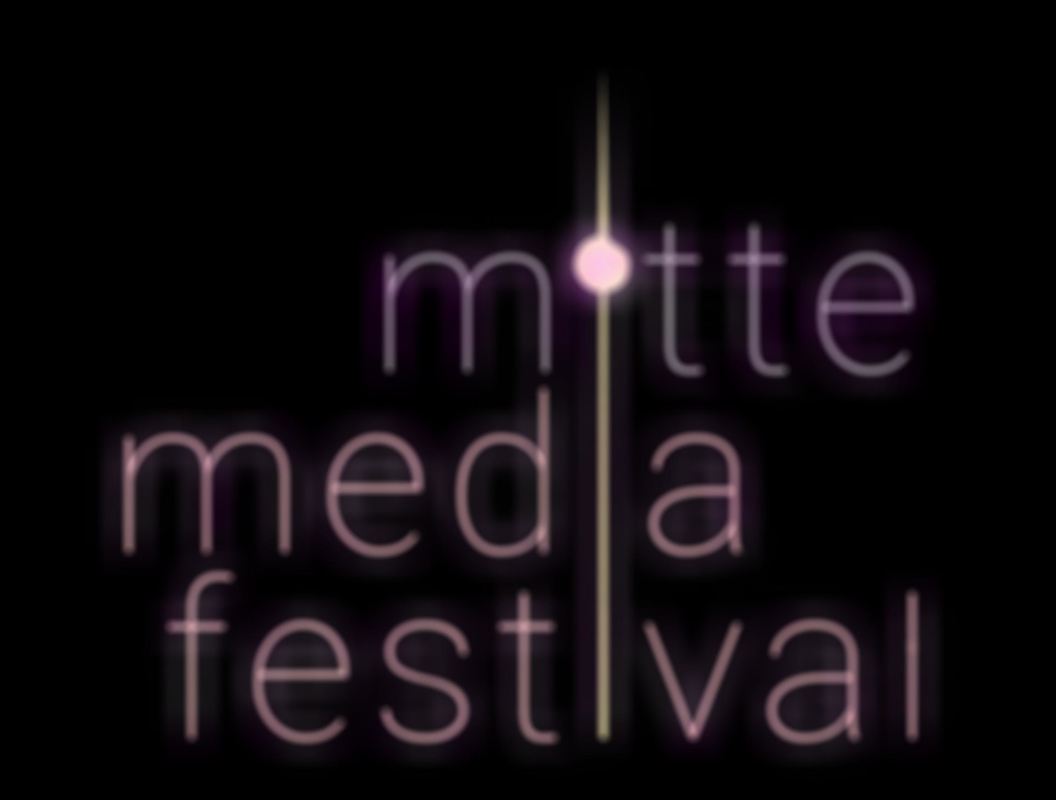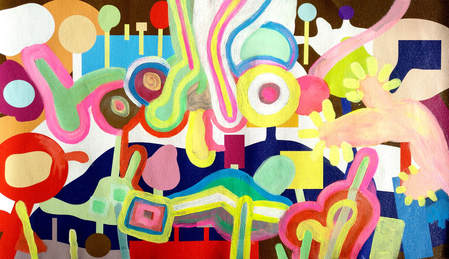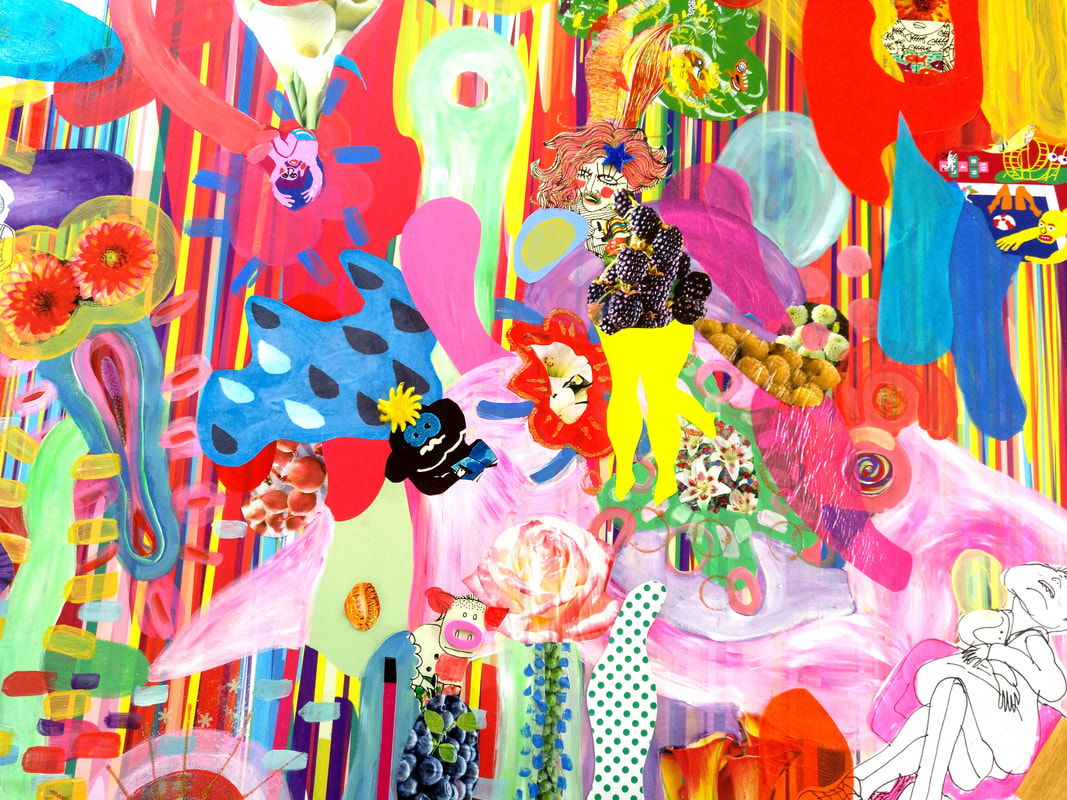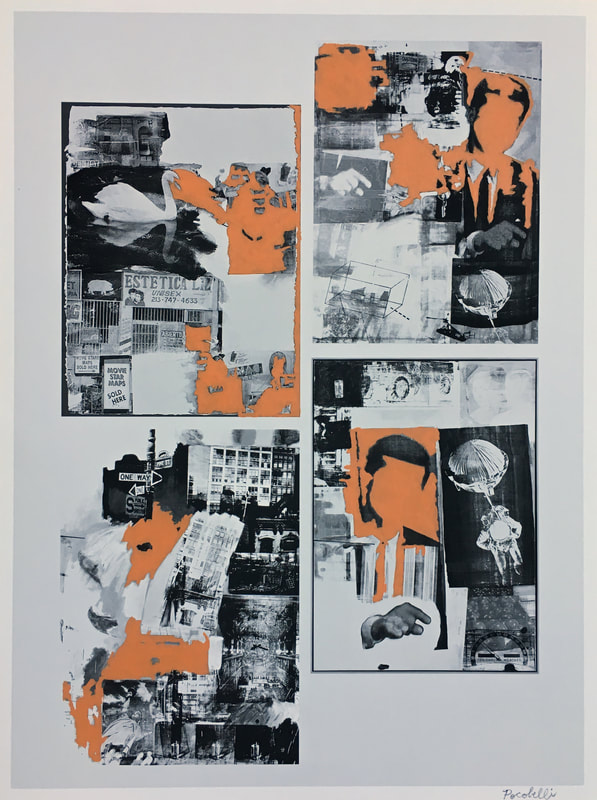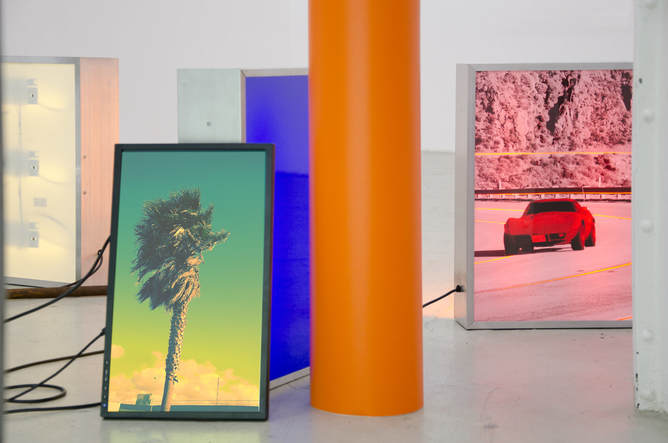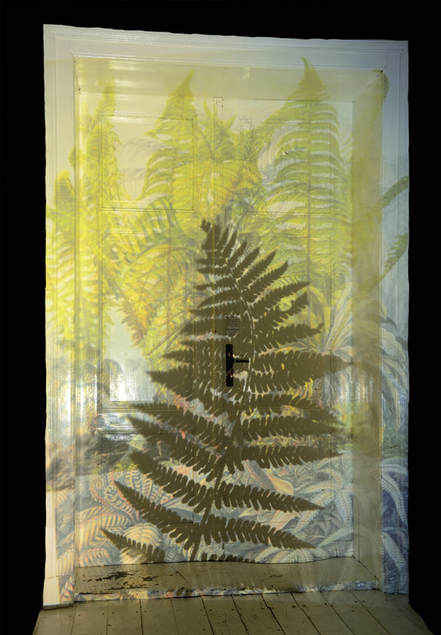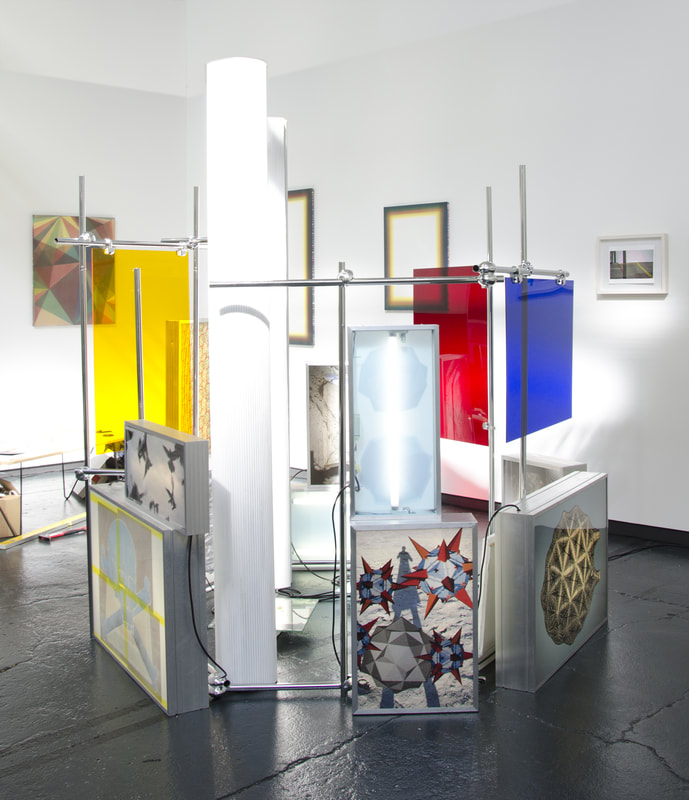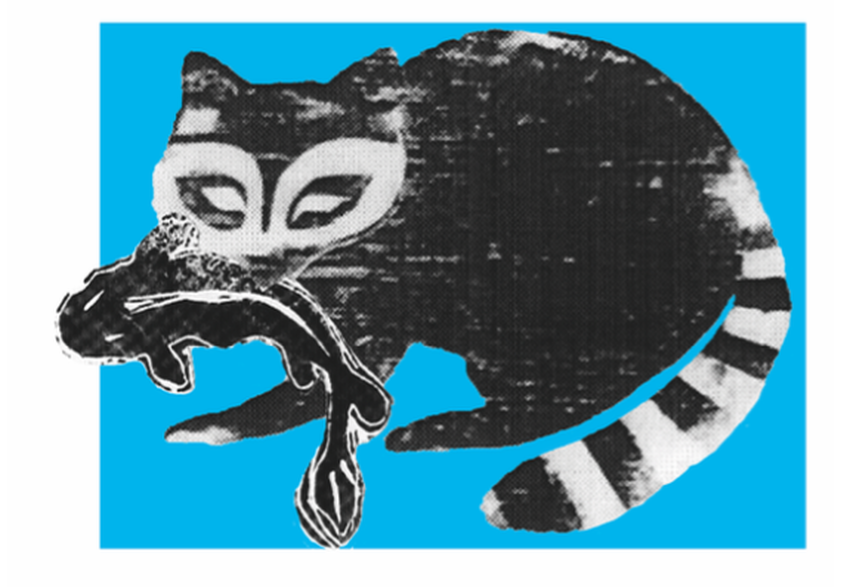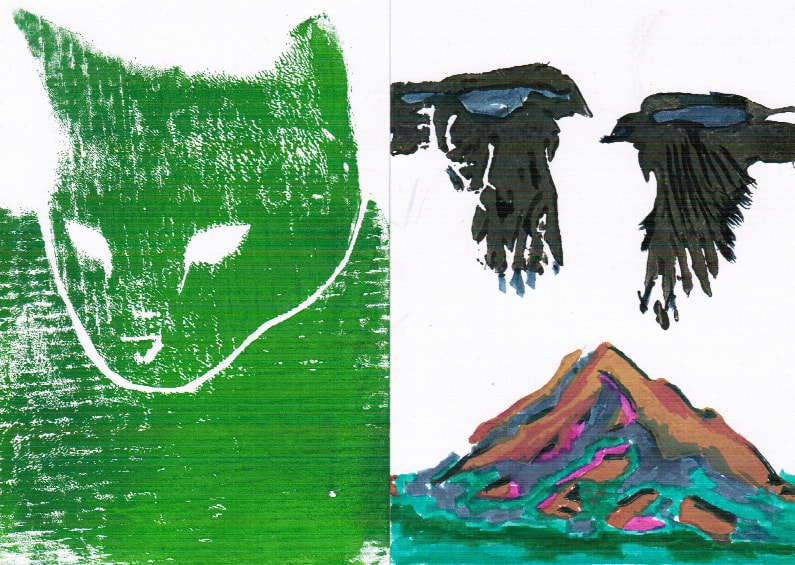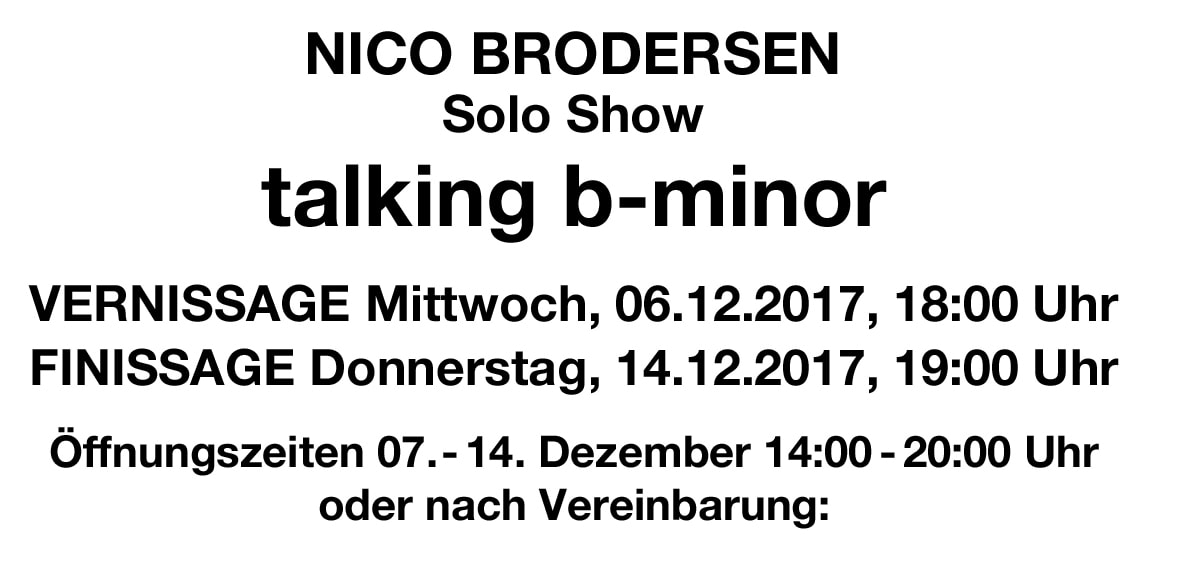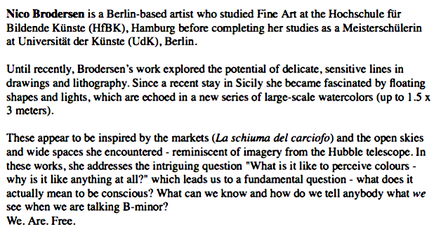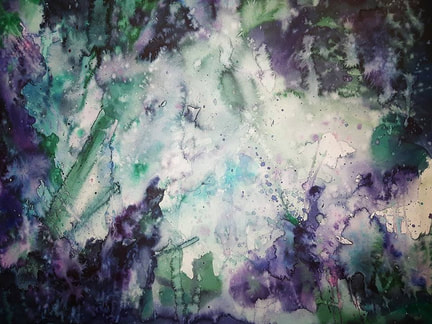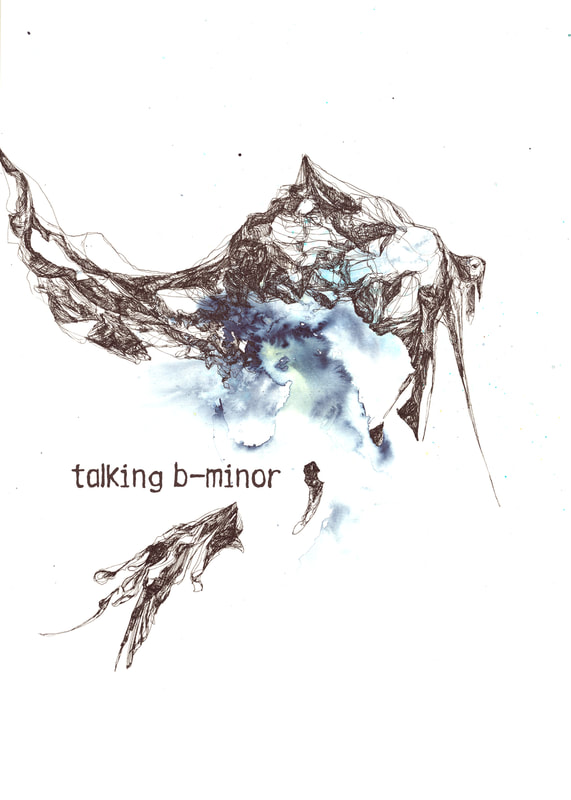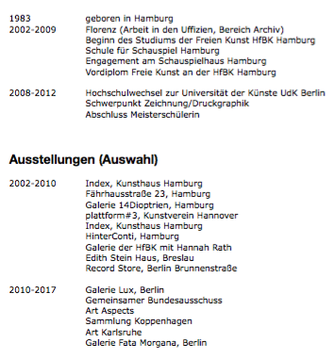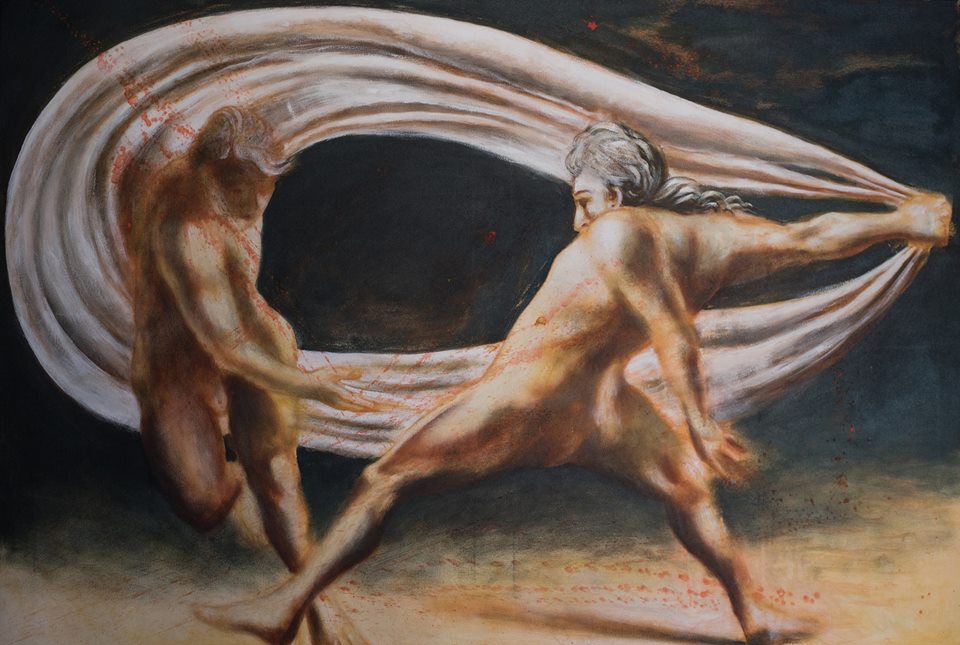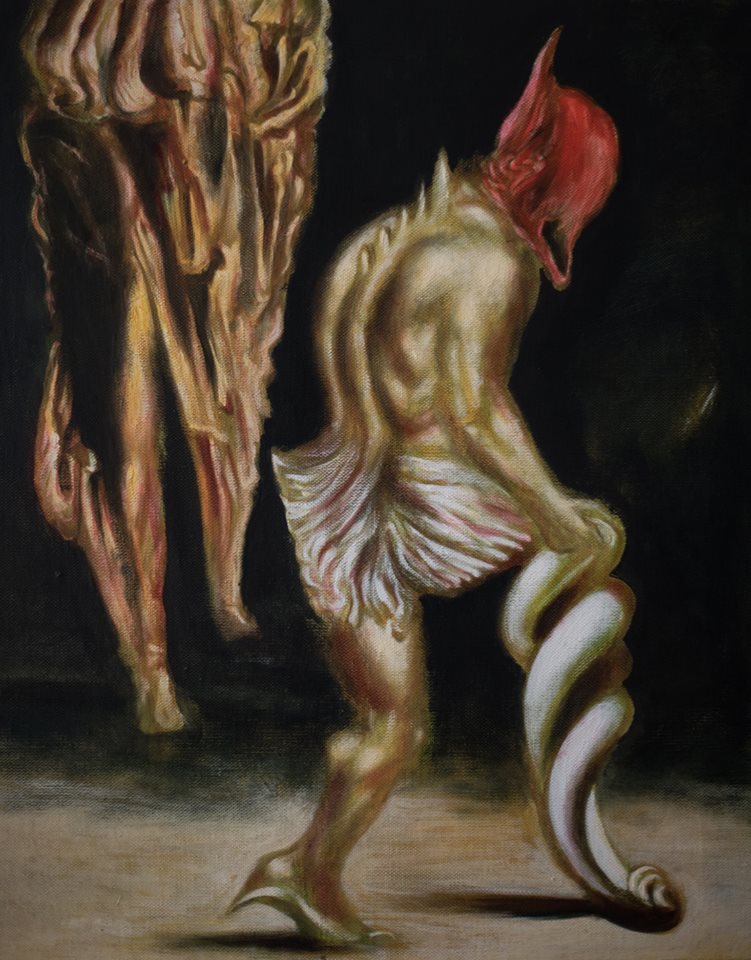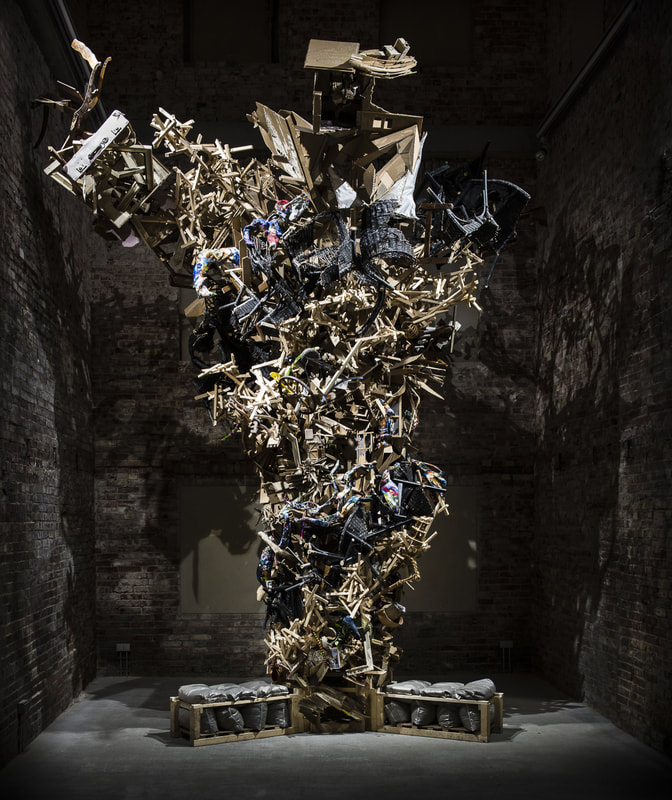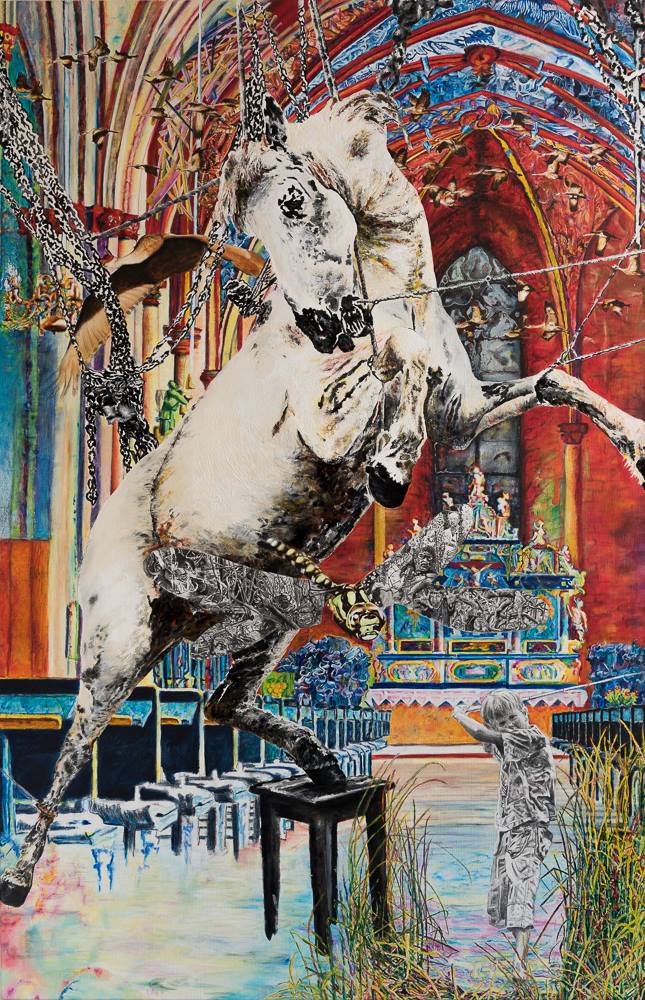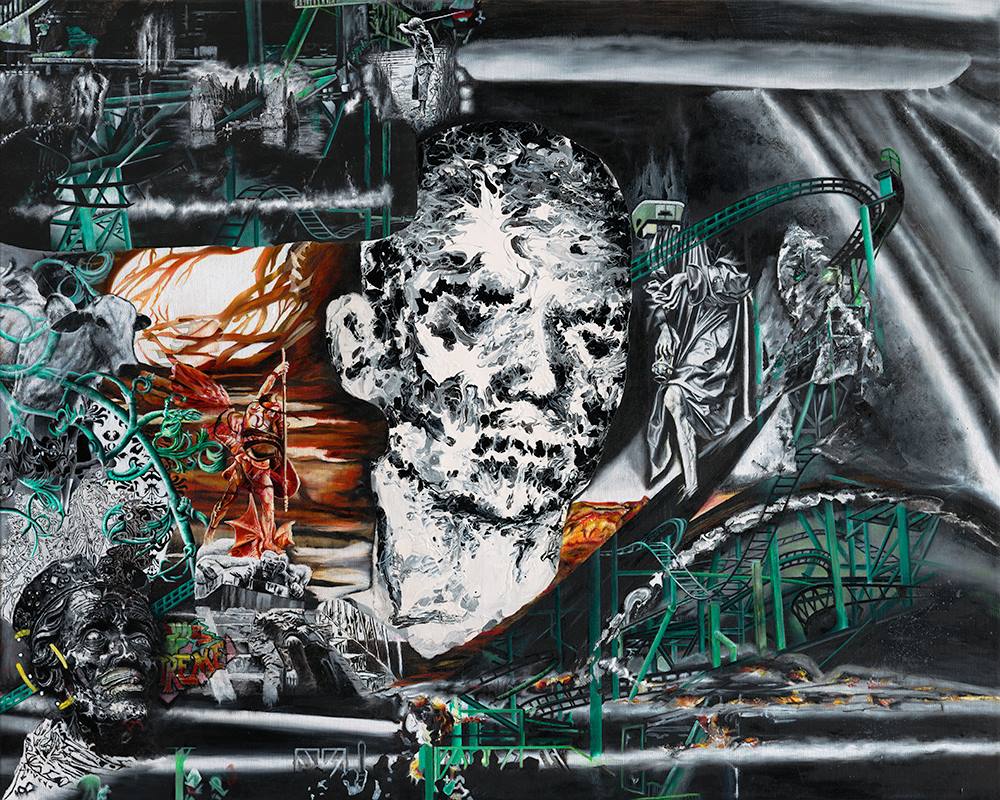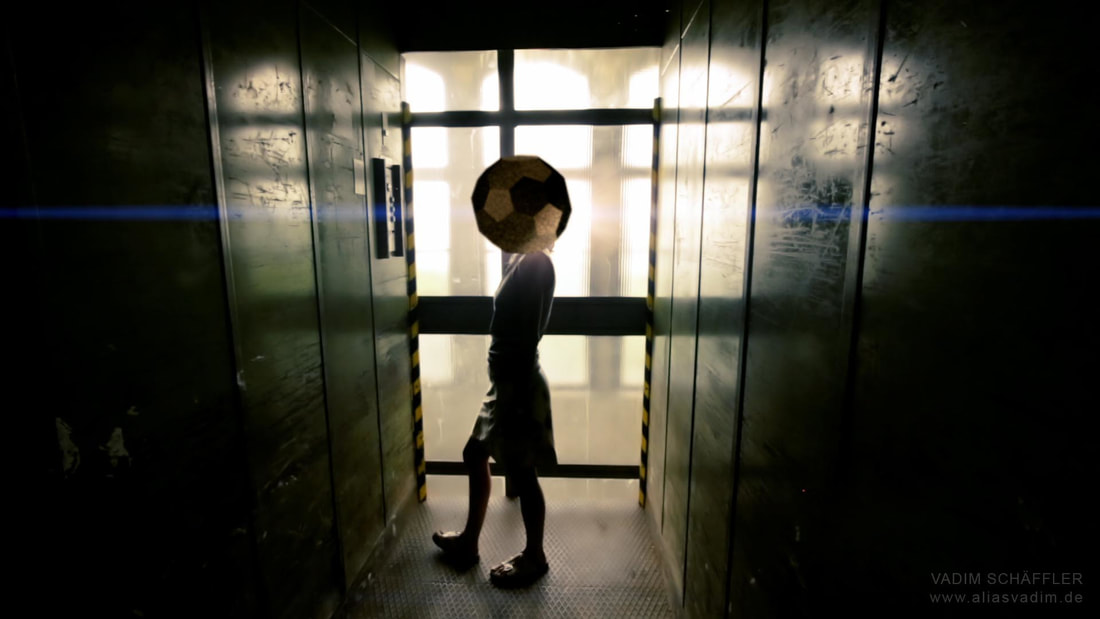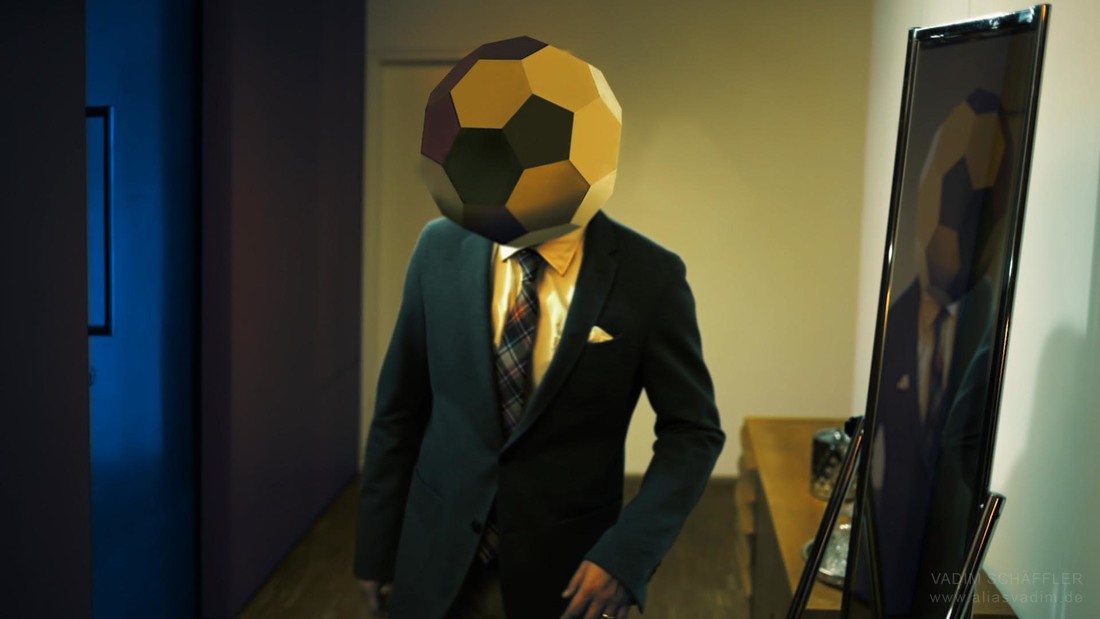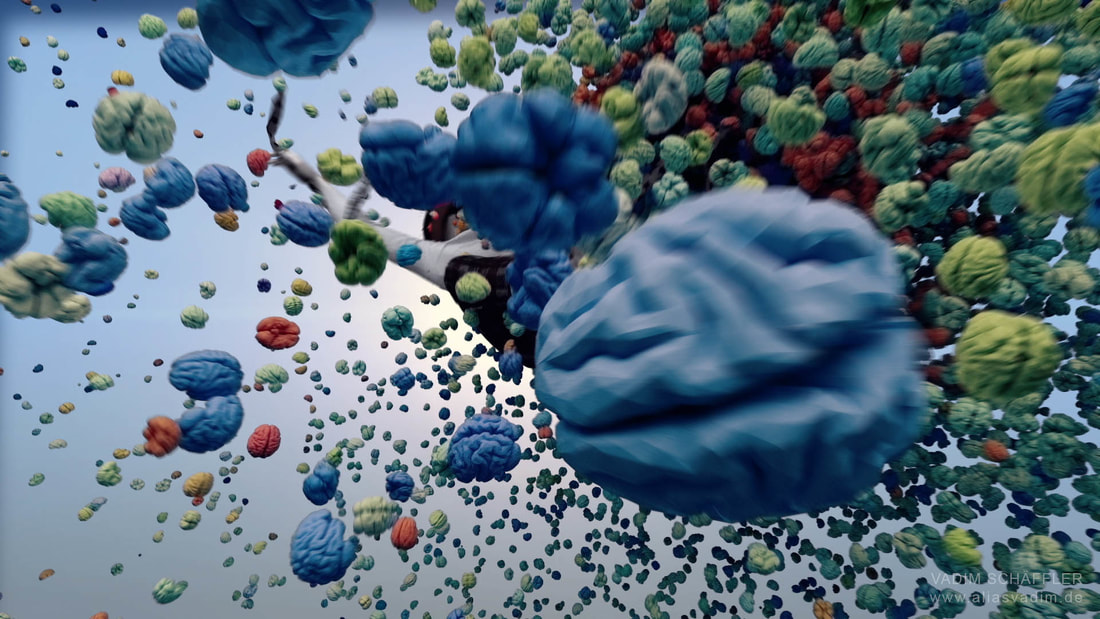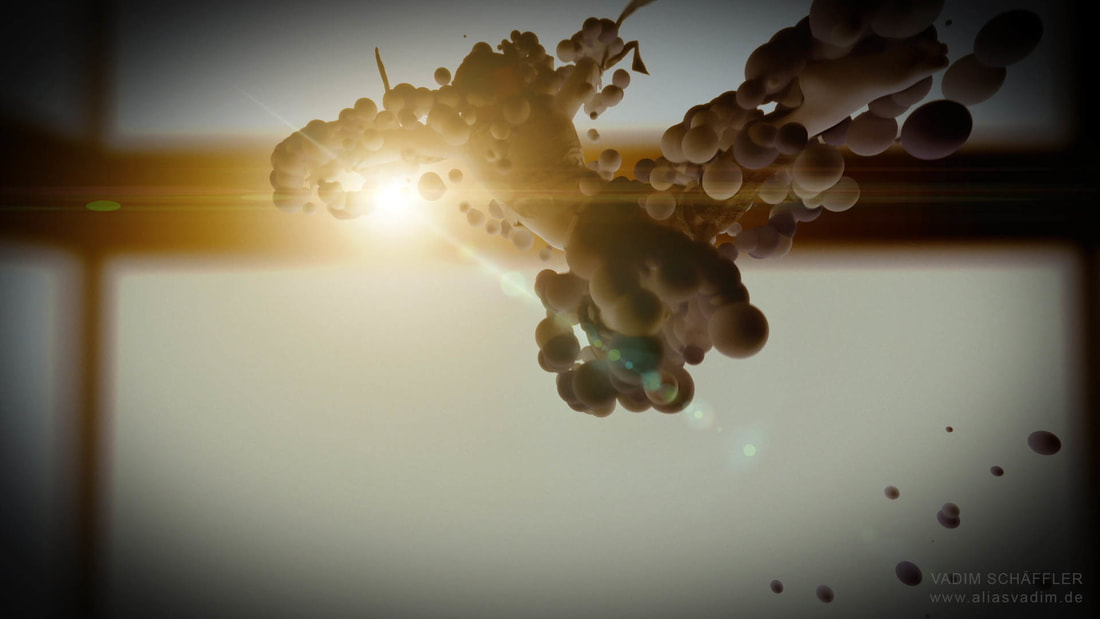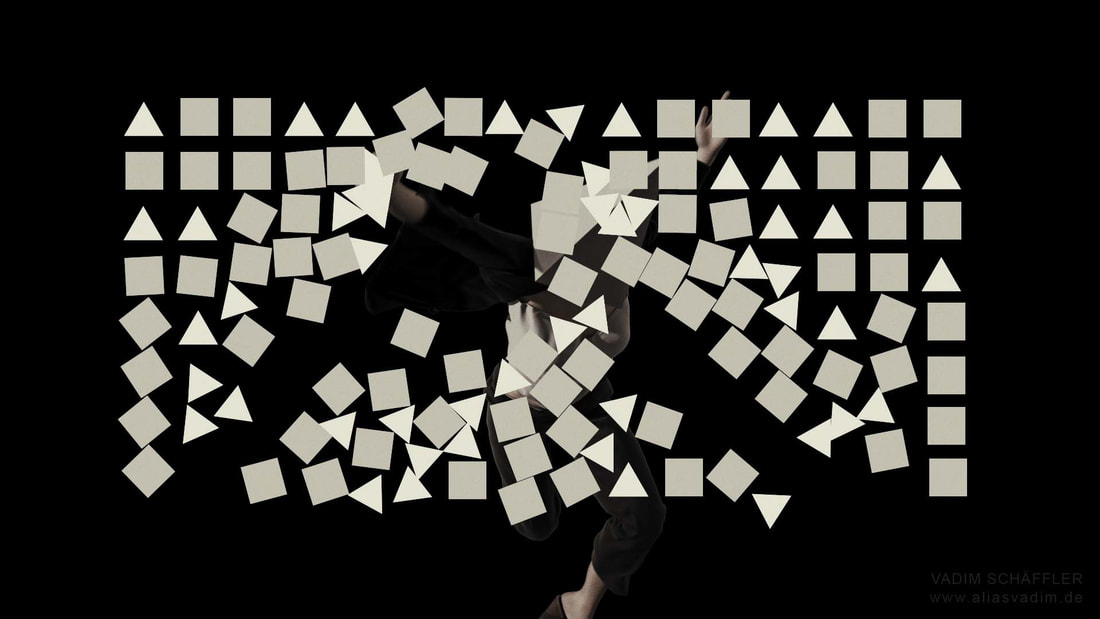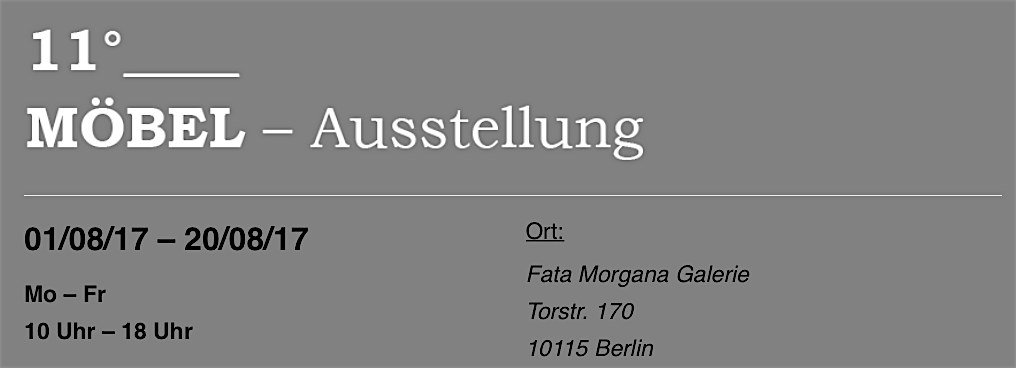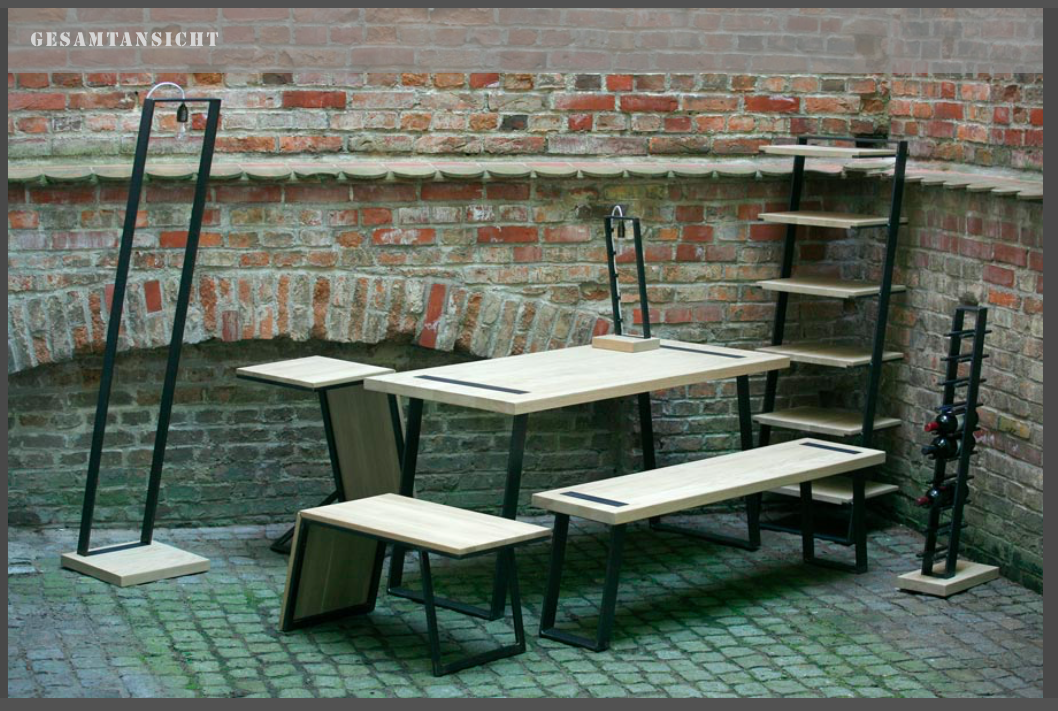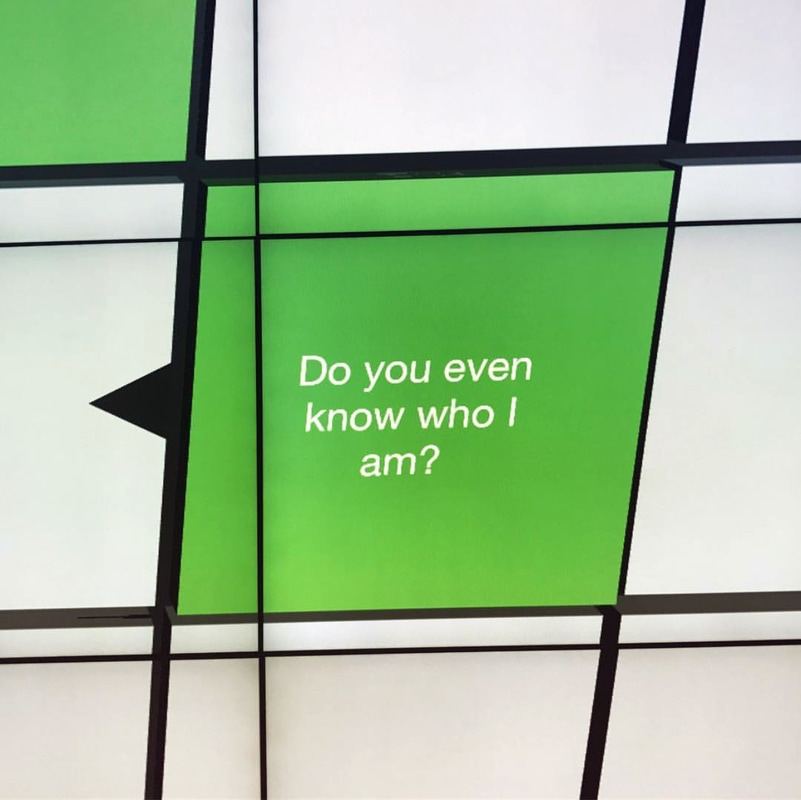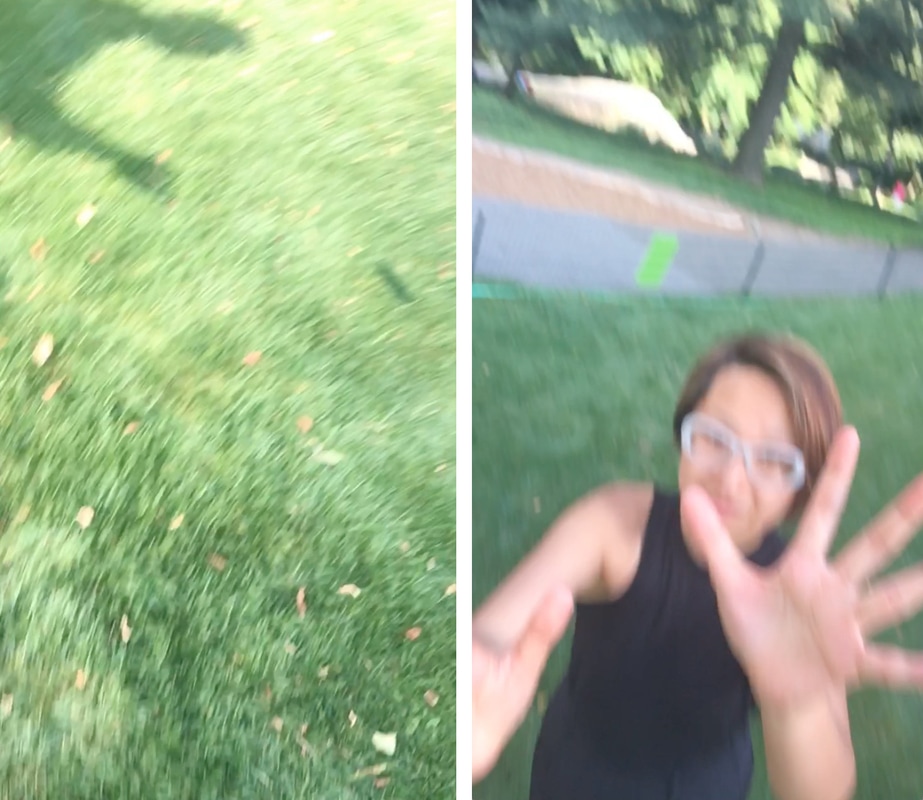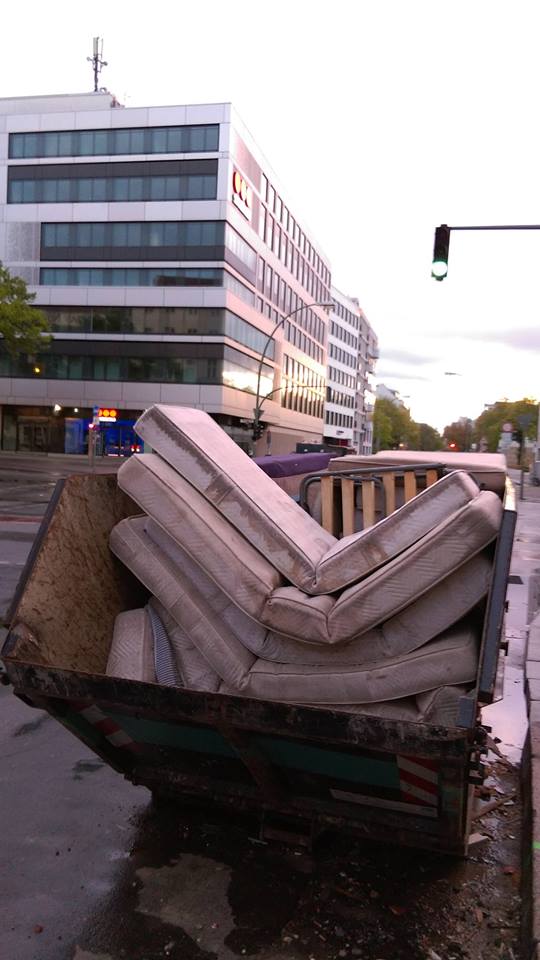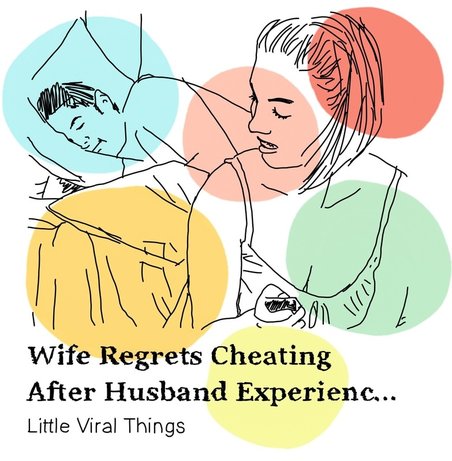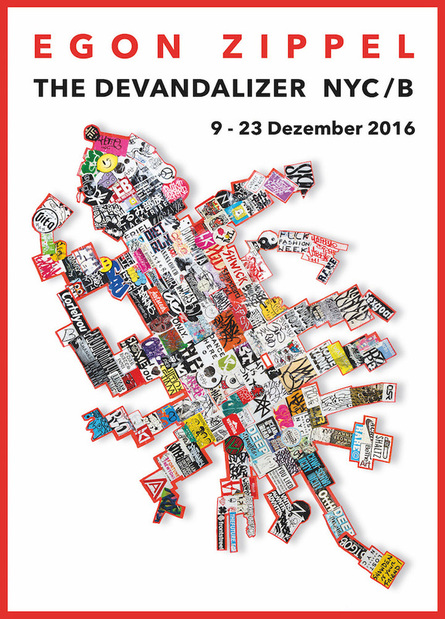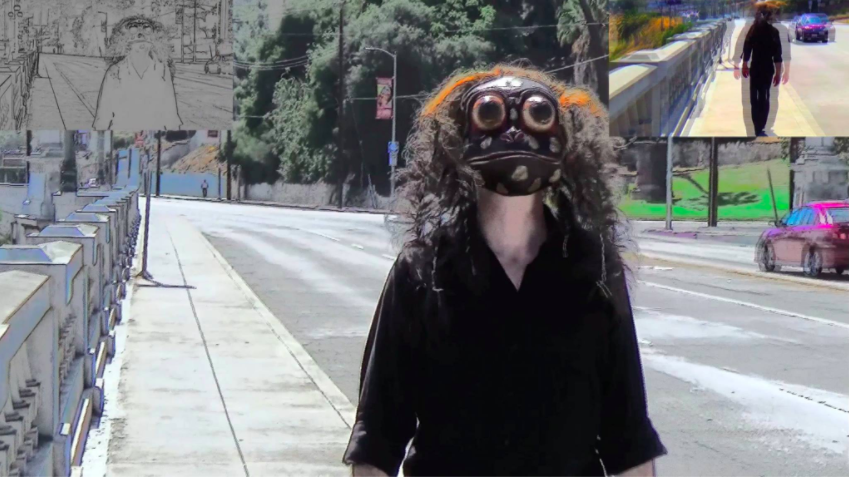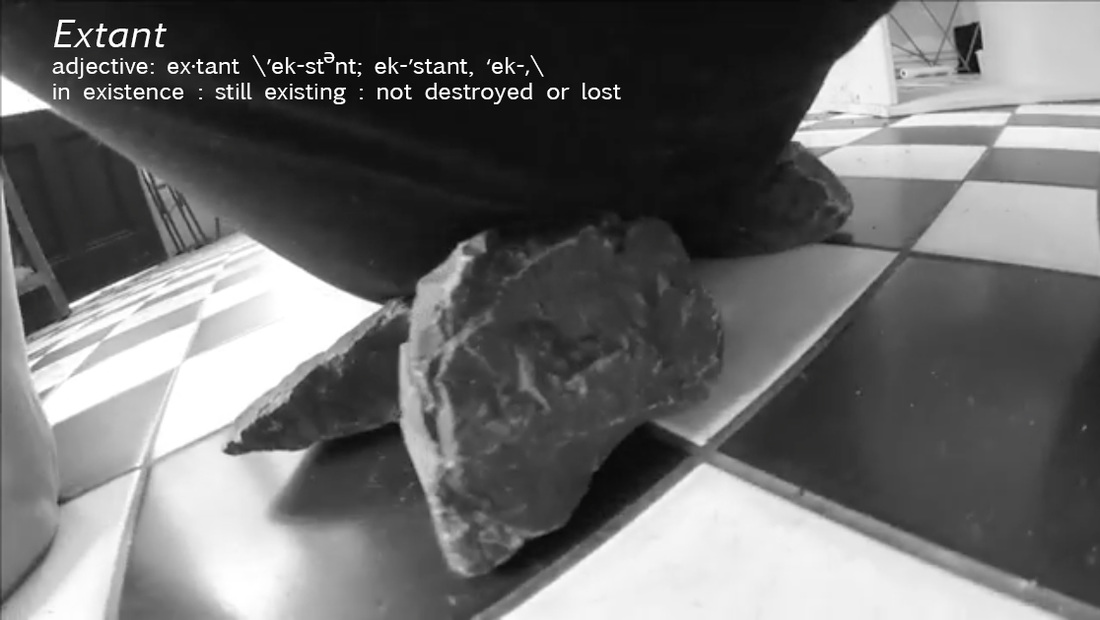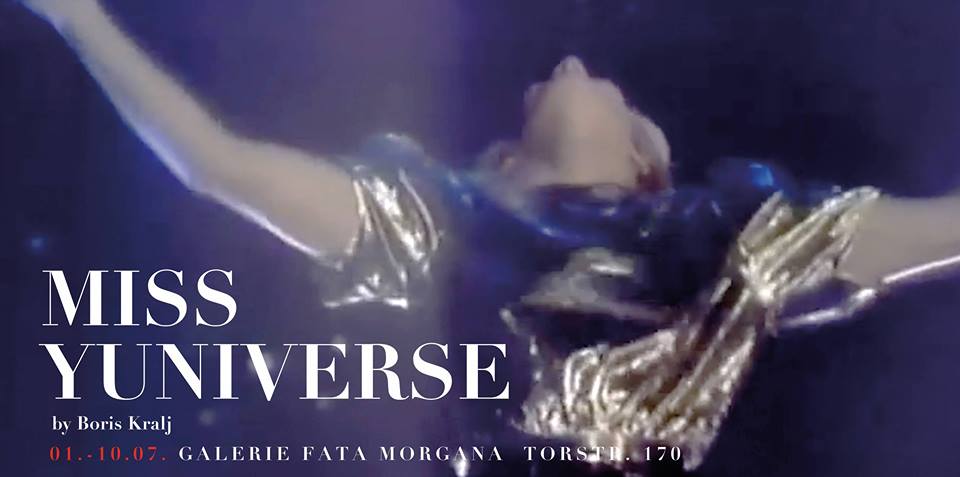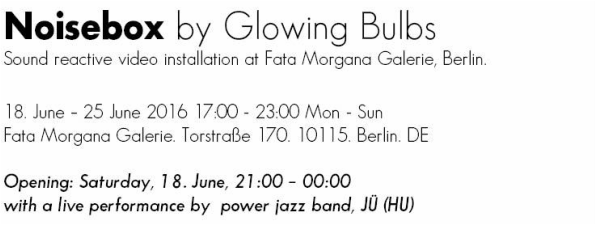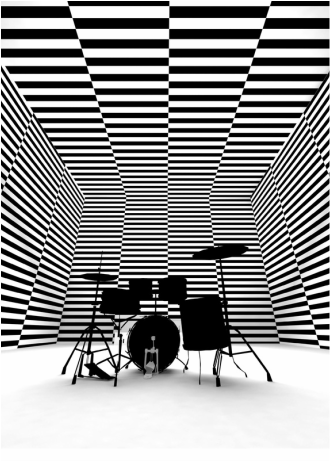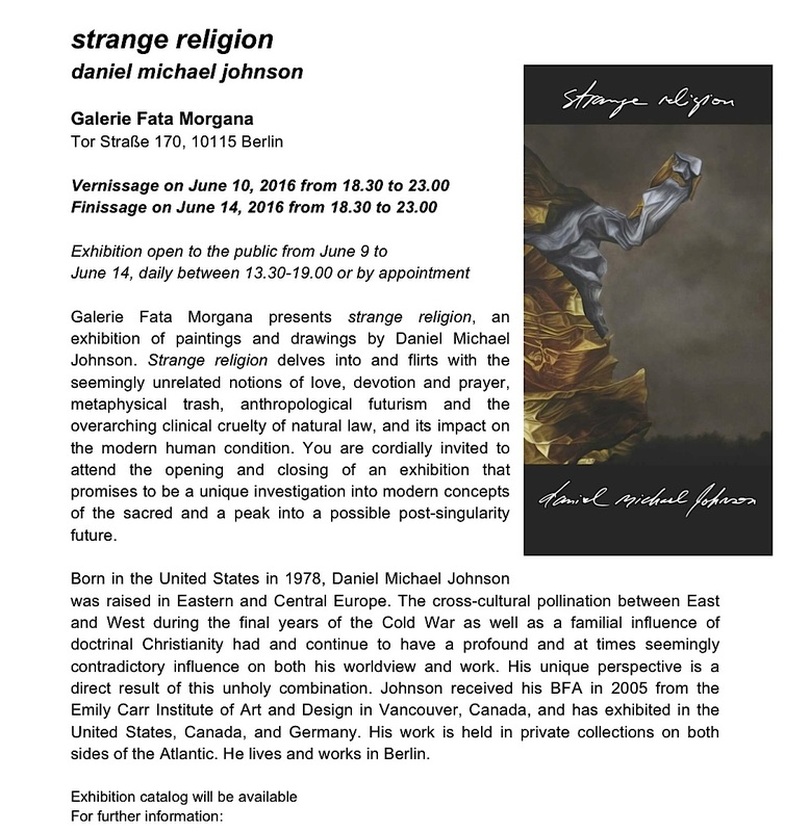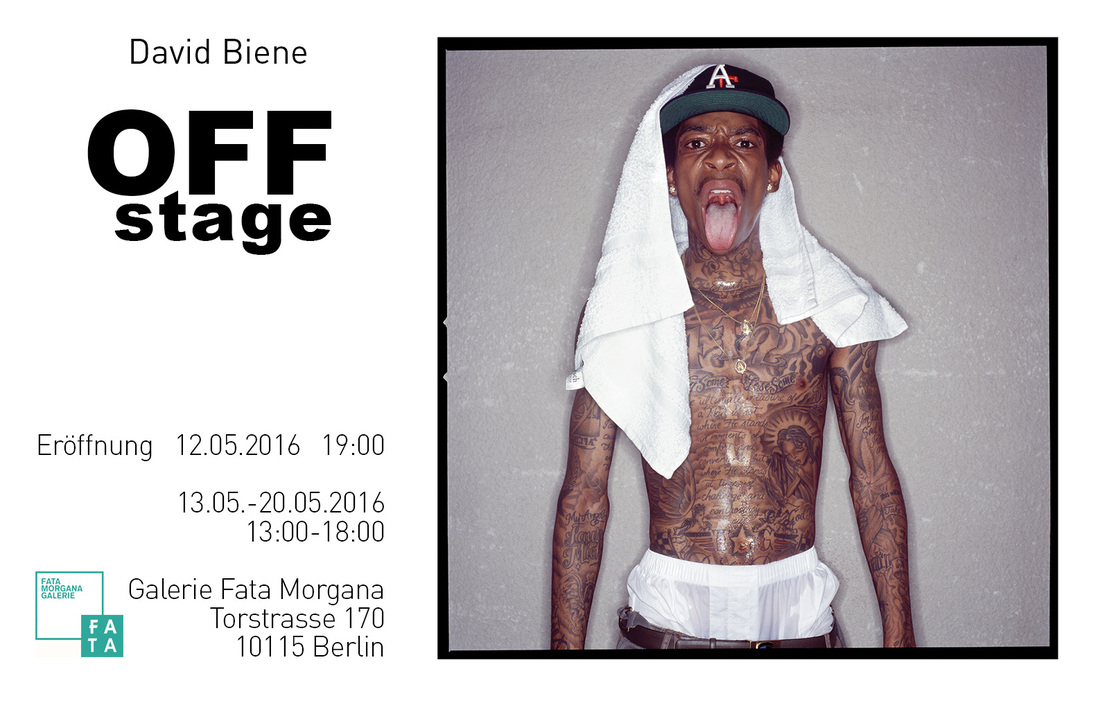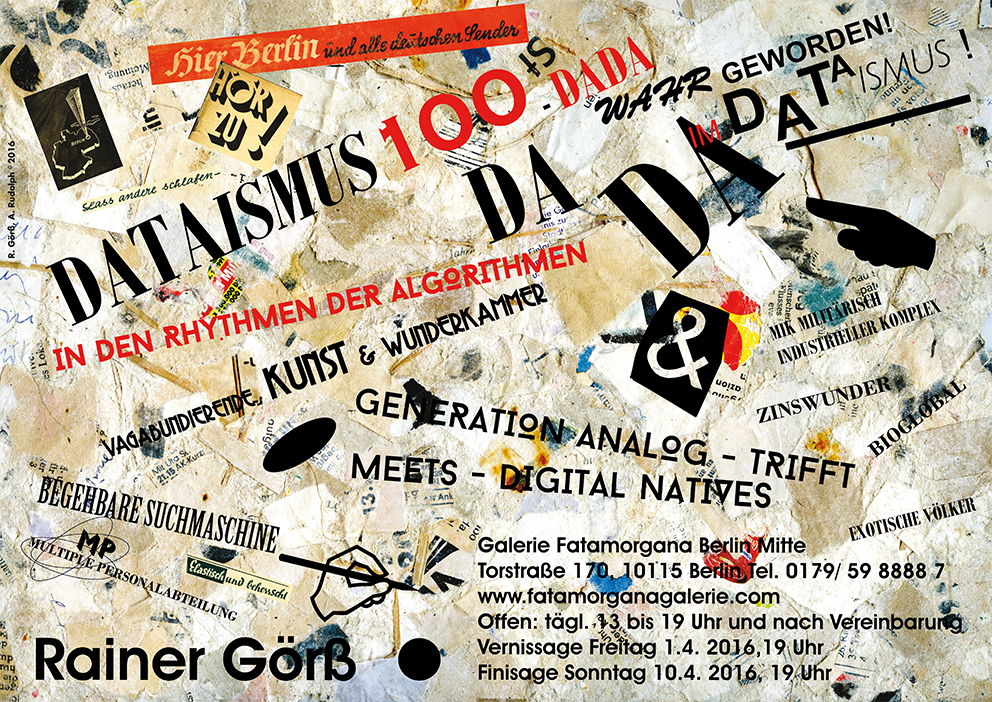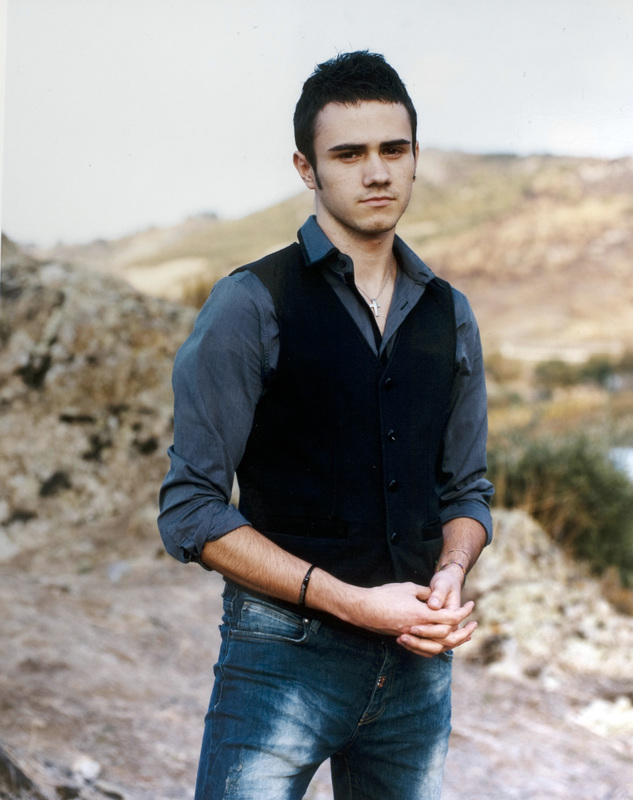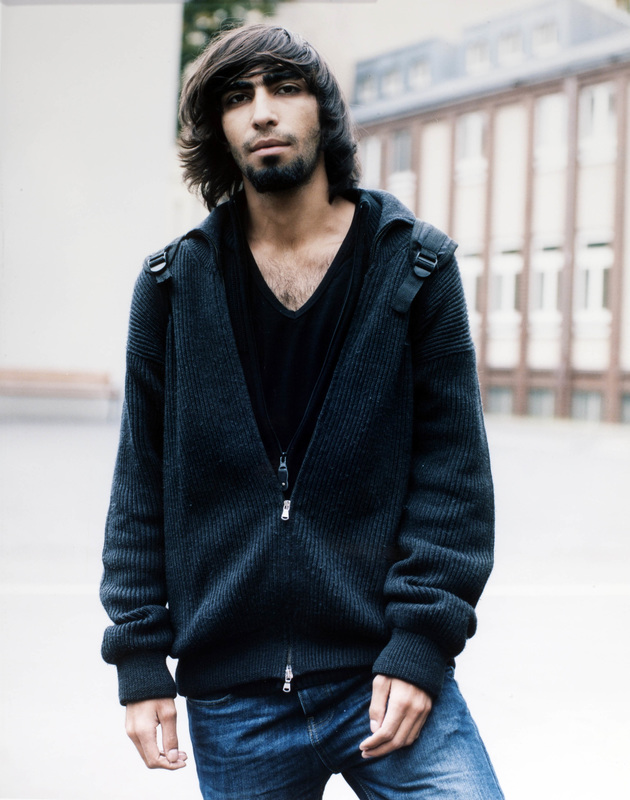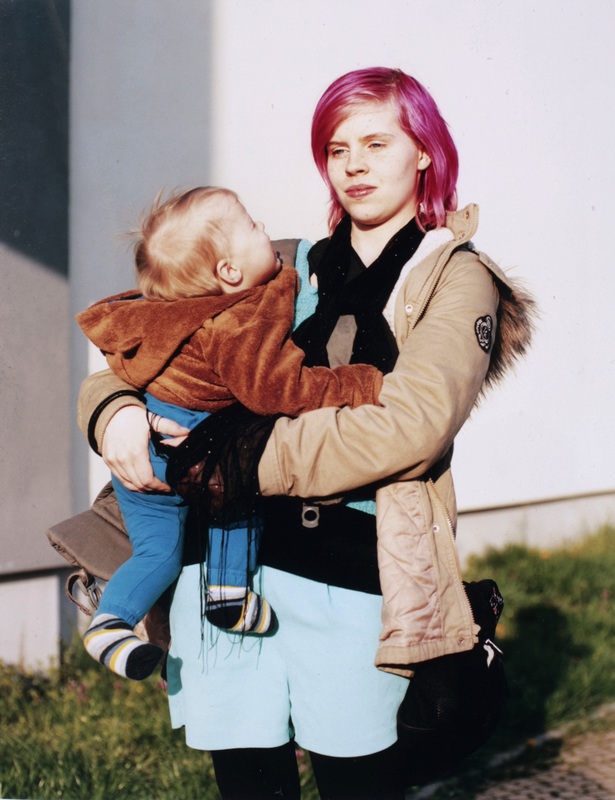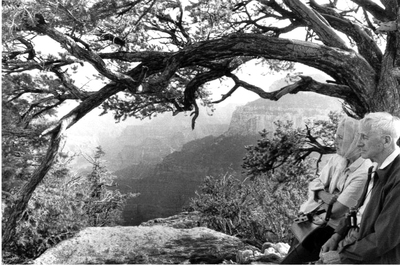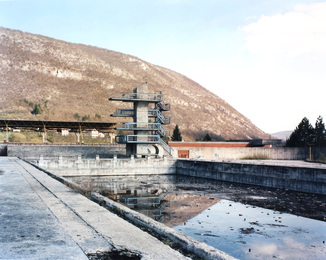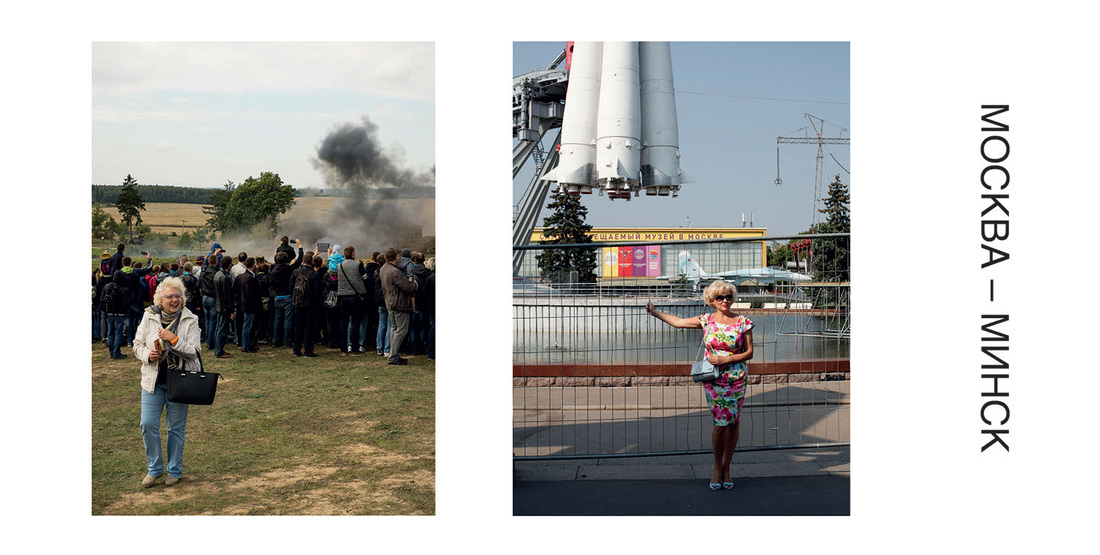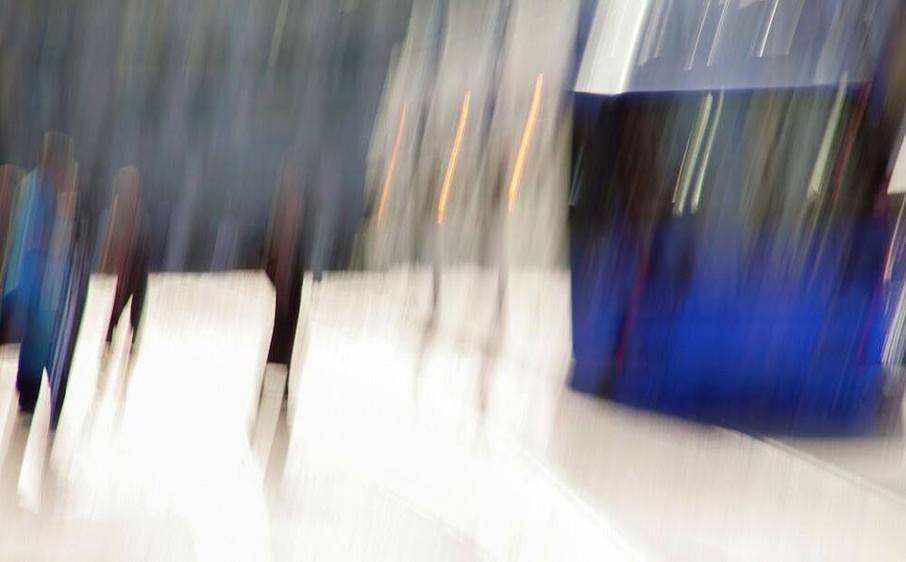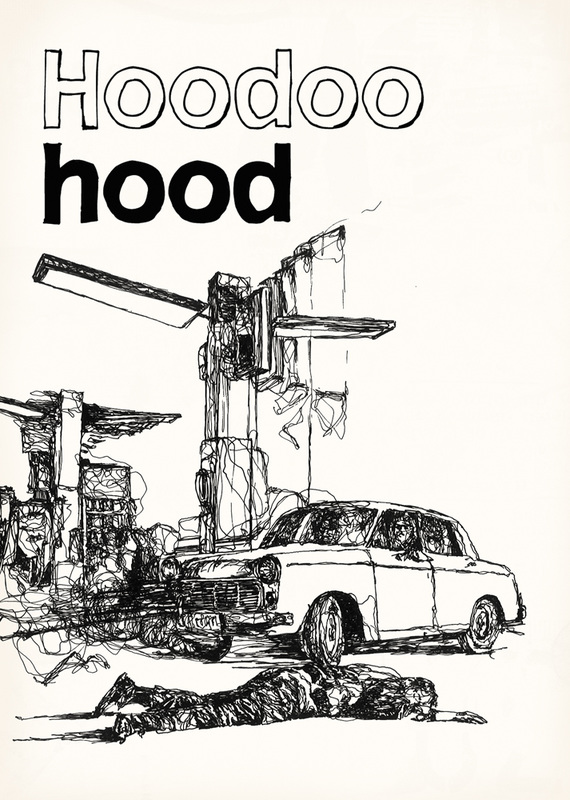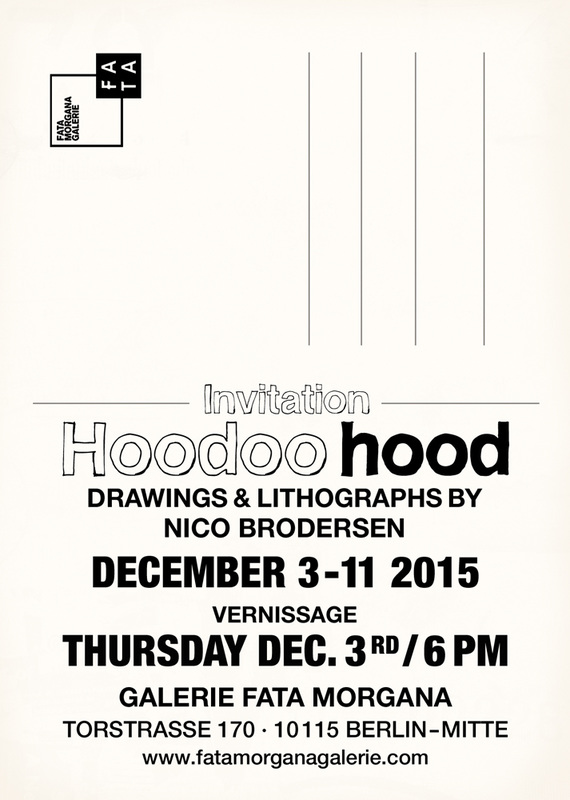Romantic Offenders - Photographien
2. - 13. September 2020
Eröffnung Mittwoch 2.September 18.30 Uhr
M.A Littler & Django's Flying Portrait Machine
|
M.A Littlers Fotografien dokumentieren den sinnlich erfassbaren, erfahrbaren Resonanzraum, der an der Schnittstelle zwischen menschlicher Wahrnehmung und mythologischen Strahlkraft entsteht, dem genius loci. Sie sind eine geo-psychologische Reise. Landschaften werden zu einer Echokammer des Inneren, spiegeln die Prozesse des Seins in all seiner Widersprüchlichkeit und Geworfenheit. Ihrer entrückten Schönheit haftet der Nimbus einer post-zivilisatorischen, einer ursprünglichen Welt an. „Ich werde von archaischen Landschaften und den Elementen angezogen. Ich fühle mich dort heimisch, wo die Werke des Menschen vollkommen unbedeutend werden. Der Ozean. Wälder. Wüsten. Berge. Ich bin ein Wanderer. Mein Zuhause ist die Idee. Ich befinde mich immer auf Reise. Die Landschaften, die mich zu meinen Filmen, meiner Literatur und meiner Fotografie inspirieren, sind sowohl Topographien des Ortes wie auch des Geistes, sie bedingen einander." www.slowboatfilms,com |
Django's Flying Portrait Machine ist mobile Großformatfotografie in der Tradition der Bildnisfotografie des 19. Jahrhunderts wie sie auf Jahrmärkten zu finden war aber ebenso in den klassischen Fotostudios mit ihrem Aufbau von Licht und Hintergründen.
Die Bilder entstehen vor Ort, sei es im Freien oder in einem Lokal, auf einem Festival oder in einer Galerie. Jeder, der ein Portrait wünscht, ist gebeten Platz zu nehmen vor einer fast 100 Jahre alten Fachkamera mit Mattscheibe und Balgen. Django richtet die Aufnahme ein, bestückt die Kamera mit der Kassette, zieht den den Schieber aus der Kassette, der das analoge Fotomaterial vor dem Licht schützt und bittet um etwa eine Sekunde Haltung. Den Drahtauslöser in der Hand löst er die Belichtung aus und das langsame Schnappen des Compur- Verschluß beendet die Aufnahme.
Das Bild wird sofort in der mobilen Dunkelkammer mit fotochemischen Verfahren entwickelt, dabei entsteht ein Negativ, das auf ein Positiv umkopiert wird. Keine zwanzig Minuten vergehen und das fertige Portrait kann in die Hand genommen und betrachtet werden. Dabei ist es nicht allein die Revitalisierung alter Technik, was diese Bilder besonders macht. Es ist die Konzentration zwischen den Portraitierten und dem Fotografen, welche diese Bildnisse unwiederholbar werden läßt. Die Bereitschaft der Portraitierten, sich in der Zeitspanne einer Sekunde auf den fotografische Blick Django's einzulassen, und seine Fähigkeit, diese besondere Situation zu nutzen, läßt Bilder entstehen, die über den bloßen Moment der Aufnahme weit hinausgehen. Zoltán Papst, 8/2016 |
Kuratiert von Konstantin Kopietz
Kuratiert von Konstantin Kopietz
JULIEN MENAND
Entartete Kunstfotografie
Beyond anecdotal descriptiveness - RY series
|
|
Kuratiert von Konstantin Kopietz
|
15th PICTOPLASMA International Festival of Character Design and Art
|
A DEPRAVED EXHIBITION OF BLASPHEMY
- VERNISSAGE Friday February 22nd at 6pm -
The occult artist Bruce Stirling John Knox is unleashing his sexually violent imagery on Friday 22 February 2019 – 2 March 2019. The exhibition, DESECRATE THE TEMPLE, is an arranged depiction of ritualized magick of the most disturbing kind. After his recent troubles with the censors over his collection of short stories, BSJK will be hosting a solo exhibition at the Fata Morgana Galerie, Torstrasse 170 Berlin, where free speech is still valued.
In this time of outrage against artistic freedom, BSJK takes a stand against the conformity following the party-line of socially acceptable and state approved expression. His work has always gone head-first into challenging concepts that most contrarians merely dabble in. DESECRATE THE TEMPLE explores occult symbolism from Jerusalem's Temple Mount, to the ruins of Pergamon in Turkey. His exhibition embraces the unknown horrors of childbirth, the devils that lurk within even the most beautiful, and the ultimate prison of flesh that we are all incarnated within. BSJK believes that true individuality comes from dwelling alone in the absolute darkness of yourself, and therefore DESECRATE THE TEMPLE is evidence of exactly that.
Bruce Stirling John Knox is a Scottish artist living in Berlin for the past 13 years. He has held exhibitions since 2001, written books and collections of short stories, as well as being a professional animator. View his work at his website www.b-s-j-k.com.
“ Ordinary morality is only for ordinary people.” Aleister Crowley
Kuratiert von Konstantin Kopietz
BETWEEN THE LIKES
|
Sangare Siemsen, geboren 1962 in Berlin. 1981-86 Studium Malerei an der Hochschule für Grafik und Buchkunst Leipzig, Diplom bei Bernhard Heisig; seit 1986 freischaffend. Nationale und internationale Ausstellungen und Ausstellungs-beteiligungen, u.a. in Schweden und Frankreich.
|
Kuratiert von Konstantin Kopietz
Musterzimmer presents:
|
|
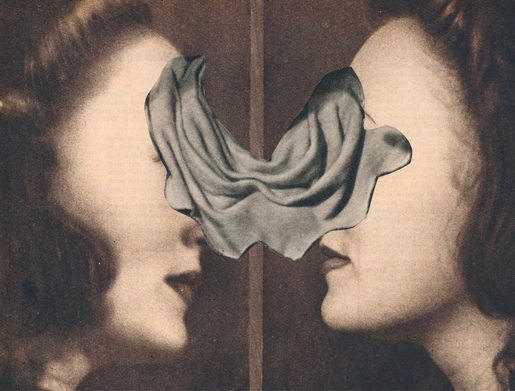
Une semaine de bonté – Eine Woche der Güte
Collagen auf Papier von Natalie Huth, Ronald Lippok, Jutta Scheiner und Majla Zeneli
Vernissage am 06.10.2018 von 19 bis 22 Uhr
Finissage am 13.10.2018 von 18 bis 20 Uhr
täglich vom 07.10. bis 13.10. von 15 bis 20 Uhr geöffnet
Nach der Schließung ihrer Vorzimmerhallen in der Greifswalder Straße präsentiert die Staatsgalerie Prenzlauer Berg ihre zweite Sonderausstellung und ruft "Eine Woche der Güte" aus. Der Titel der Ausstellung "Une semaine de bonté" ist einem 1934 erschienen Collagen-Roman aus der Schere von Max Ernst entliehen. Ernst entdeckte das Motto auf dem Plakat einer Wohltätigkeitsorganisation. Als Titel seines Romans ist die Woche der Güte ein sarkastischer Kommentar zur Schöpfungsgeschichte. Als Anmoderation ausgeschnitten, neu eingepaßt und so für die Staatsgalerie PB nutzbar gemacht, umreisst er zugleich das Genre, die Dauer und die Qualität ihrer aktuellen Ausstellung.
Vom 06.10. bis zum 13.10.2018 lädt die Staatsgalerie PB nun zu einer Präsentation ihrer verzerrten Realität. Das entsprechende Programm der Galerie war nie um einen realistischen Blick auf die Welt verlegen, denn das Phantastische entspricht längst einem real existierenden Surrealismus und ist somit rein dokumentarisch zu verstehen. Beim Blick in den Zerrspiegel bietet sich eine Collage des äusserst wahren Lebens, ein zerschlagenes Kaleidoskop der großen Illusionen. Insofern entspricht der Begriff des phantastischen Realismus einem weissen Schimmel, auf dem der Geist eines Realitätsanspruchs ins erhellende Dunckel reitet, um besser zu sehen. Oder?
Drei Künstlerinnen bzw. insgesamt vier Künstler stellen Collagen aus, ihre Arbeiten vereint dasselbe Genre, welches sie gleichzeitig ausdifferenzieren. Denn die vier Collageure mögen alle die Summe der einzelnen Teile anstreben, doch die Schere im Kopf folgt jeweils anderen Schnittmustern:
Die collages noirs Natalie Huths sind dunkle Familienaufstellungen, ihre Dramen extrahieren sie aus dem dunklen Kern von Ammenmärchen. Die Muster menschlicher Tragödien mögen immer dieselben sein, doch ihre Variationen erzeugen Projektionen wie diese, sie zeugen von großer Intimität und damit von seltener Individualität.
Ronald Lippoks Collagen eröffnen ein Papiertheater, über dessen verzweifelten Komödianten zumeist eine Bedrohung von Gewicht schwebt. Mal ist das Damoklesschwert durch einen verschlossenen Schrank ersetzt, mal durch eine gigantische Klaue, ausgefahren von einer Schicksalsgöttin in den Tiefen der Welttheaterkulissen.
Jutta Scheiners Gesichtsmasken sagen die Vergangenheit der Portraitierten voraus. So wie der Schamane die Knochen des Ameisenbären wirft und aus ihrer Lage eine Vision ableitet, so fügt sie Fragmente zu einem fragenden, doch stimmigen Bild. Allerdings ohne Rücksicht auf erwünschte Antworten.
Majla Zeneli hat das Genre der Collage in die 3-Dimensionalität überführt, um sich von dieser Neuerung dann wieder abzuwenden. Wie in Opposition zur eigenen Schöpfung, gab sie den einmal geschaffenen Raum wieder auf, um in ihren aktuellen Arbeiten in die Abstraktion zu gehen. Im Raum des abstrakten Denkens entstehen nun miteinander kommunizierende Flächen von sinnlicher Strenge.
(Bildnachweis: Natalie Huth, o.T. 2018)
Staatsgalerie Prenzlauer Berg zu Gast in der Fata Morgan Galerie
Torstraße 170, 10115 Berlin
Collagen auf Papier von Natalie Huth, Ronald Lippok, Jutta Scheiner und Majla Zeneli
Vernissage am 06.10.2018 von 19 bis 22 Uhr
Finissage am 13.10.2018 von 18 bis 20 Uhr
täglich vom 07.10. bis 13.10. von 15 bis 20 Uhr geöffnet
Nach der Schließung ihrer Vorzimmerhallen in der Greifswalder Straße präsentiert die Staatsgalerie Prenzlauer Berg ihre zweite Sonderausstellung und ruft "Eine Woche der Güte" aus. Der Titel der Ausstellung "Une semaine de bonté" ist einem 1934 erschienen Collagen-Roman aus der Schere von Max Ernst entliehen. Ernst entdeckte das Motto auf dem Plakat einer Wohltätigkeitsorganisation. Als Titel seines Romans ist die Woche der Güte ein sarkastischer Kommentar zur Schöpfungsgeschichte. Als Anmoderation ausgeschnitten, neu eingepaßt und so für die Staatsgalerie PB nutzbar gemacht, umreisst er zugleich das Genre, die Dauer und die Qualität ihrer aktuellen Ausstellung.
Vom 06.10. bis zum 13.10.2018 lädt die Staatsgalerie PB nun zu einer Präsentation ihrer verzerrten Realität. Das entsprechende Programm der Galerie war nie um einen realistischen Blick auf die Welt verlegen, denn das Phantastische entspricht längst einem real existierenden Surrealismus und ist somit rein dokumentarisch zu verstehen. Beim Blick in den Zerrspiegel bietet sich eine Collage des äusserst wahren Lebens, ein zerschlagenes Kaleidoskop der großen Illusionen. Insofern entspricht der Begriff des phantastischen Realismus einem weissen Schimmel, auf dem der Geist eines Realitätsanspruchs ins erhellende Dunckel reitet, um besser zu sehen. Oder?
Drei Künstlerinnen bzw. insgesamt vier Künstler stellen Collagen aus, ihre Arbeiten vereint dasselbe Genre, welches sie gleichzeitig ausdifferenzieren. Denn die vier Collageure mögen alle die Summe der einzelnen Teile anstreben, doch die Schere im Kopf folgt jeweils anderen Schnittmustern:
Die collages noirs Natalie Huths sind dunkle Familienaufstellungen, ihre Dramen extrahieren sie aus dem dunklen Kern von Ammenmärchen. Die Muster menschlicher Tragödien mögen immer dieselben sein, doch ihre Variationen erzeugen Projektionen wie diese, sie zeugen von großer Intimität und damit von seltener Individualität.
Ronald Lippoks Collagen eröffnen ein Papiertheater, über dessen verzweifelten Komödianten zumeist eine Bedrohung von Gewicht schwebt. Mal ist das Damoklesschwert durch einen verschlossenen Schrank ersetzt, mal durch eine gigantische Klaue, ausgefahren von einer Schicksalsgöttin in den Tiefen der Welttheaterkulissen.
Jutta Scheiners Gesichtsmasken sagen die Vergangenheit der Portraitierten voraus. So wie der Schamane die Knochen des Ameisenbären wirft und aus ihrer Lage eine Vision ableitet, so fügt sie Fragmente zu einem fragenden, doch stimmigen Bild. Allerdings ohne Rücksicht auf erwünschte Antworten.
Majla Zeneli hat das Genre der Collage in die 3-Dimensionalität überführt, um sich von dieser Neuerung dann wieder abzuwenden. Wie in Opposition zur eigenen Schöpfung, gab sie den einmal geschaffenen Raum wieder auf, um in ihren aktuellen Arbeiten in die Abstraktion zu gehen. Im Raum des abstrakten Denkens entstehen nun miteinander kommunizierende Flächen von sinnlicher Strenge.
(Bildnachweis: Natalie Huth, o.T. 2018)
Staatsgalerie Prenzlauer Berg zu Gast in der Fata Morgan Galerie
Torstraße 170, 10115 Berlin
pretty shiny stuff
Astrid Köppe: Emaillen, Zeichnungen und Objekte.
|
Vernissage: Sonnabend, 22. September 2018, 18 Uhr Öffnungszeiten: Montag 24.9. bis Mittwoch 26.9. von 12 bis 18 Uhr Donnerstag 27.9. bis Samstag 29.9. von 12 bis 20 Uhr Sonntag 30.9. von 12 bis 18 Uhr Weitere Termine bei Bedarf nach Vereinbarung. Sonntag 23.9. geschlossen |
Vernissage: Saturday September 22, 2018, 6 pm opening hours: Monday 24 - Wednesday 26 12-6 pm Thursday 27 - Saturday 29 12-8 pm Sunday 30 12-6 pm and by appointment. Sunday 23 closed. |
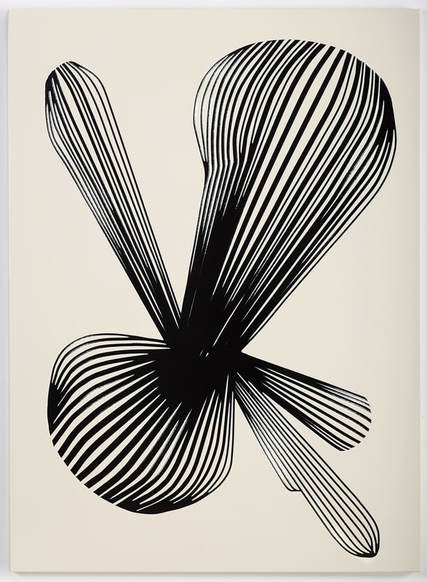
Die Schönheit des Schimmels
Brasilien 1929: Während seiner ersten Südamerikareise fliegt Le Corbusier auch über die Regenwälder am Amazonas. Doch das schier unendliche Grün erfüllt den französischen Architekten weder mit Ehrfurcht noch mit Begeisterung. Im Gegenteil. Die Wälder erinnern ihn an den „schrecklichen Schimmel“ in den Marmeladengläsern seiner Mutter. Und so wird er in seinen ein Jahr später erschienenen Précisions schreiben, die Regenwälder seien der „Schimmel der Erde“. Für einen Mann, der vom „Maschinenzeitalter-Menschen in der Strahlenden Stadt“ träumt, ist das Organische, das unkontrolliert Wuchernde eine Provokation – die Antithese zur seinem absolut rational geprägten Bild der Moderne und der Welt.
Schimmelpilze wachsen nicht nur auf Marmeladen, Früchten oder der menschlichen Haut. Sogar einige Kunststoffe können ihnen als Substrat dienen. In der Natur übernehmen sie eine wichtige Aufgabe: Ihre feinen, fadenartigen Mycelien sorgen für den Abbau organischer Stoffe. Schimmel – das bedeutet Zersetzung und Vergänglichkeit. Wie Körpersekrete, Leichen, Spinnen oder die Haut auf der Milch gehört Schimmel in das Reich des Abjekten. Der von der Literaturtheoretikerin und Psychoanalytikerin Julia Kristeva entwickelte Begriff bezeichnet Dinge, mit denen man sich nur ungern beschäftigt, die Ekel und Aversion hervorrufen, tabuisiert sind. Schimmel erinnert uns daran, dass das Leben bereits vom Tod infiziert ist.
Als sich Astrid Köppe 2011 für ein Stipendium am Young Eun Museum of Contemporary Art im südkoreanischen Gwangju aufhielt, herrschte dort gerade der heftigste Monsun seit 100 Jahren. Es war heiß, feucht, überall begann es zu schimmeln. „Ich war hin und hergerissen zwischen Ekel und Faszination. Eigentlich habe ich eine Schimmelallergie und sollte Abstand wahren, doch die Texturen, Farben und die Wachstumsstrukturen waren einfach zu interessant.“ Auch ihr Zeichentisch wurde von den Pilzen befallen. Zudem weichte die massive Luftfeuchtigkeit die Buntstifte auf und ließ das Papier klamm werden. So gehandicapt verabschiedete sie sich kurzfristig vom Zeichnen, ihrem favorisierten künstlerischen Medium, und entwickelte mit dem „Kompangi Piece“ ihre erste Wandinstallation: Eine Armada von auf Seidennadeln aufgespießten Styroporkügelchen, die sich anschickte, den Ausstellungsraum zu erobern – wie eine Kolonie von Schimmelpilzen. Kompangi ist dann auch das koreanische Wort für Schimmel. Aus manchen Kügelchen sprossen weitere Nadeln mit noch kleineren Kügelchen heraus: Ableger, die für die Ausbreitung der Spezies sorgen. Zugleich erinnerten diese zarten Objekte an ein Heer von Fühlern oder Tentakeln, die Kontakt mit ihrer Umwelt aufnehmen.
Das „Kompangi Piece“ vereint zahlreiche für die Arbeit von Astrid Köppe charakteristische Elemente: Das Interesse am Organischen. Die Arbeit mit Materialien, die im Kunstkontext eher unüblich sind. (So beklebt sie für „Baran I“ einen Leuchtkasten mit den grünen Kunststoffblättchen, die sonst zur Dekoration von Sushi dienen oder zeichnet bei den Objekten aus der Serie „Little Ghosts“ mit Vaseline.) Das subtile Spiel mit Licht und Schatten (Die Nadeln und Bällchen werfen zarte Schatten auf die Wand, die wie eine Zeichnung wirken). Die Akribie und Sorgfalt, mit der sie ihre Objekte und Zeichnungen anfertigt. Vor allem aber zeigt sich auch hier die Ambivalenz, die viele ihrer Arbeiten auszeichnet, das Changieren zwischen Ästhetischem und Abstoßendem: „Ich mag es, wenn es kippt – etwa zwischen schön und eklig“.
Mit dieser Ambivalenz spielen auch Köppes „Little Furs“ – 10 künstliche Fingernägel, die sie mit künstlichen Wimpern beklebt hat. Die behaarten Nägel werden wie Luxusobjekte auf Samt gebettet in einer Vitrine präsentiert, aber auch als modische Accessoires: Auf einer Serie von Fotoarbeiten, die Werbung und Modestrecken aus Hochglanzmagazinen nachempfunden sind, trägt die perfekt geschminkte Künstlerin ihre „Little Furs“ als Fingerschmuck. Das sieht völlig absurd aus und lässt an „Déjeuner en fourrure“ denken, Meret Oppenheims 1936 gefertigte Pelztasse, die zu einer der Ikonen des Surrealismus wurde. Der Spaß an der Irritation und der abgründige Humor verbinden beide Künstlerinnen. Auch Oppenheims Motto „Mit ganz enorm wenig viel" dürfte Köppe gefallen.
Doch wo Oppenheim „nur“ ein Alltagsobjekt surreal verfremdet, zielt Köppe tiefer – auf Schönheitsideale, Körperbilder und die Ängste, die damit verbunden sind. Haare an den „falschen“ Stellen gelten als ungepflegt, sind tabuisiert, werden rasiert, gezupft, epiliert. Sprießen sie plötzlich aus Fingernägeln, kann dies heftige, manchmal fast körperliche Abwehrreaktionen hervorrufen. Die Kombination künstlicher Fingernägeln und Wimpern, also völlig banaler Objekte, hat eine durchschlagende Wirkung. Es geht Köppe um das Triggern von Reaktionsmustern, die in vielen Menschen angelegt sind. Nicht umsonst überlegt sie, ein Projekt zum Thema Spinnenphobie zu machen, bei dem, denkt man etwa an Vogelspinnen, auch wieder Haare eine Rolle spielen.
Die Abwehrreaktionen auf ihre Arbeiten können aber auch religiös motiviert sein. Köppe verbrachte den Winter 2012/13 in Kuala Lumpur, der Hauptstadt von Malaysia, und wurde dort zur Triennale eingeladen. Mit ihrem Titel „Barricade“ reagierte die Ausstellung auf die angespannte politische Lage in dem überwiegend von Muslimen bewohnten Land. Als Beitrag fertigte Köppe ihre ganz eigene Barrikade, „The Armour Piece“, eine Art Rüstung aus Rattan. Sie wird von weißen Kabelbindern zusammengehalten, deren abstehende Enden Stacheln gleichen. Doch die eigentliche Abwehrkraft dieser Barrikade, die ihren Träger fast von allen Seiten vor Angriffen schützt, resultiert aus einem anderen Bestandteil – aus den Büscheln von Schweineborsten, die zwischen den Kabelbindern kleben. Für Muslime sind Schweine nicht halal, also verboten. Muslimische Polizisten hätten das Gestell deshalb nicht berühren dürfen. Als ihnen klar wurde, was Köppe hier verarbeitet hat, wichen auch viele Triennale-Besucher vor dem Objekt zurück – so als sei es von einem unsichtbaren Kraftfeld umgeben.
Der Schattenwurf ihrer stacheligen Barrikade faszinierte Köppe so sehr, dass sie für die Ausstellung „Extending Ideas“ (2016, Kuala Lumpur & Penang) ein diesmal mit schwarzen Kabelbindern besetztes Rattanobjekt anfertigte. Das Oval mit seinen dunklen Plastikhaaren hat keinen Titel, der die Assoziationen des Betrachters in eine bestimmte Richtung lenken würde. Man kann an das vergrößerte Modell eines Virus denken, das Skelett eines Seeigels, ein Steinzeit-Ufo oder an eines der zahlreichen rätselhaften Objekte auf den Zeichnungen der Künstlerin, von denen hier eines den Sprung in die Dreidimensionalität geschafft zu haben scheint.
Das Motiv der Haare, aber auch ihr Assoziationspotential verbindet diese Skulptur mit Köppes Zeichnungen, die ebenfalls stets unbetitelt sind. Sie zeigen Objekte, bei denen man nie genau sagen kann, um was es sich eigentlich handelt. Seltsame Hybride zwischen Tier, Pflanze, Bakterium, Mineral oder Ding, mal biomorph, mal kristallin, häufig mit Härchen, Tentakeln oder Fühlern ausgestattet. Ganz selbstverständlich vereinigt sich Scharfkantiges mit Rundem, Räumliches mit Flächigem. Immer wieder baut Köppe Irritationsmomente ein, Räumlichkeiten, die sich widersprechen, die, wie sie es formuliert, zwischen Klarheit und totaler Unklarheit hin und her kippen.
Auch hier die für Köppe so typische Ambivalenz: Manche dieser Objekte sind außerordentlich elegant und dekorativ, andere wirken fast abstoßend, so als wären sie von einer tropischen Hautkrankheit befallen. Es gibt Blobs, denen beim Aufplatzen ganz andere Kreaturen entspringen könnten, und latent perverse Tierchen, deren abgeschnürte Gliedmaßen an Hans Bellmers Poupée erinnern. Oder doch an eine Amöbe? Eine seltsame Seekuh? Die Künstlerin hat jedenfalls eine Vorliebe für merkwürdig geformte Kreaturen: „Ich mag beidseitig spitzzulaufende Tiere, Robben, Seekühe, Pangoline oder Ameisenbären.“
Die handwerkliche Perfektion der Zeichnungen ist essentiell für ihre Wirkung. Die Präzision, mit der Köppe die Objekte aufs Papier bringt, verleiht ihnen eine immense Präsenz. Zugleich suggeriert sie, dass das, was hier so realistisch abgebildet wird, auch tatsächlich existiert. Doch in Wirklichkeit handelt es sich immer um Ergebnisse eines Transformationsprozesses im Kopf der Künstlerin. „Ich sehe etwas, dann schaltet sich ein Filter davor und ich sehe es als Zeichnung sehr klar vor meinem inneren Auge, sodass ich es im Atelier nur noch abrufen muss. Die Zeichnung ist eine Art persönliche Essenz eines Objekts, das ich gesehen habe – das kann ebenso gut ein Küchenutensil wie ein Insekt sein.“
Für den Betrachter entsteht ein Moment der Irritation, eine Art kognitive Dissonanz. Er versucht, das, was er auf der Zeichnung so präzise vor sich sieht, mit dem, was er kennt, abzugleichen. Er versucht es einzuordnen, zu benennen, um die Spannung aufzulösen zwischen dem so real erscheinenden Objekt und der Unmöglichkeit, es zu identifizieren. Das führt dazu, dass die Betrachter ganz eigene Bezeichnungen für diese Objekte erfinden. Es entstehen so Wortschöpfungen wie Rattenschwanz-UFO, Nasenzungen oder Fischwimpern. Nicht umsonst hat Köppe zwei ihrer Ausstellungen – 2013 in der galerie weisser elefant, Berlin und 2014 in der Galerie Arte Giani, Frankfurt a.M. – „Pareidolia" genannt. Pareidolie bezeichnet das psychologische Phänomen, in Dingen und Naturphänomenen etwas Vertrautes zu erkennen, etwa wenn eine Wolke plötzlich an ein Gesicht oder einen Raubvogel erinnert.
So wie Josef Albers auf den mehr als 1.000 Arbeiten seiner Serie „Homage to the Square“ (1950-76) anhand farbiger, ineinander verschachtelter Quadrate die Interaktion von Farben erforschte, erkundet Köppe auf ihren mittlerweile weit über 3.000 Zeichnungen die Bewohner eines fiktiven Kosmos. Im Augenblick plant sie ein Projekt mit einem Biologen und Taxonomen, dessen Spezialgebiet die Nomenklatur ist, die strengen Regeln unterliegende Disziplin der Benennung von Lebewesen. Er kann den nichtexistenten Lebewesen wissenschaftlich korrekt Namen geben. Wie in einem biologischen Lehrbuch sollen sie klassifiziert werden, anhand von Stammbäumen gibt es dann einen Überblick über Ordnungen, Familien, Gattungen und Arten, etwa eine „Genealogie des Haarigen“ zu dem die Gattungen des Flauschigen, Flaumigen, Stacheligen, Borstigen und Pelzigen gehören.
Diese Nomenklatur unterstreicht wiederum den Anschein von Realität. Der Eindruck einer wissenschaftlichen Systematik wird durch Köppes Entscheidung, ausschließlich auf DIN A4-Blättern im Hochformat zu arbeiten, verstärkt. Die Zeichnungen erinnern an Tafeln aus einem Biologiebuch, auf denen jeweils eine Spezies abgebildet ist. Zugleich lässt das gleichbleibende Format ihre Präsentationen ruhiger und einheitlicher erscheinen. Durch seine Allgegenwärtigkeit wirkt das DIN A4-Format außerdem extrem neutral. Werden bei Leinwänden frei gelassene oder weiße Flächen meist mit „nicht vollendet“ assoziiert, ist ein weißer Hintergrund bei Papierarbeiten absolut selbstverständlich.
Die Zeichnung ist das zentrale Medium in Astrid Köppes Werk. Häufig werden Papierarbeiten als Skizzen, Studien und Entwürfe betrachtet, doch ihre DIN A4-Blätter sind in sich abgeschlossene Werke. Ihre akribische Genauigkeit steht in diametralem Gegensatz zu allen expressiven Gesten, die Köppe auch an der Malerei störten. Bereits während des Studiums an der Hochschule für Bildende Künste Braunschweig begann sie mit der Malerei zu hadern, 2004 verabschiedete sie sich dann ganz von diesem Medium. Bei ihrer Suche nach Alternativen zur Leinwand, nach einem völlig neutralen Raum für ihre Schöpfungen, experimentierte Köppe mit unterschiedlichen Bildträgern, bis sie 2005 mit Emaille ein für ihre Arbeit ideales Material fand. Nicht nur der glatte weiße Hintergrund verbindet sie mit dem Papier. Auch sie erfordert eine präzise, geplante Arbeitsweise, wobei die Möglichkeiten zu einer nachträglichen Korrektur hier noch wesentlich beschränkter sind als bei den Zeichnungen.
Die aufwendige Fertigung der Emaille-Arbeiten erfolgt in einem Industriebetrieb. Schwarz emaillierte Stahlbleche werden mit Papier beklebt, worauf Köppe ihr Motiv zeichnet, um es dann mit dem Cutter auszuschneiden. Die Bleche werden mit cremeweißer Deckemaille, deren Ton dem ihres Zeichenpapiers sehr nahe kommt, überspritzt, wonach die Schablonen entfernt werden. Die feuchte Emaille kann bei Bedarf noch nachbearbeitet werden kann. So versieht sie die Künstler bei manchen Arbeiten noch mit Ritzungen. Nach der Trocknung wird sie senkrecht hängend in einem Ofen bei 900 Grad gebrannt. In dem weißen Grund bleiben die vom Papier abgedeckten Flächen und Linien als schwarze Zeichnung stehen. Jede zusätzliche Farbe muss dann einzeln in weiteren Arbeitsschritten angelegt und gebrannt werden.
Auch auf den von 100 x 90 bis 180 x 140 cm großen Emaillen begegnet man Köppes biomorphen Formen, doch sie erscheinen vereinfachter, signalhafter, da die Künstlerin hier nicht mit so feinen Linien, Strukturen und Schattierungen wie bei den Zeichnungen auf Papier arbeiten kann. Stattdessen besitzen die Emaillen auf Grund ihrer Materialität einen starken Objektcharakter. Während die empfindlichen Zeichnungen durch Museumsglas oder die Aufbewahrung in den dunklen Schubladen von Grafikschränken geschützt werden müssen, trotzen die Emaillen Wind und Wetter. Wie Verkehrsschilder können sie problemlos im Außenraum installiert werden. Ihre klar zu erkennenden Motive lassen an Piktogramme denken, doch wie die Zeichnungen, Installationen und Objekte von Astrid Köppe verweigern sie sich eindeutigen Botschaften, bewahren einen Rest von Geheimnis. Sie gleichen vielmehr Wegweisern in ein Territorium, in dem man nicht nur die Mechanismen seiner Wahrnehmung überprüfen, sondern auch die Schönheit des Schimmels entdecken kann.
Achim Drucks
Kuratiert von Konstantin Kopietz
Brasilien 1929: Während seiner ersten Südamerikareise fliegt Le Corbusier auch über die Regenwälder am Amazonas. Doch das schier unendliche Grün erfüllt den französischen Architekten weder mit Ehrfurcht noch mit Begeisterung. Im Gegenteil. Die Wälder erinnern ihn an den „schrecklichen Schimmel“ in den Marmeladengläsern seiner Mutter. Und so wird er in seinen ein Jahr später erschienenen Précisions schreiben, die Regenwälder seien der „Schimmel der Erde“. Für einen Mann, der vom „Maschinenzeitalter-Menschen in der Strahlenden Stadt“ träumt, ist das Organische, das unkontrolliert Wuchernde eine Provokation – die Antithese zur seinem absolut rational geprägten Bild der Moderne und der Welt.
Schimmelpilze wachsen nicht nur auf Marmeladen, Früchten oder der menschlichen Haut. Sogar einige Kunststoffe können ihnen als Substrat dienen. In der Natur übernehmen sie eine wichtige Aufgabe: Ihre feinen, fadenartigen Mycelien sorgen für den Abbau organischer Stoffe. Schimmel – das bedeutet Zersetzung und Vergänglichkeit. Wie Körpersekrete, Leichen, Spinnen oder die Haut auf der Milch gehört Schimmel in das Reich des Abjekten. Der von der Literaturtheoretikerin und Psychoanalytikerin Julia Kristeva entwickelte Begriff bezeichnet Dinge, mit denen man sich nur ungern beschäftigt, die Ekel und Aversion hervorrufen, tabuisiert sind. Schimmel erinnert uns daran, dass das Leben bereits vom Tod infiziert ist.
Als sich Astrid Köppe 2011 für ein Stipendium am Young Eun Museum of Contemporary Art im südkoreanischen Gwangju aufhielt, herrschte dort gerade der heftigste Monsun seit 100 Jahren. Es war heiß, feucht, überall begann es zu schimmeln. „Ich war hin und hergerissen zwischen Ekel und Faszination. Eigentlich habe ich eine Schimmelallergie und sollte Abstand wahren, doch die Texturen, Farben und die Wachstumsstrukturen waren einfach zu interessant.“ Auch ihr Zeichentisch wurde von den Pilzen befallen. Zudem weichte die massive Luftfeuchtigkeit die Buntstifte auf und ließ das Papier klamm werden. So gehandicapt verabschiedete sie sich kurzfristig vom Zeichnen, ihrem favorisierten künstlerischen Medium, und entwickelte mit dem „Kompangi Piece“ ihre erste Wandinstallation: Eine Armada von auf Seidennadeln aufgespießten Styroporkügelchen, die sich anschickte, den Ausstellungsraum zu erobern – wie eine Kolonie von Schimmelpilzen. Kompangi ist dann auch das koreanische Wort für Schimmel. Aus manchen Kügelchen sprossen weitere Nadeln mit noch kleineren Kügelchen heraus: Ableger, die für die Ausbreitung der Spezies sorgen. Zugleich erinnerten diese zarten Objekte an ein Heer von Fühlern oder Tentakeln, die Kontakt mit ihrer Umwelt aufnehmen.
Das „Kompangi Piece“ vereint zahlreiche für die Arbeit von Astrid Köppe charakteristische Elemente: Das Interesse am Organischen. Die Arbeit mit Materialien, die im Kunstkontext eher unüblich sind. (So beklebt sie für „Baran I“ einen Leuchtkasten mit den grünen Kunststoffblättchen, die sonst zur Dekoration von Sushi dienen oder zeichnet bei den Objekten aus der Serie „Little Ghosts“ mit Vaseline.) Das subtile Spiel mit Licht und Schatten (Die Nadeln und Bällchen werfen zarte Schatten auf die Wand, die wie eine Zeichnung wirken). Die Akribie und Sorgfalt, mit der sie ihre Objekte und Zeichnungen anfertigt. Vor allem aber zeigt sich auch hier die Ambivalenz, die viele ihrer Arbeiten auszeichnet, das Changieren zwischen Ästhetischem und Abstoßendem: „Ich mag es, wenn es kippt – etwa zwischen schön und eklig“.
Mit dieser Ambivalenz spielen auch Köppes „Little Furs“ – 10 künstliche Fingernägel, die sie mit künstlichen Wimpern beklebt hat. Die behaarten Nägel werden wie Luxusobjekte auf Samt gebettet in einer Vitrine präsentiert, aber auch als modische Accessoires: Auf einer Serie von Fotoarbeiten, die Werbung und Modestrecken aus Hochglanzmagazinen nachempfunden sind, trägt die perfekt geschminkte Künstlerin ihre „Little Furs“ als Fingerschmuck. Das sieht völlig absurd aus und lässt an „Déjeuner en fourrure“ denken, Meret Oppenheims 1936 gefertigte Pelztasse, die zu einer der Ikonen des Surrealismus wurde. Der Spaß an der Irritation und der abgründige Humor verbinden beide Künstlerinnen. Auch Oppenheims Motto „Mit ganz enorm wenig viel" dürfte Köppe gefallen.
Doch wo Oppenheim „nur“ ein Alltagsobjekt surreal verfremdet, zielt Köppe tiefer – auf Schönheitsideale, Körperbilder und die Ängste, die damit verbunden sind. Haare an den „falschen“ Stellen gelten als ungepflegt, sind tabuisiert, werden rasiert, gezupft, epiliert. Sprießen sie plötzlich aus Fingernägeln, kann dies heftige, manchmal fast körperliche Abwehrreaktionen hervorrufen. Die Kombination künstlicher Fingernägeln und Wimpern, also völlig banaler Objekte, hat eine durchschlagende Wirkung. Es geht Köppe um das Triggern von Reaktionsmustern, die in vielen Menschen angelegt sind. Nicht umsonst überlegt sie, ein Projekt zum Thema Spinnenphobie zu machen, bei dem, denkt man etwa an Vogelspinnen, auch wieder Haare eine Rolle spielen.
Die Abwehrreaktionen auf ihre Arbeiten können aber auch religiös motiviert sein. Köppe verbrachte den Winter 2012/13 in Kuala Lumpur, der Hauptstadt von Malaysia, und wurde dort zur Triennale eingeladen. Mit ihrem Titel „Barricade“ reagierte die Ausstellung auf die angespannte politische Lage in dem überwiegend von Muslimen bewohnten Land. Als Beitrag fertigte Köppe ihre ganz eigene Barrikade, „The Armour Piece“, eine Art Rüstung aus Rattan. Sie wird von weißen Kabelbindern zusammengehalten, deren abstehende Enden Stacheln gleichen. Doch die eigentliche Abwehrkraft dieser Barrikade, die ihren Träger fast von allen Seiten vor Angriffen schützt, resultiert aus einem anderen Bestandteil – aus den Büscheln von Schweineborsten, die zwischen den Kabelbindern kleben. Für Muslime sind Schweine nicht halal, also verboten. Muslimische Polizisten hätten das Gestell deshalb nicht berühren dürfen. Als ihnen klar wurde, was Köppe hier verarbeitet hat, wichen auch viele Triennale-Besucher vor dem Objekt zurück – so als sei es von einem unsichtbaren Kraftfeld umgeben.
Der Schattenwurf ihrer stacheligen Barrikade faszinierte Köppe so sehr, dass sie für die Ausstellung „Extending Ideas“ (2016, Kuala Lumpur & Penang) ein diesmal mit schwarzen Kabelbindern besetztes Rattanobjekt anfertigte. Das Oval mit seinen dunklen Plastikhaaren hat keinen Titel, der die Assoziationen des Betrachters in eine bestimmte Richtung lenken würde. Man kann an das vergrößerte Modell eines Virus denken, das Skelett eines Seeigels, ein Steinzeit-Ufo oder an eines der zahlreichen rätselhaften Objekte auf den Zeichnungen der Künstlerin, von denen hier eines den Sprung in die Dreidimensionalität geschafft zu haben scheint.
Das Motiv der Haare, aber auch ihr Assoziationspotential verbindet diese Skulptur mit Köppes Zeichnungen, die ebenfalls stets unbetitelt sind. Sie zeigen Objekte, bei denen man nie genau sagen kann, um was es sich eigentlich handelt. Seltsame Hybride zwischen Tier, Pflanze, Bakterium, Mineral oder Ding, mal biomorph, mal kristallin, häufig mit Härchen, Tentakeln oder Fühlern ausgestattet. Ganz selbstverständlich vereinigt sich Scharfkantiges mit Rundem, Räumliches mit Flächigem. Immer wieder baut Köppe Irritationsmomente ein, Räumlichkeiten, die sich widersprechen, die, wie sie es formuliert, zwischen Klarheit und totaler Unklarheit hin und her kippen.
Auch hier die für Köppe so typische Ambivalenz: Manche dieser Objekte sind außerordentlich elegant und dekorativ, andere wirken fast abstoßend, so als wären sie von einer tropischen Hautkrankheit befallen. Es gibt Blobs, denen beim Aufplatzen ganz andere Kreaturen entspringen könnten, und latent perverse Tierchen, deren abgeschnürte Gliedmaßen an Hans Bellmers Poupée erinnern. Oder doch an eine Amöbe? Eine seltsame Seekuh? Die Künstlerin hat jedenfalls eine Vorliebe für merkwürdig geformte Kreaturen: „Ich mag beidseitig spitzzulaufende Tiere, Robben, Seekühe, Pangoline oder Ameisenbären.“
Die handwerkliche Perfektion der Zeichnungen ist essentiell für ihre Wirkung. Die Präzision, mit der Köppe die Objekte aufs Papier bringt, verleiht ihnen eine immense Präsenz. Zugleich suggeriert sie, dass das, was hier so realistisch abgebildet wird, auch tatsächlich existiert. Doch in Wirklichkeit handelt es sich immer um Ergebnisse eines Transformationsprozesses im Kopf der Künstlerin. „Ich sehe etwas, dann schaltet sich ein Filter davor und ich sehe es als Zeichnung sehr klar vor meinem inneren Auge, sodass ich es im Atelier nur noch abrufen muss. Die Zeichnung ist eine Art persönliche Essenz eines Objekts, das ich gesehen habe – das kann ebenso gut ein Küchenutensil wie ein Insekt sein.“
Für den Betrachter entsteht ein Moment der Irritation, eine Art kognitive Dissonanz. Er versucht, das, was er auf der Zeichnung so präzise vor sich sieht, mit dem, was er kennt, abzugleichen. Er versucht es einzuordnen, zu benennen, um die Spannung aufzulösen zwischen dem so real erscheinenden Objekt und der Unmöglichkeit, es zu identifizieren. Das führt dazu, dass die Betrachter ganz eigene Bezeichnungen für diese Objekte erfinden. Es entstehen so Wortschöpfungen wie Rattenschwanz-UFO, Nasenzungen oder Fischwimpern. Nicht umsonst hat Köppe zwei ihrer Ausstellungen – 2013 in der galerie weisser elefant, Berlin und 2014 in der Galerie Arte Giani, Frankfurt a.M. – „Pareidolia" genannt. Pareidolie bezeichnet das psychologische Phänomen, in Dingen und Naturphänomenen etwas Vertrautes zu erkennen, etwa wenn eine Wolke plötzlich an ein Gesicht oder einen Raubvogel erinnert.
So wie Josef Albers auf den mehr als 1.000 Arbeiten seiner Serie „Homage to the Square“ (1950-76) anhand farbiger, ineinander verschachtelter Quadrate die Interaktion von Farben erforschte, erkundet Köppe auf ihren mittlerweile weit über 3.000 Zeichnungen die Bewohner eines fiktiven Kosmos. Im Augenblick plant sie ein Projekt mit einem Biologen und Taxonomen, dessen Spezialgebiet die Nomenklatur ist, die strengen Regeln unterliegende Disziplin der Benennung von Lebewesen. Er kann den nichtexistenten Lebewesen wissenschaftlich korrekt Namen geben. Wie in einem biologischen Lehrbuch sollen sie klassifiziert werden, anhand von Stammbäumen gibt es dann einen Überblick über Ordnungen, Familien, Gattungen und Arten, etwa eine „Genealogie des Haarigen“ zu dem die Gattungen des Flauschigen, Flaumigen, Stacheligen, Borstigen und Pelzigen gehören.
Diese Nomenklatur unterstreicht wiederum den Anschein von Realität. Der Eindruck einer wissenschaftlichen Systematik wird durch Köppes Entscheidung, ausschließlich auf DIN A4-Blättern im Hochformat zu arbeiten, verstärkt. Die Zeichnungen erinnern an Tafeln aus einem Biologiebuch, auf denen jeweils eine Spezies abgebildet ist. Zugleich lässt das gleichbleibende Format ihre Präsentationen ruhiger und einheitlicher erscheinen. Durch seine Allgegenwärtigkeit wirkt das DIN A4-Format außerdem extrem neutral. Werden bei Leinwänden frei gelassene oder weiße Flächen meist mit „nicht vollendet“ assoziiert, ist ein weißer Hintergrund bei Papierarbeiten absolut selbstverständlich.
Die Zeichnung ist das zentrale Medium in Astrid Köppes Werk. Häufig werden Papierarbeiten als Skizzen, Studien und Entwürfe betrachtet, doch ihre DIN A4-Blätter sind in sich abgeschlossene Werke. Ihre akribische Genauigkeit steht in diametralem Gegensatz zu allen expressiven Gesten, die Köppe auch an der Malerei störten. Bereits während des Studiums an der Hochschule für Bildende Künste Braunschweig begann sie mit der Malerei zu hadern, 2004 verabschiedete sie sich dann ganz von diesem Medium. Bei ihrer Suche nach Alternativen zur Leinwand, nach einem völlig neutralen Raum für ihre Schöpfungen, experimentierte Köppe mit unterschiedlichen Bildträgern, bis sie 2005 mit Emaille ein für ihre Arbeit ideales Material fand. Nicht nur der glatte weiße Hintergrund verbindet sie mit dem Papier. Auch sie erfordert eine präzise, geplante Arbeitsweise, wobei die Möglichkeiten zu einer nachträglichen Korrektur hier noch wesentlich beschränkter sind als bei den Zeichnungen.
Die aufwendige Fertigung der Emaille-Arbeiten erfolgt in einem Industriebetrieb. Schwarz emaillierte Stahlbleche werden mit Papier beklebt, worauf Köppe ihr Motiv zeichnet, um es dann mit dem Cutter auszuschneiden. Die Bleche werden mit cremeweißer Deckemaille, deren Ton dem ihres Zeichenpapiers sehr nahe kommt, überspritzt, wonach die Schablonen entfernt werden. Die feuchte Emaille kann bei Bedarf noch nachbearbeitet werden kann. So versieht sie die Künstler bei manchen Arbeiten noch mit Ritzungen. Nach der Trocknung wird sie senkrecht hängend in einem Ofen bei 900 Grad gebrannt. In dem weißen Grund bleiben die vom Papier abgedeckten Flächen und Linien als schwarze Zeichnung stehen. Jede zusätzliche Farbe muss dann einzeln in weiteren Arbeitsschritten angelegt und gebrannt werden.
Auch auf den von 100 x 90 bis 180 x 140 cm großen Emaillen begegnet man Köppes biomorphen Formen, doch sie erscheinen vereinfachter, signalhafter, da die Künstlerin hier nicht mit so feinen Linien, Strukturen und Schattierungen wie bei den Zeichnungen auf Papier arbeiten kann. Stattdessen besitzen die Emaillen auf Grund ihrer Materialität einen starken Objektcharakter. Während die empfindlichen Zeichnungen durch Museumsglas oder die Aufbewahrung in den dunklen Schubladen von Grafikschränken geschützt werden müssen, trotzen die Emaillen Wind und Wetter. Wie Verkehrsschilder können sie problemlos im Außenraum installiert werden. Ihre klar zu erkennenden Motive lassen an Piktogramme denken, doch wie die Zeichnungen, Installationen und Objekte von Astrid Köppe verweigern sie sich eindeutigen Botschaften, bewahren einen Rest von Geheimnis. Sie gleichen vielmehr Wegweisern in ein Territorium, in dem man nicht nur die Mechanismen seiner Wahrnehmung überprüfen, sondern auch die Schönheit des Schimmels entdecken kann.
Achim Drucks
Kuratiert von Konstantin Kopietz
Herzliche Einladung zur Ausstellung
|
.You are cordially invited to
|
Musterzimmer and Fata Morgana
|
|
Einladung zur Austellungseröffnung:
Die Ergriffenen
Malerei von Christian Becking Vernissage : Donnerstag 23.August 2018 18 Uhr
Becking malt auf Leinwand seit 2004. Während hier Bilder präsentiert werden, die in etwa im letzten Jahr entstanden sind, fällt bei allen seinen Bildern grundsätzlich auf, dass nur selten keine Menschen zu sehen sind. Menschen sind Beckings Hauptthema. Die Ergriffenen wirken trotz ihrer scheinbaren Einbettung in Landschaften enthoben. Zudem fallen die teilweise extremen Verrenkungen auf, in denen die Figuren auf die Bildoberfläche gebannt sind. Die Energie in den Bildern entspringt der Gleichzeitigkeit von Dynamik der Spannung und Statik der Pose: Passivität, Stillstand, geradezu Starre und Einengung konkurrieren mit Aktion, Bewegung, einem Sich-in-Gang-setzen und Befreiung, oder kurz das, was der Maler selbst „Unbewusstes aus seinem Zustand befreien durch Bewusstmachung“ nennt. Seine Figuren sind zugleich brachial und fragil; nackte, nüchterne Verkörperungen von Urzuständen des Menschen, angedeutet auch durch die sinnbildlichen, archaisch und episch anmutenden Werktitel. Sie sollen roh sein, nicht raffiniert; sie wollen nicht gefallen, klingen dabei an Laozis Ausspruch an, „wahre Worte sich nicht schön, schöne Worte sind nicht wahr.“
Kuratiert von Konstantin Kopietz
Wir laden herzlichst zur Ausstellung
" Dreckige Wunden - Dicke Narben "
mit Arbeiten von
Tom Biber & Stefan Kaminski
Vernissage : Sonnabend, 26.Mai 2018, 19 Uhr
Finisage : Dienstag, 5.Juni 2018, 18 Uhr
"Die Jesuitenzöglinge Biber und Kaminski entdecken kapitale Gräben, in denen Einzelmenschen immer öfter Schutz suchen müssen. Hier trifft man sich. in naher Ferne erscheinen Brücken wie platzende Wundnähte: Lava und Gedärm quellen ans Licht."
Kuratiert von Konstantin Kopietz
Mitte Media Festival 2018
Mitte Media Festival 2018
Friday, April 20 - Saturday, April 21
SITES:::
Fata Morgana
Benhadj & Djilal
Torstrasse 170
and
Z-Bar
Bergstrasse 2
BERLIN, MITTE
MITTE MEDIA FESTIVAL 2018
Join Fata Morgana, Z-Bar, Leo Kuelbs Collection, Benhad & Djilal, BRLO, Chased Magazine, Kunstleben Berlin and Directors Lounge for the second annual MITTE MEDIA FESTIVAL! Lots of performance, art talks and videos of all kinds in the heart of Berlin's Mitte neighborhood.
Mitte Media Festival takes its creative cues from the neighborhood itself: a thriving international scene with its own deep German heart. Berlin-based artists are mixed with a variety of international creators to provide a cross-section of what's going on in the world of video and media art with a pretty heavy German twist!
MITTE MEDIA FESTIVAL 2018 EVENT SCHEDULE:
FRIDAY, April 20
FATA MORGANA
BACK ROOM
4-6 PM
A Selection of work from “CRAP: A Beeple Retrospective”
Run Time: 36 minutes
Online video artist and Internet phenomenon Beeple creates new works daily. See a selection of Beeple’s work culled from “CRAP: A Beeple Retrospective,” presented earlier this year at Made in New York Media Center by IFP in NYC.
Curated by Thomas D. Rotenberg
6-8 PM
"Berlin-based: Video Mix"
Run Time: TBD/Looping
Playlist: I-Am-Johannes, "Urban Landscapes," 2:09, 2017: Juliane Ebner - "Tage Und Nächte," 5:00, 2017; Johanna Keimeyer, "Death Of The Moment," 2:18, Teresa Delgado, "Verbosen Movimiento," 6:36, 2017; Nina E. Shönefeld, "The Rise of Black Wolf," 6:61, 2016; Saebom Kim, "Haiku," 6:16, 2015; Ma Yongfeng, "The Swirl," 15:06, 2002
A selection of videos by Berlin-based artists. Part of an ongoing series presented at Mitte Media Festival and brought together by the Leo Kuelbs Collection.
8-10 PM
"CINEMATIC CHIMERA – DIRECTOR'S LOUNGE INVADES FATA MORGANA"
Curated by Klaus W. Eisenlohr and Kenton Turk
Introduction by Kenton Turk
Running Order: Andreas Gogol, Xarussel, 2017, DE, 7:02 , Angela Christlieb, Dein Falsches Spiel, 2017, DE, 3:13, Cecelia Chapman, Knuckleshop, 2014 USA, 00:58, Bernd Luetzeler, Untitled, 2017, DE, 8:32, Petra Lottje, Blinde Flecken, 2018, DE, 3:56, Gabriele Stellbaum, Close Huddle, 2017, DE, 4:30, Henry Gwiazda, Knowledge, 2017, USA, 3:05, Verena Kyselka, Omani Songbook, 2016, DE, 13:18, Eric Stewart, Helios, 2018, USA, 5:01, Max Sacker (DT) Belle de Lyon, 10:00, 2012 Jimmy Grima (MT) L-Iblah (The Fool) 10:00 2013, Oded Arad (IL) Bartholomew, 09:08, 2012, Karl F. Stewart (DT/US) Animaux Découpages, 04:33, 2012, Hiroki Mano (JP) Spiritual Meetin’, 05:26, 2016
Live Performance: Tristan Honsinger, Moeko Yamazaki and Woody Hoofer.
Here, DL will be doing a double-dig into its box of flickering tricks, with a program of shorts from both the Berlin International Directors Lounge Festival as well as the Urban Research side of things. There will be new projections as well, including, rumour has it, a mad monkey and film art that literally leaps into the room. Saying more would be telling.... Performers of the night include Tristan Honsinger (cello), Moeko Yamazuki (taiko drum) and the very odd Woody Hoofer (indescribable).
FATA MORGANA
FRONT ROOM
6-7 PM
Caleb Screpnek
"An illustrated book of animal sex facts"
Book Preview
For the presentation, I will show some of the drawings/corresponding stories and discuss the absurdist nature of the book. My interest in this topic is born out of the fact that humans have often found meaning by paralleling the human existence with that of the animal kingdom. Love and sex are bewildering, so fawning over monogamous penguins offers us a kind of comfort. The sharp reality to these fictions leaves us puzzled, amused, and without answers, which is exactly where I'd like my audience to be.
7-9 PM
Daniela Imhoff
"One night in Pjöngjang"
Video installation and Postcards from North Korea
9 PM
Lea Brugnoli
"Conversations with simple objects"
A lamp, a functional object, it´s transformed, for an emotional experience. If I turn on the light, doesn’t mean I want to see things as they really are. Things have to be perceived according to the person which is looking at it. One of the scenarios offers a macro views of the reality. I put textures into motion and transform those textures in abstract and organic video contents. The second scenario offers a projection of the actual object. The audience can influence the abstract experience of the reality. It´s inspired at the time when I was very short-sighted. Since I had the surgery, I can see very good far, but I cannot see things close, as before.
Z-Bar KINO
5-6.25 PM
“In the Other Side, by Her Side”
Run Time: 88 min
Artists: Amanda Teixeira, Ana Paula Pollock, Ananda Aliardi , Andressa Cantergiani, Camila Leichter, Dani Amorim, Daniela Távora, Deni Corsino,Lu Rabello, Lucia Koch, Marina Camargo, Marion Velasco, Natalia Schul, Rochelle Costi, Samy Sfoggia, Sandra Becker, Tula Anagnostopoulos, Viviane Gueller
Ao lado dela, do lado de lá (In the other side, by her side) curated by Elaine Tedesco is a proposal coming from Brazil, that presents contemporary videos of women artists. In the other side, by her side is organized in four interpenetrating axes: videos that are vectors of other works; daily records; video-performances; and fictions.
6.30-7.30 PM
“Art of the Music Video”
Run Time: 45 min
DEBUT::: GAVRIELA, "CREATURES" Directed by RANI MESSIAS!
Playlist: 7fields, "What we have done," I-Am-Johannes, 2018; GAVRIELA, "Creatures," Rani Messias, 2017; Cinema Cinema, "Bomb Plot," David Hall & Thomas D. Rotenberg, 2017; "Nude Dance," Andre Werner, 2005; Tobias Christl, "Take On Me," Daniela Imhoff, 2014; Mary Ocher, "To The Light," Robin Lochmann, 2017; IIVII, "Painless," Josh Graham, 2017; Hindu, "There To Fight," Alina Rudya, 2017; Bankos, “Passzról Passzra,” Glowing Bulbs, 2014; Frances Gumm, "Take and Take," Wolf Vest, 1999; Richard Davis, "Singing A War," I-Am-Johannes, 2017
Musicians and visual artists are natural partners and music videos are a genre where they meet. A selection of promotional and artistic works presented in the rock and roll atmosphere of Z-Bar.
SATURDAY, April 21st
FATA MORGANA
BACK ROOM
4-6 PM
“Japan Parade” (looping video program)
Run Time: 24 minutes
Work by: Kenji Kojima, Momoyo Torimitsu, Kenji Toma, Mami Kosemura, Motokp Wada, ON Megumi Akiyoshi, Yuki Ideguchi+Sigiure Ikeda+Masatora Goya
Curated by Kyoko Sato
A selection of works from some of Japan’s best-known video artists. Originally presented in NYC (2016) as part of the LIGHT YEAR program on the Manhattan Bridge.
6-8 PM
"Berlin-Based: The ZKM Connection"
Run Time: 62 minutes
Introduction by Thomas Zandegiacomo del Bel
Running Order: Susanne Wehr, “re:cut,” 15:00, 2017; Michael Saup, “Vor Sonnenaufgang,” 6:32, 2017; Marcel Schwittlick, “Fourchan Vacation,” 3:05, 2017, Matthias Fritsch, “City of Birds,” 4:30, 2017; Matthias Fritsch, “puremath-resisd,” 7:54, 2017; Matthias Fritsch, “puremath-fantom,” 6:24, 2017; Matthias Fritsch, “Honigbiene à la carte, “ 7:00, 2017, Matthias Fritsch, “Buteo / Flugstudie,” 1:00, 2017; Sina Seiler, “elefant,” 5:16, 2012; Herwig Hoffman, “it fell off a truck,” 5:41, 2011, Herwig Hoffman “A dialogue of Future Archeology,” 1:28, 2016
Screening curated by Thomas Zandegiacomo del Bel
The screening present a selection of Berlin-based artists, which are connected with or have worked at the ZKM | Center for Art and Media in Karlsruhe. The ZKM | Center for Art and Media Karlsruhe is a unique cultural institution worldwide, because it is a place that expands the original tasks of the museum.
8-10 PM
EUROPEAN DEBUT: “Digital Fairy Tales: Chinese Stories”
Run Time: 39 minutes
Introduction by Leo Kuelbs
Artists: Rani Messias + Anna Leevia, Suguru Kieda, Yuki Ideguchi + Isis Salem, Nicole Antebi + Xiren Wang, Lian Mengzhou + Kinga Toth, Nina Sobell +Laura Ortman, BORDOS, Junjie Zhang + Theory, Vivian Qin,
Curated by Leo Kuelbs, Wing Lu + Able Sun
"Digital Fairy Tales: Chinese Stories" is the third installment of the Digital Fairy Tales series, which has appeared in multiple cities since 2016. "Digital Fairy Tales: Chinese Stories" begins with four common aspects of Chinese Mythology: Birth of the Universe, Persistence, Love and Eternity. Artists were presented a set of stories based upon these concepts and asked to interpret the ancient ideas in the digital era.
10 PM
Mitte Media Fest Party!
Brought to you by BRLO
+ Weird and Wonderful Silent Video Program
Playlist:Tomas Eller, "Construction Renderings 02" 2007, 4:19; Maria Naidyonova, "Black Cat," 2018, 1:12; Juliane Pieper, "Tank Of Love" GIF, 2018; Christine Schulz, “Untitled,” 3:12, 2015; Anatoly Rudakov, "Eternal City Rome" 5:10, 2018; Juliane Pieper, "Painting" GIF, 2018; Caspar Stracke, "urban super collider" 2015, 8:27; Eelco Brand, "FW-MOVIE," 2016; Juliane Pieper, "Pussy" GIF, 2018; Kim Joon, “CRADLE SONG - BLUE FISH,” 2009, 5:06
FATA MORGANA
FRONT ROOM
5-7 PM
Adrian Pocobelli
"J.G. Ballard and the Visual Arts"
Public Lecture
Adrian Pocobelli is a Canadian visual artist living in Berlin. He wrote his Master's Thesis on J.G. Ballard's experimental novel 'The Atrocity Exhibition' in 2004, while studying at the University of Saskatchewan. In this lecture, Pocobelli will show the influence of the visual arts, particularly Surrealism, on J.G. Ballard's writing and philosophy.
7-9 PM
Bettina Henningsen and Sandra Ratkovic
"Simply the Best"
Poetry and Photography Projection
Autobiographic poems about life with cancer and chemotherapy. Photos of moments of cruelty, hope, loss and warmth.
Introduction by the artists.
9 PM
Mitte Media Fest Party!
Brought to you by BRLO + Sabrina Basten
“The Kruskal-Carousel “
The investigation of gravity. Paper is a serene and weightless area where everything is possible. A spatial drawing, however, demonstrates that we never see the whole, that we always only perceive perspectives and imagine the rest. In this project animation is the medium to see what influences gravity and time may have on the physical and mental space.
Z-Bar KINO
5-6.30 PM
“DIGITAL FAIRY TALES: Albums One and Two”
Run Time: 70 minutes
Introduction by Leo Kuelbs and Sandra Ratkovic
Artists: ALBUM ONE: Rani Messias + Kinga Toth , Sarah Mock + Daniela Imhoff, Richard Jochum + Kriss Roebling, Integrated Visions + Miss Natasha Enquist, Radka Salmannova, Thomas Rotenberg, Josh Graham; ALBUM TWO: Keegan Luttrell + Justin King, Daniela Kostova + Anna Leevia, Dada Imhoff, Kristian Pedersen + Elke Brauweiler, Anton Marini + Danielle Ezzo, Boris Kralj + Matresanch, Michael McGuirk + Alex Hamadey.
Curated by Leo Kuelbs and Sandra Ratkovic.
For the first time in Berlin “Digital Fairy Tales: Albums One and Two” are presented together. Based upon a selection of German Fairy Tales brought together by Xavier von Schoenwerth in the 19th Century and reinterpreted in the Digital Age, this set of stories recently appeared at the International Short Film Week in Regensburg, Germany and the separate Albums have appeared in over a half dozen sites in Europe and the USA.
6.30- 8 PM
Interactive Video Installation
"Was vom Kino übrig blieb" (What remains from cinema), André Werner, 2018. The first in a series of installations capturing glimpses of cinematica.
AND::::
Benhadj & Djilali
Torstrasse 170
Friday-Sunday
12-6
Hamid Sulaiman - I WISH I WAS A TREE
Friday, April 20 - Saturday, April 21
SITES:::
Fata Morgana
Benhadj & Djilal
Torstrasse 170
and
Z-Bar
Bergstrasse 2
BERLIN, MITTE
MITTE MEDIA FESTIVAL 2018
Join Fata Morgana, Z-Bar, Leo Kuelbs Collection, Benhad & Djilal, BRLO, Chased Magazine, Kunstleben Berlin and Directors Lounge for the second annual MITTE MEDIA FESTIVAL! Lots of performance, art talks and videos of all kinds in the heart of Berlin's Mitte neighborhood.
Mitte Media Festival takes its creative cues from the neighborhood itself: a thriving international scene with its own deep German heart. Berlin-based artists are mixed with a variety of international creators to provide a cross-section of what's going on in the world of video and media art with a pretty heavy German twist!
MITTE MEDIA FESTIVAL 2018 EVENT SCHEDULE:
FRIDAY, April 20
FATA MORGANA
BACK ROOM
4-6 PM
A Selection of work from “CRAP: A Beeple Retrospective”
Run Time: 36 minutes
Online video artist and Internet phenomenon Beeple creates new works daily. See a selection of Beeple’s work culled from “CRAP: A Beeple Retrospective,” presented earlier this year at Made in New York Media Center by IFP in NYC.
Curated by Thomas D. Rotenberg
6-8 PM
"Berlin-based: Video Mix"
Run Time: TBD/Looping
Playlist: I-Am-Johannes, "Urban Landscapes," 2:09, 2017: Juliane Ebner - "Tage Und Nächte," 5:00, 2017; Johanna Keimeyer, "Death Of The Moment," 2:18, Teresa Delgado, "Verbosen Movimiento," 6:36, 2017; Nina E. Shönefeld, "The Rise of Black Wolf," 6:61, 2016; Saebom Kim, "Haiku," 6:16, 2015; Ma Yongfeng, "The Swirl," 15:06, 2002
A selection of videos by Berlin-based artists. Part of an ongoing series presented at Mitte Media Festival and brought together by the Leo Kuelbs Collection.
8-10 PM
"CINEMATIC CHIMERA – DIRECTOR'S LOUNGE INVADES FATA MORGANA"
Curated by Klaus W. Eisenlohr and Kenton Turk
Introduction by Kenton Turk
Running Order: Andreas Gogol, Xarussel, 2017, DE, 7:02 , Angela Christlieb, Dein Falsches Spiel, 2017, DE, 3:13, Cecelia Chapman, Knuckleshop, 2014 USA, 00:58, Bernd Luetzeler, Untitled, 2017, DE, 8:32, Petra Lottje, Blinde Flecken, 2018, DE, 3:56, Gabriele Stellbaum, Close Huddle, 2017, DE, 4:30, Henry Gwiazda, Knowledge, 2017, USA, 3:05, Verena Kyselka, Omani Songbook, 2016, DE, 13:18, Eric Stewart, Helios, 2018, USA, 5:01, Max Sacker (DT) Belle de Lyon, 10:00, 2012 Jimmy Grima (MT) L-Iblah (The Fool) 10:00 2013, Oded Arad (IL) Bartholomew, 09:08, 2012, Karl F. Stewart (DT/US) Animaux Découpages, 04:33, 2012, Hiroki Mano (JP) Spiritual Meetin’, 05:26, 2016
Live Performance: Tristan Honsinger, Moeko Yamazaki and Woody Hoofer.
Here, DL will be doing a double-dig into its box of flickering tricks, with a program of shorts from both the Berlin International Directors Lounge Festival as well as the Urban Research side of things. There will be new projections as well, including, rumour has it, a mad monkey and film art that literally leaps into the room. Saying more would be telling.... Performers of the night include Tristan Honsinger (cello), Moeko Yamazuki (taiko drum) and the very odd Woody Hoofer (indescribable).
FATA MORGANA
FRONT ROOM
6-7 PM
Caleb Screpnek
"An illustrated book of animal sex facts"
Book Preview
For the presentation, I will show some of the drawings/corresponding stories and discuss the absurdist nature of the book. My interest in this topic is born out of the fact that humans have often found meaning by paralleling the human existence with that of the animal kingdom. Love and sex are bewildering, so fawning over monogamous penguins offers us a kind of comfort. The sharp reality to these fictions leaves us puzzled, amused, and without answers, which is exactly where I'd like my audience to be.
7-9 PM
Daniela Imhoff
"One night in Pjöngjang"
Video installation and Postcards from North Korea
9 PM
Lea Brugnoli
"Conversations with simple objects"
A lamp, a functional object, it´s transformed, for an emotional experience. If I turn on the light, doesn’t mean I want to see things as they really are. Things have to be perceived according to the person which is looking at it. One of the scenarios offers a macro views of the reality. I put textures into motion and transform those textures in abstract and organic video contents. The second scenario offers a projection of the actual object. The audience can influence the abstract experience of the reality. It´s inspired at the time when I was very short-sighted. Since I had the surgery, I can see very good far, but I cannot see things close, as before.
Z-Bar KINO
5-6.25 PM
“In the Other Side, by Her Side”
Run Time: 88 min
Artists: Amanda Teixeira, Ana Paula Pollock, Ananda Aliardi , Andressa Cantergiani, Camila Leichter, Dani Amorim, Daniela Távora, Deni Corsino,Lu Rabello, Lucia Koch, Marina Camargo, Marion Velasco, Natalia Schul, Rochelle Costi, Samy Sfoggia, Sandra Becker, Tula Anagnostopoulos, Viviane Gueller
Ao lado dela, do lado de lá (In the other side, by her side) curated by Elaine Tedesco is a proposal coming from Brazil, that presents contemporary videos of women artists. In the other side, by her side is organized in four interpenetrating axes: videos that are vectors of other works; daily records; video-performances; and fictions.
6.30-7.30 PM
“Art of the Music Video”
Run Time: 45 min
DEBUT::: GAVRIELA, "CREATURES" Directed by RANI MESSIAS!
Playlist: 7fields, "What we have done," I-Am-Johannes, 2018; GAVRIELA, "Creatures," Rani Messias, 2017; Cinema Cinema, "Bomb Plot," David Hall & Thomas D. Rotenberg, 2017; "Nude Dance," Andre Werner, 2005; Tobias Christl, "Take On Me," Daniela Imhoff, 2014; Mary Ocher, "To The Light," Robin Lochmann, 2017; IIVII, "Painless," Josh Graham, 2017; Hindu, "There To Fight," Alina Rudya, 2017; Bankos, “Passzról Passzra,” Glowing Bulbs, 2014; Frances Gumm, "Take and Take," Wolf Vest, 1999; Richard Davis, "Singing A War," I-Am-Johannes, 2017
Musicians and visual artists are natural partners and music videos are a genre where they meet. A selection of promotional and artistic works presented in the rock and roll atmosphere of Z-Bar.
SATURDAY, April 21st
FATA MORGANA
BACK ROOM
4-6 PM
“Japan Parade” (looping video program)
Run Time: 24 minutes
Work by: Kenji Kojima, Momoyo Torimitsu, Kenji Toma, Mami Kosemura, Motokp Wada, ON Megumi Akiyoshi, Yuki Ideguchi+Sigiure Ikeda+Masatora Goya
Curated by Kyoko Sato
A selection of works from some of Japan’s best-known video artists. Originally presented in NYC (2016) as part of the LIGHT YEAR program on the Manhattan Bridge.
6-8 PM
"Berlin-Based: The ZKM Connection"
Run Time: 62 minutes
Introduction by Thomas Zandegiacomo del Bel
Running Order: Susanne Wehr, “re:cut,” 15:00, 2017; Michael Saup, “Vor Sonnenaufgang,” 6:32, 2017; Marcel Schwittlick, “Fourchan Vacation,” 3:05, 2017, Matthias Fritsch, “City of Birds,” 4:30, 2017; Matthias Fritsch, “puremath-resisd,” 7:54, 2017; Matthias Fritsch, “puremath-fantom,” 6:24, 2017; Matthias Fritsch, “Honigbiene à la carte, “ 7:00, 2017, Matthias Fritsch, “Buteo / Flugstudie,” 1:00, 2017; Sina Seiler, “elefant,” 5:16, 2012; Herwig Hoffman, “it fell off a truck,” 5:41, 2011, Herwig Hoffman “A dialogue of Future Archeology,” 1:28, 2016
Screening curated by Thomas Zandegiacomo del Bel
The screening present a selection of Berlin-based artists, which are connected with or have worked at the ZKM | Center for Art and Media in Karlsruhe. The ZKM | Center for Art and Media Karlsruhe is a unique cultural institution worldwide, because it is a place that expands the original tasks of the museum.
8-10 PM
EUROPEAN DEBUT: “Digital Fairy Tales: Chinese Stories”
Run Time: 39 minutes
Introduction by Leo Kuelbs
Artists: Rani Messias + Anna Leevia, Suguru Kieda, Yuki Ideguchi + Isis Salem, Nicole Antebi + Xiren Wang, Lian Mengzhou + Kinga Toth, Nina Sobell +Laura Ortman, BORDOS, Junjie Zhang + Theory, Vivian Qin,
Curated by Leo Kuelbs, Wing Lu + Able Sun
"Digital Fairy Tales: Chinese Stories" is the third installment of the Digital Fairy Tales series, which has appeared in multiple cities since 2016. "Digital Fairy Tales: Chinese Stories" begins with four common aspects of Chinese Mythology: Birth of the Universe, Persistence, Love and Eternity. Artists were presented a set of stories based upon these concepts and asked to interpret the ancient ideas in the digital era.
10 PM
Mitte Media Fest Party!
Brought to you by BRLO
+ Weird and Wonderful Silent Video Program
Playlist:Tomas Eller, "Construction Renderings 02" 2007, 4:19; Maria Naidyonova, "Black Cat," 2018, 1:12; Juliane Pieper, "Tank Of Love" GIF, 2018; Christine Schulz, “Untitled,” 3:12, 2015; Anatoly Rudakov, "Eternal City Rome" 5:10, 2018; Juliane Pieper, "Painting" GIF, 2018; Caspar Stracke, "urban super collider" 2015, 8:27; Eelco Brand, "FW-MOVIE," 2016; Juliane Pieper, "Pussy" GIF, 2018; Kim Joon, “CRADLE SONG - BLUE FISH,” 2009, 5:06
FATA MORGANA
FRONT ROOM
5-7 PM
Adrian Pocobelli
"J.G. Ballard and the Visual Arts"
Public Lecture
Adrian Pocobelli is a Canadian visual artist living in Berlin. He wrote his Master's Thesis on J.G. Ballard's experimental novel 'The Atrocity Exhibition' in 2004, while studying at the University of Saskatchewan. In this lecture, Pocobelli will show the influence of the visual arts, particularly Surrealism, on J.G. Ballard's writing and philosophy.
7-9 PM
Bettina Henningsen and Sandra Ratkovic
"Simply the Best"
Poetry and Photography Projection
Autobiographic poems about life with cancer and chemotherapy. Photos of moments of cruelty, hope, loss and warmth.
Introduction by the artists.
9 PM
Mitte Media Fest Party!
Brought to you by BRLO + Sabrina Basten
“The Kruskal-Carousel “
The investigation of gravity. Paper is a serene and weightless area where everything is possible. A spatial drawing, however, demonstrates that we never see the whole, that we always only perceive perspectives and imagine the rest. In this project animation is the medium to see what influences gravity and time may have on the physical and mental space.
Z-Bar KINO
5-6.30 PM
“DIGITAL FAIRY TALES: Albums One and Two”
Run Time: 70 minutes
Introduction by Leo Kuelbs and Sandra Ratkovic
Artists: ALBUM ONE: Rani Messias + Kinga Toth , Sarah Mock + Daniela Imhoff, Richard Jochum + Kriss Roebling, Integrated Visions + Miss Natasha Enquist, Radka Salmannova, Thomas Rotenberg, Josh Graham; ALBUM TWO: Keegan Luttrell + Justin King, Daniela Kostova + Anna Leevia, Dada Imhoff, Kristian Pedersen + Elke Brauweiler, Anton Marini + Danielle Ezzo, Boris Kralj + Matresanch, Michael McGuirk + Alex Hamadey.
Curated by Leo Kuelbs and Sandra Ratkovic.
For the first time in Berlin “Digital Fairy Tales: Albums One and Two” are presented together. Based upon a selection of German Fairy Tales brought together by Xavier von Schoenwerth in the 19th Century and reinterpreted in the Digital Age, this set of stories recently appeared at the International Short Film Week in Regensburg, Germany and the separate Albums have appeared in over a half dozen sites in Europe and the USA.
6.30- 8 PM
Interactive Video Installation
"Was vom Kino übrig blieb" (What remains from cinema), André Werner, 2018. The first in a series of installations capturing glimpses of cinematica.
AND::::
Benhadj & Djilali
Torstrasse 170
Friday-Sunday
12-6
Hamid Sulaiman - I WISH I WAS A TREE
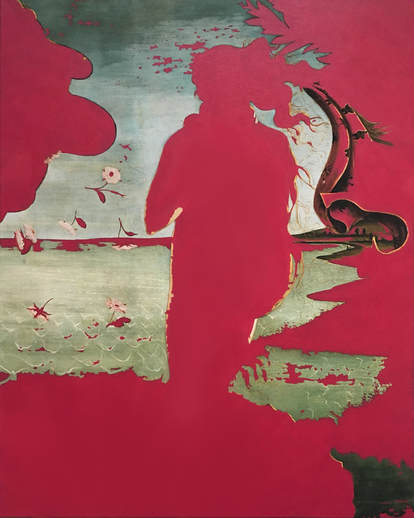
Digital Hallucinations
23.03.18 - 06.04.18 Work by Juliane Pieper and Adrian Pocobelli Opening Celebration: Friday, March 23rd, 7-10 p.m. Finissage: Friday, April 6th, 6-9 p.m. The lines between digital and terrestrial reality blur more every day. “Digital Hallucinations” explores this confluence. Works drawn on screens, printed, painted, and cut out by hand present visions of a new world where handwork and digitally generated objects mingle in psychedelic harmony. “Digital Hallucinations” is a continuation of shows curated by Leo Kuelbs that explore the results of this ongoing merger of these two distinct modes on human subconsciousness. Previous shows, “Codex Dynamic,” “The Decelerator,” and others have presented reactions to the ongoing fallout of this real-time evolution. “Digital Hallucinations” pushes matters into a more graphic direction with works both pleasing and intrusive, comforting and familiar to the edge of weirdness. You know the work of Juliane Pieper through the inclusion of her illustrations in dozens of articles, books, magazines and more; while relative newcomer, Adrian Pocobelli examines the mixing of appropriated work with new visual expression. More information: [email protected] |
WAYS: Christine Schulz
|
Spiritus Familiaris Robert Elfgen & Martin Frese
01. - 03.03.18
Vernissage:
|
Ich möchte ein Eisbär sein im kalten Polar
|
[email protected]
|
Kuratiert von Konstantin Kopietz
In Kooperation mit der Staatsgalerie Prenzlauer Berg
Ronald Lippok - Brimford Collection
|
Nach zweieinhalb Jahren Kunstpause eröffnet die Staatsgalerie Prenzlauer Berg neu und ist zu Gast in der Fata Morgana Galerie.
Ronald Lippok, der mit einer Ausstellung die Staatsgalerie Prenzlauer Berg 2010 eröffnete, präsentiert neue Arbeiten. Lippok ist bekannt als Musiker in Bands wie Ornament & Verbrechen, To Rococo Rot und Tarwater. Doch er ist ebenso Musiker des experimentellen Klangs wie er ein Maler exklusiver Themen ist. Seine Bilder senden letzte Wellen von Licht aus Welten, die allmählich verblassen. Die Sensationen von gestern sind ihm allerdings eine Form der aktuellen Nachrichtenübermittlung, am ehesten vergleichbar dem Bänkelgesang. Seiner szenischen Aufführung durch Schautafeln könnte die Malerei Ronald Lippoks dienen. Insofern ist sie ein Kind ihrer Vorzeit und tatsächlich gehen ihre Motive auch auf Vorlagen aus der sogenannten Brimford Collection zurück. Ursprung der Sammlung und die Herkunft ihres Namens sind in der gängigen Sachliteratur umstritten. Übereinstimmung herrscht bei den Experten jedoch darin, daß es sich bei Brimford wahrscheinlich weniger um eine Person, sondern vielmehr um einen Kreis handelte. Eine exzentrische und daher weitgehend unbeachtete Interpretation dieses Kreises wiederum besagt, daß er eher als das Vorbild für ein Spiegelkabinett zu verstehen sei, dessen inhaltlicher Schwerpunkt sich um Welt- und Wunschbilder, Eben- und Gegenbilder, Trug- und Lichtbilder, Luft- und Zerrbilder sowie weitere Genrebilder drehte. Nicht den gesicherten Fakten, sondern ausgerechnet dieser auslegbaren Sichtweise der Brimfordschen Sammlung widmet sich die aktuelle Ausstellung Ronald Lippoks. Nur einem flüchtigen Blick erscheint ihre Zusammenstellung willkürlich. Bei genauerer Betrachtung deuten ihre Motive jedoch sämtlich auf eine Poesie, deren Abwesenheit die gegenwärtige Moderne in ihrer informellen und konzeptionellen Attitüde prägt. Das Interesse Lippoks gilt diesem Zeitgeist insofern, da er ihn als Travestie seiner entspiegelten Sachlichkeit abbildet und damit einem Geist jener Zeitalter huldigt, die noch einen Knick in der Optik hatten. In der Lippokschen Bildwelt ist Wissenschaft nicht die Zulieferindustrie eines Fortschritts aus keimfreien Laboren, sie steht noch für ein öffentliches Spektakel; in der Forschung ringt die Frage des Glaubens weiter mit dem ungläubigen Staunen vor fremden Welten; Technik ist ein Wunderwerk der Technik und frei vom Widerspruch zwischen Ornament und Funktion. Insofern legt Ronald Lippok die Folien zweier Welten übereinander; die eine ist Realität, die andere war Wirklichkeit. Die Brimford Collection widmet sich deren Urformen, ihren Interpretationen sowie den psychonautischen Karten eines mythen-gesättigten Bezirks. Kuratiert von Konstantin Kopietz |
hwww.staatsgalerie-prenzlauerberg.de/?inhalt=maler&id=86
Vernissage 23. November - 19-22 Uhr Ausstellungsdauer 24. November bis 02. Dezember 2017 Öffnungszeiten: täglich 16 bis 20 Uhr (auch am Totensonntag) Finissage 02. Dezember - 18 bis 21 Uhr Fata Morgana Galerie, Torstraße 170, 10115 Berlin 0176 7020 7696 (für diese Ausstellung) |
Fata Morgana
|
Leo Kuelbs Collection Presents: Vadim Schaeffler: Landing Zone
|
Metallgestaltung-Bieniek Bizetstrasse 88 13088 Berlin 030/34088747 mobil:0173/7444492
[email protected] www.metallgestaltung-bieniek.de
[email protected] www.metallgestaltung-bieniek.de
RICHARD JOCHUM
|
On june 9th the exhibition" Mattresses Of Berlin "
|
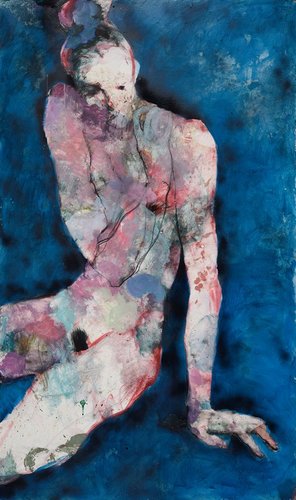
Spring Forth: Works by Maria Naidyonova and Kai Teichert
Opening Friday, June 2nd
7 pm – 10 pm
June 3rd - 5th
12 pm-5 pm or by appointment
“Spring Forth”
Celebrate Spring in full bloom with a selection of new figurative paintings and drawings from Maria Naidyonova and Kai Teichert at Fata Morgana. Once winter releases its grip, and spring finally comes into its own, comedy has begun and romance can begin to blossom. This group of work finds itself somewhere in this annual dance out of irony and into a new season of fertility and promise.
Kai Teichert continues his exploration of the spring of eternal youth, while never forgetting what time has in store for everyone. Maria Naidyonova’s female figures on found canvases breathe new life into discarded dreams. All new works making their international debut in Berlin’s vibrant Mitte neighborhood for one spring weekend only.
RSVP here!
Image provided by Maria Naidyonova
Opening Friday, June 2nd
7 pm – 10 pm
June 3rd - 5th
12 pm-5 pm or by appointment
“Spring Forth”
Celebrate Spring in full bloom with a selection of new figurative paintings and drawings from Maria Naidyonova and Kai Teichert at Fata Morgana. Once winter releases its grip, and spring finally comes into its own, comedy has begun and romance can begin to blossom. This group of work finds itself somewhere in this annual dance out of irony and into a new season of fertility and promise.
Kai Teichert continues his exploration of the spring of eternal youth, while never forgetting what time has in store for everyone. Maria Naidyonova’s female figures on found canvases breathe new life into discarded dreams. All new works making their international debut in Berlin’s vibrant Mitte neighborhood for one spring weekend only.
RSVP here!
Image provided by Maria Naidyonova
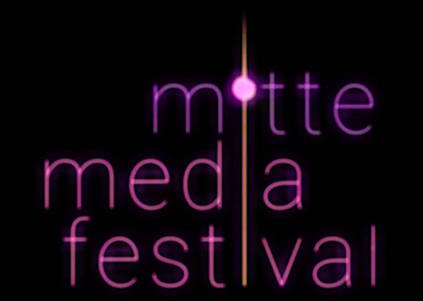
Mitte Media Festival is pleased to present a two-day, multi-venue celebration of video, film, publication and performance works through a spectrum of media May 5th and 6th of 2017.
The realization of an idea, as it winds its way through the human mind and body, then is communicated to other creative entities, and finally translated and presented in other media is the process from which Mitte Media Festival draws its conceptual energy.
Hosted by Fata Morgana and its partners and presented in a small group of venues in Mitte, Berlin, Mitte Media Festival also shines a light on the neighborhood’s role as a hub of creation and presentation of multi-media work, as well as the start-up culture that often powers these dynamic permutations. The sheer change and transition that has occurred in Mitte in the last 10 years makes the area a perfect example of the collision between the terrestrially creativity and ever-expanding digital processes and platforms.
Book presentations, experimental video shows with discussion and other events will typically be presented in two-hour slots, allowing viewers to encounter a variety of work in a variety of settings.
Mitte Media Festival partners include: FATA MORGANA, Z-BaR/Konstantin Kopietz ,Leo Kuelbs Collection, Last Night in Berlin, Chased Magazine, Directors Lounge,BRLO and more.
FESTIVAL LOCATIONS:
FATA MORGANA
Torstrasse 170
10115 Berlin
Z-Bar
Bergstrasse 2
10115 Berlin
FESTIVAL SCHEDULE:
FRIDAY, MAY 5TH
FATA MORGANA
Front Room
2-5,30 pm: “Destiny TV” by Nina E. Schönefeld Sculptural Installation/2017
6-8 pm: "de--traffic" - A sound-text-installation & performance by Kinga Tóth, Bettina Henningsen and Andreas Pinkow with "The Language Factory" with Kinga Tóth
8-10 pm: videos by Berna Reale, Annique Delphine and Nina Schönefeld
10-12 am: AFTER PARTY!sponsored by BRLO - BRLO is the old Slavic origin of the name of Berlin and is a craft beer brewery from Berlin. BRLO is only working with selected raw material suppliers and the beers are brewed with artisanal qualities in small-scale batches. Further, from every bottle regional community projects are financially supported. After two years of being gypsy brewers, mid of January BRLO has opened its own brewery and gastronomy at Gleisdreieck, Berlin: the BRLO BRWHOUSE.
Back Room
2-4 pm :“TRIPS" Hallucinatory Work, presented by Leo Kuelbs Collection
4-6 pm: “SUBMERGED!" with Danielle de Picciotto and Alexander Hacke, Sam Marlow and Alon Cohen, Nicole Antebi and Laura Ortman, Kitzinger Gabor and Alex Hamadey, Shir Lieberman, Jonathan Phelps and Fabio Fonda, United VJs, Jim Ellis Presented by Leo Kuelbs Collection
6-8 pm: ZEBRA Poetry Film Festival Videos
10-12 pm: AFTER PARTY!
Z-BAR
4-10 pm: "Berlin-Based" Short Films with Daniela Imhoff, Juliane Ebner, Franz Mueller, Matl Findel, Amir Fattal and others.
Presented by Z-BaR/Konstantin Kopietz, Leo Kuelbs Collection and Directors Lounge
3:52-4:24 pm:
“Walter” by Danielle Imhoff
Exp. Documentary, 32 mn 2014
Walter was a Chief Pharmacist during WW2.
He took part in the Russian campaign from 1941 to 1942. As a passionate amateur-filmmaker he shot the everyday life of the 129th Infanterie-Division. 70 years later, the historical footage is coincidentally passed on into the hands of his granddaughter, video artist Daniela Imhoff, initiating a process of reexamination of personal and family history. Comprising original footage of her grandfather and of Daniela Imhoff’s own journey to Russia, "Walter" documents a journey in the footsteps of war, focusing on questions of identity and relationship between the generations, and not least, reflecting upon the role of the camera as a means of meaning and reality production.
The Film, while labelled documentary, makes use of experimental technique and unconventional form, in order to be true to the material on one end, and to reflect upon certain issues raised in the process on the other.
4:25-4:50 pm:
“A Voyeur’s Diary” by Sunken Kim
English / Korean Subtitle; 25 mn
Digital HD
Germany, 2013
A Voyeur’s Diary is an epistolary-experimental film. It’s also a travelogue and melodrama of a female filmmaker who failed to make a pornographic film and instead turned the footage into a letter to her lover. In process, she is brought to disillusion that her attempts to pursue her desires displace herself from her own memory, unintendedly segregating the images from her memory-film. It compels her to make a decision to leave her own creation as well as her lover.
4:51-5:19 pm
“Landstrich (Stretch of Land)” by Juliane Ebner
Handpainted film; 30 mn
Germany, 2016
A story about silence, remembrance and the power of narratives.
The half-hour-long short film Stretch of Land, based upon hundreds of drawings, tells of a German family's fate between the end of World War II and the Fall of the Berlin Wall. The film begins with these sentences:
After the war my grandmother had a bad conscience because she was still alive. Her husband gave her a pistol and told her, if the Russians come, she should shoot first the children, then herself, and she didn't do that.”Like all films by the artist Juliane Ebner, Stretch of Land is inspired by her biography and not focused on official history but on individual perception.
5:20-5.35 pm:
“From the End to the Beginning” by Amir Fattal
Digital Format; 14.22 mn
Germany, 2014
Performance video based upon Wagner’s “Vorspiel and Liebestod.” Music by the Zafraan Ensemble, performed by Denise Beck, conducted by Holly Mathieson.
5:35-5:51 pm:
“die bewohnte insel” by Franz Mueller
Time-based, Digital Medium; 16.00 mn
A park in summer. People come and go. Two women talk about love, sex and getting older. A man jogs, another one dies. A remote controlled car comes into the picture. A whistling sound. In the background trees are being pruned. And while we humans in our innate desire to decipher patterns in everything that we see, try to figure out what is going on, a pattern appears in the image: A red diagonal cross of clothes and objects can be seen for a moment if one connects all the Red in the picture. Just to be blown away in the next moment.
6-10 pm:
Directors’ Lounge Presents
“Shots in the Light and in the Dark”
The first section is all about reception, pictophagia and the autopoietic beauty of images.
The second is a wild rollercoaster about the eternal question "Have you ever seen an experimental film?" Together it’s a buffet of tasty tidbits from 10 years of Directors Lounge, films about self -esteem, aliens, art, moms, toasters and the whole universe.
Program One (80 min), 5 May, 6 pm at Z-Bar:
Stefan Adamski (PL) Induction 3 min 2007
Neil Needleman (US) Meeskeit 7 min 30s 2009
Jes Benstock (GB) Phosphenes 10 min 2002
Michael Betancourt (US) The Kodak Moment 2 min 2013
Xavi Sala (ES) La Parabólica 12 min 2007
Sasha Waters Freyer (US) An Incomplete History of Pornography, 1979, 8 min 2013
Jean-Gabriel Périot (FR) 21.04.02 9 min, DV, 2002
Faith Holland (US) RIP Geocities 2 min 31s 2011
André Werner (DE) The Custom of Eating Pictures 9 min 1997
Santiago Parres EZO (ES) Sinecdoquanon 7 min 29s 2011
Tokomburu / Zisis Kokkinidis and Ion Papaspyrou (GR) I Am Not Here Now 9 min 30 s 2013
Program Two (96 min), 5 May, 8 pm at Z-Bar:
Alexei Dmitriev (RU) Dubus 4 min 9s, DV, 2005
Coleman Miller (US) Uso Justo 22 min 2005
Matthew Lancit (FR/CA) 16 Reasons Why I Hate Myself 03:32
Alexandru Ponoran (RO) Isac Inca Doarme 17 min 2012
Samuel Blain (GB) In Dreams 3 min 57s 2011
Bryan Konefsky (US) Miss Yummy Yummy 4 min 2012
Guy Maddin (CA) Sombra Dolorosa 7 min 35s
Nina Lassila (FI) Günter und Mutti 3 min 17s 2011 (Distributor: AV-arkki)
Chema Garcia Ibarra (ES) The Attack of The Robots From Nebula-5
6min 20s 2008
Javier Chillon (ES) Decapoda Shock 9 min 15s 2011
Luca Zuberbuehler (CH) Lothar 13 min 2013
Oliver Smith (GB) Bob by Oliver Smith 2 min 31s 2013
SATURDAY, MAY 6TH
FATA MORGANA
Front Room
4-6 pm: "Between Crowds and Empires"
6-8 pm: “Past Nor Present”- Media Art Project by Carsten Becker
8-10 pm: "MOSKAU, MOSCOW, MOCKBA" - book signing and exhibition with Sandra Ratkovic
Back Room
2-4 pm: “Examining Darkness" - Goth Art Show presented by Leo Kuelbs Collection
4-6 pm: DIRECTORS LOUNGE Presents Length TBD
This third selection of work presented at Mitte Media Festival by Directors’ Lounge explores the boundaries where video art and cinema merge.
6-8 pm: “Digital Fairy Tales: Album One" with work by Rani Messias + Kinga Toth , Sarah Mock + Daniela Imhoff, Richard Jochum + Kriss Roebling, Integrated Visions + Miss Natasha Enquist, Radka Salcmannova, Thomas Rotenberg, Josh Graham; Curated by Sandra Ratkovic and Leo Kuelbs, Presented by Leo Kuelbs Collection
8-10 pm: OFFICIAL EUROPEAN RELEASE: "Digital Fairy Tales; Album Two" with work by Keegan Luttrell + Justin King, Anton Mairni + Danielle Ezzo, Daniela Kostova + Anna Leevia, Daniela Imhoff, Kristian Pedersen + Elke Brauweiler, Boris Kralj + Matresanch, Michael McGuirk + Alex Hamadey. Curated by Sandra Ratkovic and Leo Kuelbs. Presented by Leo Kuelbs Collection. Intro at 8 pm sharp!
10 pm-12: AFTER PARTY with videos by Berna Reale, Annique Delphine and Nina Schönefeld sponsored
by BRLO!
Z-BAR
4-5:05 pm: "Attachments"
30 mn approx./looping twice
“Attachments” is a set of three short films, set in three different countries, exploring what happens when fate intervenes, be it in the form of another person, an event, an affliction, etc. and attaches itself to us, effectively changing who we are forever.
Work by Matl Findel, Miklos Buk , Danielle de Picciotto, Alexander Hacke and David Yow.
Presented by Z-Bar / Konstantin Kopietz and Leo Kuelbs Colleciton
5.06-6 pm: "Berlin-Based"
25 mn/looping twice
Group show of Berlin-based artists, loosely based on Berlin as a muse.
With Daniela Imhoff, Matl Findel, Sarah Mock, Vadim Schaeffler, Kristina Paustian and Thomas Draschan
Presented by and Leo Kuelbs Collection
6-8 pm: "Berlin-Based: Gender and Sexuality"
40 mn approx./looping
Leave the kids home for this one. A selection of content from a broad range of artists, covering an equally broad range of perspectives.
With work by Thomas Draschan, Christopher Winter, Franz Reimer, Kristina Paustian, Kai Teichert and Lan Hungh, and Jana SchulzPresented by Z-Bar and Leo Kuelbs Collection
8-10 pm: "Hybrid Realities"
90 mn/single screening!
“Hybrid realities - about the smooth transition:” The screening includes a variety of video works that deal with the correlation of life & art and its smooth as well as non-smooth transitions. Similar to the strangely stuffed fox (shown on the screening poster) that happens to become a peculiar, aesthetic object, the artists approach moments of everyday life, different places, uninvolved people or unfamiliar professions and create new levels of meaning.
With Videos by Andrea Eva Gyori, Lukas Marxt, Julia Charlotte Richter and Barbara Hirn, Lucie Mercadal, Flaut M. Rauch and Ann Schomberg, Alex McQuilkin, Corinna Schnitt, Clemens Wilhelm, Sarah Mock, Stefan Ramirez Perez, BittebitteJaja
Curated by Sarah Mock
THE FESTIVAL IS SPONSORED BY:
BRLO
Fata Morgana
Directors Lounge
Leo Kuelbs Collection
Last Night in Berlin
Chased
Z-Bar / Konstantin Kopietz
Media and Press Inquiries:
Leo Kuelbs
[email protected]
Sandra Ratkovic
[email protected]
More information at:
www.leokuelbscollection.com
The realization of an idea, as it winds its way through the human mind and body, then is communicated to other creative entities, and finally translated and presented in other media is the process from which Mitte Media Festival draws its conceptual energy.
Hosted by Fata Morgana and its partners and presented in a small group of venues in Mitte, Berlin, Mitte Media Festival also shines a light on the neighborhood’s role as a hub of creation and presentation of multi-media work, as well as the start-up culture that often powers these dynamic permutations. The sheer change and transition that has occurred in Mitte in the last 10 years makes the area a perfect example of the collision between the terrestrially creativity and ever-expanding digital processes and platforms.
Book presentations, experimental video shows with discussion and other events will typically be presented in two-hour slots, allowing viewers to encounter a variety of work in a variety of settings.
Mitte Media Festival partners include: FATA MORGANA, Z-BaR/Konstantin Kopietz ,Leo Kuelbs Collection, Last Night in Berlin, Chased Magazine, Directors Lounge,BRLO and more.
FESTIVAL LOCATIONS:
FATA MORGANA
Torstrasse 170
10115 Berlin
Z-Bar
Bergstrasse 2
10115 Berlin
FESTIVAL SCHEDULE:
FRIDAY, MAY 5TH
FATA MORGANA
Front Room
2-5,30 pm: “Destiny TV” by Nina E. Schönefeld Sculptural Installation/2017
6-8 pm: "de--traffic" - A sound-text-installation & performance by Kinga Tóth, Bettina Henningsen and Andreas Pinkow with "The Language Factory" with Kinga Tóth
8-10 pm: videos by Berna Reale, Annique Delphine and Nina Schönefeld
10-12 am: AFTER PARTY!sponsored by BRLO - BRLO is the old Slavic origin of the name of Berlin and is a craft beer brewery from Berlin. BRLO is only working with selected raw material suppliers and the beers are brewed with artisanal qualities in small-scale batches. Further, from every bottle regional community projects are financially supported. After two years of being gypsy brewers, mid of January BRLO has opened its own brewery and gastronomy at Gleisdreieck, Berlin: the BRLO BRWHOUSE.
Back Room
2-4 pm :“TRIPS" Hallucinatory Work, presented by Leo Kuelbs Collection
4-6 pm: “SUBMERGED!" with Danielle de Picciotto and Alexander Hacke, Sam Marlow and Alon Cohen, Nicole Antebi and Laura Ortman, Kitzinger Gabor and Alex Hamadey, Shir Lieberman, Jonathan Phelps and Fabio Fonda, United VJs, Jim Ellis Presented by Leo Kuelbs Collection
6-8 pm: ZEBRA Poetry Film Festival Videos
10-12 pm: AFTER PARTY!
Z-BAR
4-10 pm: "Berlin-Based" Short Films with Daniela Imhoff, Juliane Ebner, Franz Mueller, Matl Findel, Amir Fattal and others.
Presented by Z-BaR/Konstantin Kopietz, Leo Kuelbs Collection and Directors Lounge
3:52-4:24 pm:
“Walter” by Danielle Imhoff
Exp. Documentary, 32 mn 2014
Walter was a Chief Pharmacist during WW2.
He took part in the Russian campaign from 1941 to 1942. As a passionate amateur-filmmaker he shot the everyday life of the 129th Infanterie-Division. 70 years later, the historical footage is coincidentally passed on into the hands of his granddaughter, video artist Daniela Imhoff, initiating a process of reexamination of personal and family history. Comprising original footage of her grandfather and of Daniela Imhoff’s own journey to Russia, "Walter" documents a journey in the footsteps of war, focusing on questions of identity and relationship between the generations, and not least, reflecting upon the role of the camera as a means of meaning and reality production.
The Film, while labelled documentary, makes use of experimental technique and unconventional form, in order to be true to the material on one end, and to reflect upon certain issues raised in the process on the other.
4:25-4:50 pm:
“A Voyeur’s Diary” by Sunken Kim
English / Korean Subtitle; 25 mn
Digital HD
Germany, 2013
A Voyeur’s Diary is an epistolary-experimental film. It’s also a travelogue and melodrama of a female filmmaker who failed to make a pornographic film and instead turned the footage into a letter to her lover. In process, she is brought to disillusion that her attempts to pursue her desires displace herself from her own memory, unintendedly segregating the images from her memory-film. It compels her to make a decision to leave her own creation as well as her lover.
4:51-5:19 pm
“Landstrich (Stretch of Land)” by Juliane Ebner
Handpainted film; 30 mn
Germany, 2016
A story about silence, remembrance and the power of narratives.
The half-hour-long short film Stretch of Land, based upon hundreds of drawings, tells of a German family's fate between the end of World War II and the Fall of the Berlin Wall. The film begins with these sentences:
After the war my grandmother had a bad conscience because she was still alive. Her husband gave her a pistol and told her, if the Russians come, she should shoot first the children, then herself, and she didn't do that.”Like all films by the artist Juliane Ebner, Stretch of Land is inspired by her biography and not focused on official history but on individual perception.
5:20-5.35 pm:
“From the End to the Beginning” by Amir Fattal
Digital Format; 14.22 mn
Germany, 2014
Performance video based upon Wagner’s “Vorspiel and Liebestod.” Music by the Zafraan Ensemble, performed by Denise Beck, conducted by Holly Mathieson.
5:35-5:51 pm:
“die bewohnte insel” by Franz Mueller
Time-based, Digital Medium; 16.00 mn
A park in summer. People come and go. Two women talk about love, sex and getting older. A man jogs, another one dies. A remote controlled car comes into the picture. A whistling sound. In the background trees are being pruned. And while we humans in our innate desire to decipher patterns in everything that we see, try to figure out what is going on, a pattern appears in the image: A red diagonal cross of clothes and objects can be seen for a moment if one connects all the Red in the picture. Just to be blown away in the next moment.
6-10 pm:
Directors’ Lounge Presents
“Shots in the Light and in the Dark”
The first section is all about reception, pictophagia and the autopoietic beauty of images.
The second is a wild rollercoaster about the eternal question "Have you ever seen an experimental film?" Together it’s a buffet of tasty tidbits from 10 years of Directors Lounge, films about self -esteem, aliens, art, moms, toasters and the whole universe.
Program One (80 min), 5 May, 6 pm at Z-Bar:
Stefan Adamski (PL) Induction 3 min 2007
Neil Needleman (US) Meeskeit 7 min 30s 2009
Jes Benstock (GB) Phosphenes 10 min 2002
Michael Betancourt (US) The Kodak Moment 2 min 2013
Xavi Sala (ES) La Parabólica 12 min 2007
Sasha Waters Freyer (US) An Incomplete History of Pornography, 1979, 8 min 2013
Jean-Gabriel Périot (FR) 21.04.02 9 min, DV, 2002
Faith Holland (US) RIP Geocities 2 min 31s 2011
André Werner (DE) The Custom of Eating Pictures 9 min 1997
Santiago Parres EZO (ES) Sinecdoquanon 7 min 29s 2011
Tokomburu / Zisis Kokkinidis and Ion Papaspyrou (GR) I Am Not Here Now 9 min 30 s 2013
Program Two (96 min), 5 May, 8 pm at Z-Bar:
Alexei Dmitriev (RU) Dubus 4 min 9s, DV, 2005
Coleman Miller (US) Uso Justo 22 min 2005
Matthew Lancit (FR/CA) 16 Reasons Why I Hate Myself 03:32
Alexandru Ponoran (RO) Isac Inca Doarme 17 min 2012
Samuel Blain (GB) In Dreams 3 min 57s 2011
Bryan Konefsky (US) Miss Yummy Yummy 4 min 2012
Guy Maddin (CA) Sombra Dolorosa 7 min 35s
Nina Lassila (FI) Günter und Mutti 3 min 17s 2011 (Distributor: AV-arkki)
Chema Garcia Ibarra (ES) The Attack of The Robots From Nebula-5
6min 20s 2008
Javier Chillon (ES) Decapoda Shock 9 min 15s 2011
Luca Zuberbuehler (CH) Lothar 13 min 2013
Oliver Smith (GB) Bob by Oliver Smith 2 min 31s 2013
SATURDAY, MAY 6TH
FATA MORGANA
Front Room
4-6 pm: "Between Crowds and Empires"
6-8 pm: “Past Nor Present”- Media Art Project by Carsten Becker
8-10 pm: "MOSKAU, MOSCOW, MOCKBA" - book signing and exhibition with Sandra Ratkovic
Back Room
2-4 pm: “Examining Darkness" - Goth Art Show presented by Leo Kuelbs Collection
4-6 pm: DIRECTORS LOUNGE Presents Length TBD
This third selection of work presented at Mitte Media Festival by Directors’ Lounge explores the boundaries where video art and cinema merge.
6-8 pm: “Digital Fairy Tales: Album One" with work by Rani Messias + Kinga Toth , Sarah Mock + Daniela Imhoff, Richard Jochum + Kriss Roebling, Integrated Visions + Miss Natasha Enquist, Radka Salcmannova, Thomas Rotenberg, Josh Graham; Curated by Sandra Ratkovic and Leo Kuelbs, Presented by Leo Kuelbs Collection
8-10 pm: OFFICIAL EUROPEAN RELEASE: "Digital Fairy Tales; Album Two" with work by Keegan Luttrell + Justin King, Anton Mairni + Danielle Ezzo, Daniela Kostova + Anna Leevia, Daniela Imhoff, Kristian Pedersen + Elke Brauweiler, Boris Kralj + Matresanch, Michael McGuirk + Alex Hamadey. Curated by Sandra Ratkovic and Leo Kuelbs. Presented by Leo Kuelbs Collection. Intro at 8 pm sharp!
10 pm-12: AFTER PARTY with videos by Berna Reale, Annique Delphine and Nina Schönefeld sponsored
by BRLO!
Z-BAR
4-5:05 pm: "Attachments"
30 mn approx./looping twice
“Attachments” is a set of three short films, set in three different countries, exploring what happens when fate intervenes, be it in the form of another person, an event, an affliction, etc. and attaches itself to us, effectively changing who we are forever.
Work by Matl Findel, Miklos Buk , Danielle de Picciotto, Alexander Hacke and David Yow.
Presented by Z-Bar / Konstantin Kopietz and Leo Kuelbs Colleciton
5.06-6 pm: "Berlin-Based"
25 mn/looping twice
Group show of Berlin-based artists, loosely based on Berlin as a muse.
With Daniela Imhoff, Matl Findel, Sarah Mock, Vadim Schaeffler, Kristina Paustian and Thomas Draschan
Presented by and Leo Kuelbs Collection
6-8 pm: "Berlin-Based: Gender and Sexuality"
40 mn approx./looping
Leave the kids home for this one. A selection of content from a broad range of artists, covering an equally broad range of perspectives.
With work by Thomas Draschan, Christopher Winter, Franz Reimer, Kristina Paustian, Kai Teichert and Lan Hungh, and Jana SchulzPresented by Z-Bar and Leo Kuelbs Collection
8-10 pm: "Hybrid Realities"
90 mn/single screening!
“Hybrid realities - about the smooth transition:” The screening includes a variety of video works that deal with the correlation of life & art and its smooth as well as non-smooth transitions. Similar to the strangely stuffed fox (shown on the screening poster) that happens to become a peculiar, aesthetic object, the artists approach moments of everyday life, different places, uninvolved people or unfamiliar professions and create new levels of meaning.
With Videos by Andrea Eva Gyori, Lukas Marxt, Julia Charlotte Richter and Barbara Hirn, Lucie Mercadal, Flaut M. Rauch and Ann Schomberg, Alex McQuilkin, Corinna Schnitt, Clemens Wilhelm, Sarah Mock, Stefan Ramirez Perez, BittebitteJaja
Curated by Sarah Mock
THE FESTIVAL IS SPONSORED BY:
BRLO
Fata Morgana
Directors Lounge
Leo Kuelbs Collection
Last Night in Berlin
Chased
Z-Bar / Konstantin Kopietz
Media and Press Inquiries:
Leo Kuelbs
[email protected]
Sandra Ratkovic
[email protected]
More information at:
www.leokuelbscollection.com
Promoted Stories by Adrian Pocobelli. Feb. 1-7, 2017.
Public opening on Thursday, Feb. 2, 6-10 PM.
"Little Viral Things" by Adrian Pocobelli, iPhone 6S, digital drawing, 2017.
Kuratiert von Konstantin Kopietz
|
|
Fata Morgana Galerie Berlin Mitte Torstraße 170
Ausstellungsdauer 9 - 23 Dezember, 2016
ERÖFFNUNG Freitag 9 Dezember 18.30 - 22.00 Uhr
Täglich 11.00 - 20.00 Uhr oder nach Vereinbarung
Pressemitteilung / Press Release
Artikel / article in ARTVOICES magazine (nach unten scrollen / scroll down)
VIDEO of the show
www.egonzippel.com [email protected] +1 917 497 7200
Ausstellungsdauer 9 - 23 Dezember, 2016
ERÖFFNUNG Freitag 9 Dezember 18.30 - 22.00 Uhr
Täglich 11.00 - 20.00 Uhr oder nach Vereinbarung
Pressemitteilung / Press Release
Artikel / article in ARTVOICES magazine (nach unten scrollen / scroll down)
VIDEO of the show
www.egonzippel.com [email protected] +1 917 497 7200
D E V A N D A L I Z I N G
The "Devandalizing" series involves recycling “communication” from appropriated stickers, graffiti tags on visitor ID labels and similar items, and other fragments of urban signatures found on the streets of various cities around the world. These artifacts of urban life are then regrouped onto canvases in chaotic, random, or well-defined (geometric) compositions, which emanate contemporary culture.
The stickers are collected from the streets of various cities like Detroit, Berlin, Las Vegas, Quebec, Montreal, Palermo, Catania, Naples, Rome, Florence, Milan, Havana... and of course, New York. In other words, these are all ORIGINALS, the "real" thing!
Excerpts from an Interview (NYC 2012, by Lin “Quik” Felton)
LF: One has seen your work morph frequently and radically over the years. How do you view your creative self today?
EZ: I am a traditional HUNTER and GATHERER! I used to go for mushrooms and berries. Now it’s stickers.
LF: Is it painting or conceptual art?
EZ: Does it matter!?! I enjoy roaming and stalking the cacophonous streets, sometimes in the wee hours of Manhattan’s pre-dawn equipped with my ever trusty and sturdy ladder hunting unique stickers that tumble and visually rumble across the borough’s urban crust.
LF: How do these new works take form and represent this reflection of man’s primitive nature to discover and explore?
EZ: Ha! I DEVANDALIZE and PRESERVE. To formulate my idyllic street harvest into art, I manipulate the tags and stickers as painting. The medium is really the message. Or to say it with simpler words: I am having fun to paint with the paint the city is providing me.
C V
Egon Zippel was born in Timisoara, Rumania in 1960 to German parents. When Nicolae Ceaușescu rose to power in 1964, the Zippels presciently left for Mannheim/Heidelberg, Germany to begin life anew.
Egon studied graphic design at the University of Mannheim whence he received a Fulbright Scholarship comprising an introductory month at Georgetown University in Washington, D.C. and the academic year of 1984-85 at the University of Texas in Austin. Over the next few years Egon studied computer graphics at the New York Institute of Technology and finished his postgraduate studies at the Institute for New Media at the Staedel Art Academy in Frankfurt from 1993-94.
During the early ‘90s he lived primarily in Italy until eventually settling again in NYC in 1996. Currently, Egon maintains studios in New York and Berlin.
Egon believes in both predetermination and free will - wrestling with this contradiction makes daily life rather complex (and fun).
Light Year 20: Attachments
Thursday December 1st
Berlin: Torstraße 170 from 12 noon
New York: Anchorage Place and Pearl St. Brooklyn from 7pm
“Attachments” is a set of three short films, set in three different countries, exploring what happens when fate intervenes, be it in the form of another person, an event, an affliction, etc. and attaches itself to us, effectively changing who we are forever. It is a step forward towards blurring the lines between video art and experimental cinema. These were the basic premises presented to the three contributing artists.
Featuring work by:
Matl Findel,
Danielle de Picciotto with Alexander Hacke & David Yow,
Miklos Buk
Curated by Leo Kuelbs.
A live stream of the show will run from 6pm on 12/1 until 6pm on 12/2 - check it out here: http://ustre.am/1x02e
The team from LIGHT YEAR (Leo Kuelbs Collection, Glowing Bulbs, John Ensor Parker) are happy to announce that LIGHT YEAR will now be screened each First Thursday and Friday of the month in Berlin at Fata Morgana (Torstrasse 170; Mitte)!
About LIGHT YEAR:
LIGHT YEAR is an ongoing project presented by 3_Search (Leo Kuelbs Collection, Glowing Bulbs and John Ensor Parker) in collaboration with the DUMBO Improvement District and NYC DOT. Originally created in celebration of the United Nations’ declaration of 2015 as the Year of Light and Light Art, LIGHT YEAR has hosted the work of over 100 artists and curators from around the world.
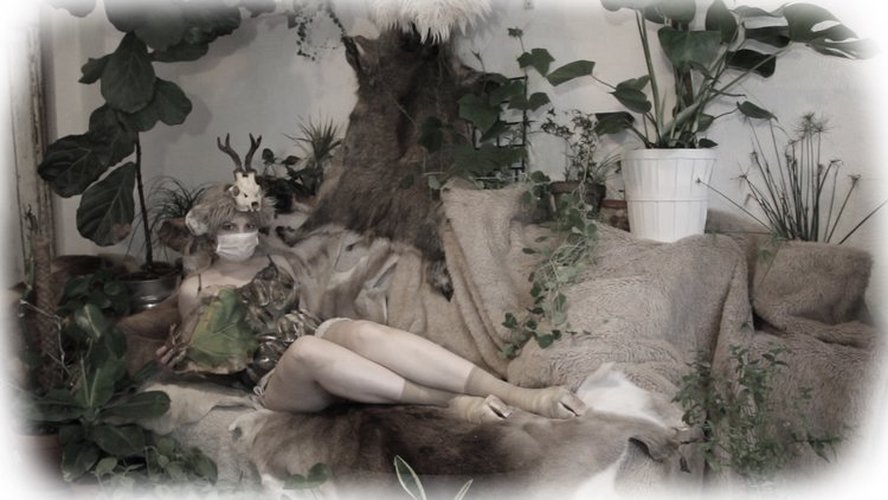
Paragraph. Zur Bearbeitung hier klicken.
Winter Seasoning Opening Weekend
Torstraße 170
Thursday, November 10th-Sunday, November 13th
Hours:
Thursday Grand Opening: 6-10 pm
Friday: 12-8pm
Saturday: Reception and Party: 6-10 pm
Sunday: Brunch 11 am-2 pm - Artist Studio Visit
Exhibiting Artists:
Leonid Keller, Pola Brändle, Nina Schönefeld, Tahian Bhering, Christopher Sage, Heike Gallmeier, Robin Resch, Andrés Galeano, Various and Gould, Carlos Silva, David Biene and Nico Brodersen
“Digital Fairy Tales; Album One” Berlin debut!
Screening at 6.45 and 8.45 pm Thursday and Saturday
(35 Minute Program)
Curated by Sandra Ratkovic and Leo Kuelbs
Work by: Sarah Mock + Daniela Imhoff, Integrated Visions + Miss Natasha Enquist, Radka Salcmannova , Rani Messias + Kinga Toth, Richard Jochum + Theory, Tom D. Rotenberg, Josh Graham
For more info visit leokuelbscollection.com
Image provided by Sarah Mock
Torstraße 170
Thursday, November 10th-Sunday, November 13th
Hours:
Thursday Grand Opening: 6-10 pm
Friday: 12-8pm
Saturday: Reception and Party: 6-10 pm
Sunday: Brunch 11 am-2 pm - Artist Studio Visit
Exhibiting Artists:
Leonid Keller, Pola Brändle, Nina Schönefeld, Tahian Bhering, Christopher Sage, Heike Gallmeier, Robin Resch, Andrés Galeano, Various and Gould, Carlos Silva, David Biene and Nico Brodersen
“Digital Fairy Tales; Album One” Berlin debut!
Screening at 6.45 and 8.45 pm Thursday and Saturday
(35 Minute Program)
Curated by Sandra Ratkovic and Leo Kuelbs
Work by: Sarah Mock + Daniela Imhoff, Integrated Visions + Miss Natasha Enquist, Radka Salcmannova , Rani Messias + Kinga Toth, Richard Jochum + Theory, Tom D. Rotenberg, Josh Graham
For more info visit leokuelbscollection.com
Image provided by Sarah Mock
Fata Morgana Galerie
Torstrasse 170
Berlin, DE 10115
Opening September 15th 18:00 - 21:30
From September 15th - September 29th (Open from Wed - Sun by appointment)
Extant
adjective ex·tant \ˈek-stənt; ek-ˈstant, ˈek-ˌ\
in existence : still existing : not destroyed or lost
Curated by Keegan Luttrell
Artists:
Michelangelo Contini http://michelangelocontini.com
Ida Koitila http://www.idakoitila.com
Tina Mariane Krogh Madsen http://www.tmkm.dk
Olga Tzikouli http://www.olgatzikouli.com
Nuno Vicente http://www.nuno-vicente.com
How do we reflect our existence through interventions with objects, materials and instances in order to pose questions about our own humanity? Extant looks at artists who are using their practice to understand not only our existence as a human race, but also how objects contain themselves through creating a sense of awareness and contradiction. Extant pushes beyond the threshold of what it is to know and embody, resulting in a contemplation of how we can contain what remains.
Spanning several mediums and forms, the artists of Extant bring matter out in the open by re-contextualizing the inherent nature and properties of the objects in play. The struggle between the overt and the covert is continuously taking place, procuring new methods of determining the validity of our existence.
MISS YUNIVERSE
01. Juli – 10. Juli 2016, Mon-Son 12:00 - 17:00
--------------------------------------------------------------------------------------
Die neue Serie MISS YUNIVERSE des Modefotografen Boris Kralj, der aus einer Gastarbeiterfamilie stammt, zeigt glamourös-dämonische Portraits jugoslawischer Volkssängerinnen.
In den 1970er und 80er Jahren traten die prunkvollen Sängerinnen aus Jugoslawien nicht nur in ihrem Heimatland, sondern häufig auch vor deutschen Gastarbeiter_innen auf. Live auf der Bühne oder auf VHS-Kassetten, die wieder und wieder in ihren Wohnzimmern, gemeinsam mit Freunden und Familie, abgespielt wurden. Ihre Texte waren melancholisch, handelten vor allem von Leid, Liebe, Schmerz und Einsamkeit. Boris Kralj erinnert sich noch genau an die schillernd-schönen Frauen der MISS YUNIVERSE und an die gemeinsamen Video-Abende: „Ihre Stimmen und ihre Musik erwecken noch heute Euphorie und Beklemmung zugleich. Während die mondänen Frauen sangen, habe ich beobachtet, was für enorme Auswirkungen sie auf meine Familie und meine Umgebung hatten. Die Fernsehzuschauer_innen schienen sich in Marionetten zu verwandeln. Sie haben sich singend und weinend an ihre Herzen gefasst. Die Sängerinnen schienen sie wie Sirenen in ihren Bann zu ziehen.“ Die Bilder – Found Footage der letzten VHS-Kassetten aus Jugoslawien – zeigen Momentaufnahmen dieser Frauen, in denen ihr verführerischer Ausdruck einem dämonischen weicht. Ihre dramatische und ekstatische Mimik und Gestik lässt ihre wie von Schmerz entstellten Gesichter fast unheimlich erscheinen. Ohne Bewegung und ohne Ton werden sie ihrer Macht beraubt. Sie werden den Betrachter_innen als regungslose und dennoch schaurige Subjekte hinter Glas präsentiert. Wehrlos und still. Ihre Show ist zu Ende. In dieser künstlerischen Arbeit Kraljs wird ein Stück jugoslawisch-deutsche Kulturgeschichte verhandelt. Dabei ist der Blick zurück nicht verklärt, sondern kritisch. Er reflektiert die ambivalente Wirkung der Sängerinnen auf Gastarbeiter_innen in Deutschland und West-Europa.
|
Hungarian visual art group, Glowing Bulbs presents their latest immersive projection controlled by an analogue drum set - available for all visitors to play on and trigger the imagery projected on the walls. Although the installation takes place in a single 20 m2 room, visitors may have the impression of standing into an endless void, and modify their surroundings with a musical instrument.
Glowing Bulbs is a Budapest and New York based visuals studio specialized in architectural mapping, video installations and live vj performances. They have been working with musicians, theaters and festivals all around the globe ranging from hard techno to classical music, contemporary dance to ballet, and appeared at major Hungarian and US festivals as well as mapped several well-known architectural masterpieces of the world. They are not new to the Berlin scene either as they already performed at Kraftwerk and Collegium Hungaricum Berlin numerous times. S Olbricht is a producer and co-owner of Farbwechsel Records. He walks on the obscure side of the electronic music landscape and during his restless journey he explores the blurred territories between murky techno and melancholic house combined with ambient sound and abstract rhythms. Jü is a Hungarian power jazz trio bridging the gap between free jazz and hellacious, distortion-laced, guitar-driven hardcore rock. Beside dozens of Hungarian groups, the members have played with international musicians such as John Zorn, Eugene Chadbourne, Charles Gayle, Chris Potter, William Parker, and Hamid Drake. |
Glowing Bulbs
S Olbricht
Kuratiert von Konstantin Kopietz
[email protected]
www.danielmichaeljohnson.com
https://www.facebook.com/events/1698983697017731 /
https://www.facebook.com/daniel.michael.johnson
Kuratiert von Konstantin Kopietz
https://www.facebook.com/daniel.michael.johnson
Kuratiert von Konstantin Kopietz
'OFFstage' heisst das aktuelle Projekt des Berliner Fotografen David Biene, an dem er seit 2005 immer wieder gearbeitet hat.
Wie bei dem Grossteil von Bienes freien Arbeiten geht es auch bei dieser Serie um das Authentische, das Echte, das er mit Vorliebe analog auf Film fotografiert.
Dafür portraitierte David Biene nationale und internationale MusikerInnen und Bands vieler Genres in dem Moment unmittelbar nachdem sie die Bühne verlassen haben. Dabei verfolgt Biene ein strenges Konzept. Nichts soll die Energie zerstören. Nichts soll ablenken von den Personen und ihrem Ausdruck in dieser Situation:
Keiner der Protagonisten hat Zeit sich zurecht zu rücken oder zur Ruhe zu kommen. Der Fotograf gibt weder Anweisungen noch wird er das Bild später manipulieren.
Biene fotografiert diese Arbeit, wie auch seinen ersten Bildband 'Hopped-Up', analog. Der Aspekt der analogen Technik verstärkt für David Biene die Authentizität, bildet so die Leidenschaft der ProtagonistInnen, der Energieträger, unverstellter ab und unterstreicht sie.
Mit seiner klassischen Hasselblad Mittelformatkamera, belichtet Biene pro Einsatz exakt einen Rollfilm, dh maximal 12 Aufnahmen.
Biene begeistert auch bei dieser Arbeit wieder besonders das Echte, das Erlebbare - kurz gesagt die Leidenschaft. Die Energie.
Diese spezielle Energie der Situation fängt Biene ein und macht so die Euphorie und das Adrenalin der ProtagonistInnen für den Betrachter der Bilder erlebbar.
Die erste Ausstellung zur Arbeit OFFstage wird am 12.05. in der Galerie Fata Morgana in der Berliner Torstrasse eröffnet und wird dort bis zum 20.05.2016 gezeigt.
Sie wird eine Auswahl von 22 Aufnahmen präsentieren, die in Formaten von 75x75 cm, 100 x 100 cm und 180x180 cm gezeigt werden.
Aus dem vorhandenen Material von 120 KünstlerInnen und Bands werden bei dieser Ausstellung die folgenden gezeigt:
Annett Louisan Beatsteaks Bonaparte
Biffy Clyro Casper
Charles Bradley Chris Isaak Demented Are Go Die Mannequin Fettes Brot
Flo Mega
Guitar Wolf
Handsome Furs
Imelda May
Jan Delay
Kadaver
Mad Sin
Materia
Polysix
Queens of the Stone Age Sido
Wiz Khalifa
David Biene lebt als freier Fotograf in Berlin.
Nach seinem autodiktatischen Einstieg hat Biene am Lette Verein Berlin Fotografie studiert und 2003 erfolgreich abgeschlossen.
Zu seinen Kunden gehören Firmen, Agenturen und Magazine, für die er Aufträge im Bereich Portrait-, Dokumentar- und Reportagefotogafie sowie Mode- und PR-Fotografie realisiert.
2009 erschien Bienes erster Bildband 'Hopped-Up'
( 240 Seiten/ Hardcover, vergriffen in 1. Auflage nach ca 4 Monaten)
Fotografien von David Biene wurden in Gruppenausstellungen in Galerien in Japan, Chile und dem Libanon sowie in Einzelausstellungen in Galerien in London, Berlin, München und Düsseldorf gezeigt.
david biene
Fotografie
www.david-biene.de
+49 176 2122 8313
[email protected]
Wie bei dem Grossteil von Bienes freien Arbeiten geht es auch bei dieser Serie um das Authentische, das Echte, das er mit Vorliebe analog auf Film fotografiert.
Dafür portraitierte David Biene nationale und internationale MusikerInnen und Bands vieler Genres in dem Moment unmittelbar nachdem sie die Bühne verlassen haben. Dabei verfolgt Biene ein strenges Konzept. Nichts soll die Energie zerstören. Nichts soll ablenken von den Personen und ihrem Ausdruck in dieser Situation:
Keiner der Protagonisten hat Zeit sich zurecht zu rücken oder zur Ruhe zu kommen. Der Fotograf gibt weder Anweisungen noch wird er das Bild später manipulieren.
Biene fotografiert diese Arbeit, wie auch seinen ersten Bildband 'Hopped-Up', analog. Der Aspekt der analogen Technik verstärkt für David Biene die Authentizität, bildet so die Leidenschaft der ProtagonistInnen, der Energieträger, unverstellter ab und unterstreicht sie.
Mit seiner klassischen Hasselblad Mittelformatkamera, belichtet Biene pro Einsatz exakt einen Rollfilm, dh maximal 12 Aufnahmen.
Biene begeistert auch bei dieser Arbeit wieder besonders das Echte, das Erlebbare - kurz gesagt die Leidenschaft. Die Energie.
Diese spezielle Energie der Situation fängt Biene ein und macht so die Euphorie und das Adrenalin der ProtagonistInnen für den Betrachter der Bilder erlebbar.
Die erste Ausstellung zur Arbeit OFFstage wird am 12.05. in der Galerie Fata Morgana in der Berliner Torstrasse eröffnet und wird dort bis zum 20.05.2016 gezeigt.
Sie wird eine Auswahl von 22 Aufnahmen präsentieren, die in Formaten von 75x75 cm, 100 x 100 cm und 180x180 cm gezeigt werden.
Aus dem vorhandenen Material von 120 KünstlerInnen und Bands werden bei dieser Ausstellung die folgenden gezeigt:
Annett Louisan Beatsteaks Bonaparte
Biffy Clyro Casper
Charles Bradley Chris Isaak Demented Are Go Die Mannequin Fettes Brot
Flo Mega
Guitar Wolf
Handsome Furs
Imelda May
Jan Delay
Kadaver
Mad Sin
Materia
Polysix
Queens of the Stone Age Sido
Wiz Khalifa
David Biene lebt als freier Fotograf in Berlin.
Nach seinem autodiktatischen Einstieg hat Biene am Lette Verein Berlin Fotografie studiert und 2003 erfolgreich abgeschlossen.
Zu seinen Kunden gehören Firmen, Agenturen und Magazine, für die er Aufträge im Bereich Portrait-, Dokumentar- und Reportagefotogafie sowie Mode- und PR-Fotografie realisiert.
2009 erschien Bienes erster Bildband 'Hopped-Up'
( 240 Seiten/ Hardcover, vergriffen in 1. Auflage nach ca 4 Monaten)
Fotografien von David Biene wurden in Gruppenausstellungen in Galerien in Japan, Chile und dem Libanon sowie in Einzelausstellungen in Galerien in London, Berlin, München und Düsseldorf gezeigt.
david biene
Fotografie
www.david-biene.de
+49 176 2122 8313
[email protected]
- https://www.facebook.com/events/1032816790125977/
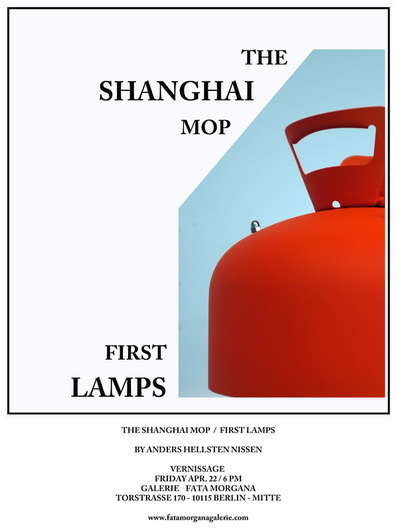
22.04.2016
The Shanghai Mop / First Lamps
Anders Hellsten Nissen
1.04.-10.04.2016
Dataismus 100 - daDa 100 !
Vagabundierende Kunst & Wunderkammer von Rainer Görß
The Shanghai Mop / First Lamps
Anders Hellsten Nissen
1.04.-10.04.2016
Dataismus 100 - daDa 100 !
Vagabundierende Kunst & Wunderkammer von Rainer Görß
Rainer Görß
Dataismus 100 - dada 100! Da Da wahr geworden!
im Data- ismus! in den Rhythmen der Algorithmen
Data hier data da, data ne da, doch da Data da
Der Anlass; die Geburtstagsfeier 100 Jahre Dada - Post Explosiv!
dem Ausbruch der medialen Moderne im I Weltkrieg folgen
die globalen Horror Vacui Implosionen des Dataismus.
Das Unterfangen; eine Raumcollage als begehbare Suchmaschine - versucht
analoge Analogien assoziativer Schnittstellen zwischen
dem köstlichen Dada Leichnam - cadavre exquis, und
der collagenlosen „Sozialzerrissenheit“ der Echtzeitkrise.
Die Umsetzung; am Strom der Gezeiten, Künstler - Sammlungsauszüge aus
Objekten, Schriften, Diagrammatik, Zeichnungen, Fotos.
Ein Kreisschlag zwischen Big Data - reanalog, Prozessmodell
Systemfragen, eine Zeitraum Fragmentierung - Defragmentierung.
Im Zeitsprung; Die Gegenwart ein unendlich kleiner Punkt
der Übersetzungsillusion Vergangenheit, Zukunft.
Das Missverständnis ist der Motor der Motorik.
Die Methode; gewachsen in Berlin Mitte Ost seit 1982
Nach Installationen im neuteutschen Kunstsystem der 90er,
die Millennium Re - Untergrundverortung im Inneren Exil,
vernetzt in Oberflächen Unterwanderungen folgt im Jetzt das
auftauchen vagabundierender Kunst & Wunderkammern.
Vita
Rainer Görß
geboren 1960 Neustrelitz,in Berlin getauft,aufgezogen,alphabetisiert,belehrt,eingezogen.1967/84 Bitterfelder Weg/Tramp/VEB Arbeiter/Koch/Bühnentechniker Deutsches Theater/Obermatrose NVA.Kunstzirkel/Abendstudium bei R.Rehfeld, W.Goes, R.Winkler.Bühnenbildstudium/MalereiStudien/Diplom Kunsthochschule Dresden bei G.Hornig/ J.Heisig.
Gruppen-,Einzelausstellungen & Projekte in :
Deutschland,Italien,Frankreich,Grossbritannien,Österreich,Polen,Russland,Griechenland,USA,Canada;Chile,Australien,Neuseeland,
Brasilien,Japan,Singapur,Lybien,Kamerun,vereingte Emirate.
Kuratiert von Konstantin Kopietz
Dataismus 100 - dada 100! Da Da wahr geworden!
im Data- ismus! in den Rhythmen der Algorithmen
Data hier data da, data ne da, doch da Data da
Der Anlass; die Geburtstagsfeier 100 Jahre Dada - Post Explosiv!
dem Ausbruch der medialen Moderne im I Weltkrieg folgen
die globalen Horror Vacui Implosionen des Dataismus.
Das Unterfangen; eine Raumcollage als begehbare Suchmaschine - versucht
analoge Analogien assoziativer Schnittstellen zwischen
dem köstlichen Dada Leichnam - cadavre exquis, und
der collagenlosen „Sozialzerrissenheit“ der Echtzeitkrise.
Die Umsetzung; am Strom der Gezeiten, Künstler - Sammlungsauszüge aus
Objekten, Schriften, Diagrammatik, Zeichnungen, Fotos.
Ein Kreisschlag zwischen Big Data - reanalog, Prozessmodell
Systemfragen, eine Zeitraum Fragmentierung - Defragmentierung.
Im Zeitsprung; Die Gegenwart ein unendlich kleiner Punkt
der Übersetzungsillusion Vergangenheit, Zukunft.
Das Missverständnis ist der Motor der Motorik.
Die Methode; gewachsen in Berlin Mitte Ost seit 1982
Nach Installationen im neuteutschen Kunstsystem der 90er,
die Millennium Re - Untergrundverortung im Inneren Exil,
vernetzt in Oberflächen Unterwanderungen folgt im Jetzt das
auftauchen vagabundierender Kunst & Wunderkammern.
Vita
Rainer Görß
geboren 1960 Neustrelitz,in Berlin getauft,aufgezogen,alphabetisiert,belehrt,eingezogen.1967/84 Bitterfelder Weg/Tramp/VEB Arbeiter/Koch/Bühnentechniker Deutsches Theater/Obermatrose NVA.Kunstzirkel/Abendstudium bei R.Rehfeld, W.Goes, R.Winkler.Bühnenbildstudium/MalereiStudien/Diplom Kunsthochschule Dresden bei G.Hornig/ J.Heisig.
Gruppen-,Einzelausstellungen & Projekte in :
Deutschland,Italien,Frankreich,Grossbritannien,Österreich,Polen,Russland,Griechenland,USA,Canada;Chile,Australien,Neuseeland,
Brasilien,Japan,Singapur,Lybien,Kamerun,vereingte Emirate.
- http://www.untergrundmuseum.de/Unterseiten/RainerGoerssCV.html
- https://www.facebook.com/events/683363751804225/
Kuratiert von Konstantin Kopietz
EDGAR ZIPPEL
PHOTOGRAPHS 1983 - 2016
The Young Europeans
Vernissage 18.03.2015, 19 Uhr
Vom 18.03. -24.03.2016, täglich von 16:00 bis 19:00 Uhr
Special guest: Audiovisual Performance von u-matic & telematique
Vom 18.03. -24.03.2016, täglich von 16:00 bis 19:00 Uhr
Special guest: Audiovisual Performance von u-matic & telematique
* The project "AFTER THE WAR" was realized with the help of funds from VB-Bildkunst
Edgar Zippel studied photography and film/video at the University of Essen (Folkwangschule) and
finished with diploma.
He is based in the heart of Berlin, going from there wherever he is needed to go, either for personal projects
or commissioned work.
His works are in the collections of Hygiene-Museum Dresden, Ruhrmuseum Essen, Museum Europäischer
Kulturen Berlin and Deutsches Historisches Museum Berlin
Edgar Zippel studied photography and film/video at the University of Essen (Folkwangschule) and
finished with diploma.
He is based in the heart of Berlin, going from there wherever he is needed to go, either for personal projects
or commissioned work.
His works are in the collections of Hygiene-Museum Dresden, Ruhrmuseum Essen, Museum Europäischer
Kulturen Berlin and Deutsches Historisches Museum Berlin
06.03.-17.03.2016
|
Kuratiert von Konstantin Kopietz
NOV 28 - DEC 2
BETWEENS
Exhibition Opening:
28.11.2015, 7 pm
Photographs by: Anatoly Rudakov & Stéphanie Bonn
Curated by: Sandra Ratkovic & Leo Kuelbs
More info:
http://www.leokuelbscollection.com/betweens
About Betweens:
This exhibition explores states of transition in people, time, and places. In silhouettes, light and shade. The transition between accepted consciousness and a place apart. Between the real and the unreal.
BETWEENS
Exhibition Opening:
28.11.2015, 7 pm
Photographs by: Anatoly Rudakov & Stéphanie Bonn
Curated by: Sandra Ratkovic & Leo Kuelbs
More info:
http://www.leokuelbscollection.com/betweens
About Betweens:
This exhibition explores states of transition in people, time, and places. In silhouettes, light and shade. The transition between accepted consciousness and a place apart. Between the real and the unreal.
|
Anatoly Rudakov
This transitions, the “Betweens,” can be found in the abstract landscapes and city scenes of Anatoly Rudakov, Russian photographer and former cameraman (*1951). By moving his photo camera in a precise, yet very intuitive manner, Rudakov blurs reality and the distorts the documentary function of photography; and thereby shifts the witnessed images into a different place– a new level, a different piece of the puzzle of our mosaic of consciousness. His photographs resemble paintings and sudden dream sequences. Reality is transposed into something new. Rudakov’s photographs are shown around the world. He worked as camera man for Central TV Moscow and Soviet TV Bureau in London and was awarded prizes at International Photography Awards Los Angeles (2013) and International Fine Art Photography Award Paris (2014). http://www.rudakov.d |
Stéphanie Bonn
The photographs of Stéphanie Bonn, French photographer (*1971) and recent Graduate of the Ostkreuz School, were taken at the world-famous Christian pilgrimage site of Lourdes, France. Stéphanie Bonn travelled to Lourdes several times over many years and took unique documentary photographs at this famous religious site where miracles and transcendent phenomena are considered commonplace. Her photo series captures the unreal atmosphere fostered in this place of fervent belief and worship. She employs the means of modern contemporary photography including spontaneous snapshot aesthetics and a bold use of flash.Her photo series was recently shown in Vice Magazine. She graduated at the Ostkreuz School class of Ute Mahler. www.stephaniebonn.com |
DEC 3 - DEC 11
|
Kuratiert von Konstantin Kopietz
|
|
DEC 12 - DEC 21
OPEN: 14.00 - 20.00 daily
|
Guaranteed Quality
A stamp of approval is pre-assigned to this Druck Berlin pop-up shop, as all products available will be of Guaranteed Quality throughout. We're keeping it simple with our walls and displays reserved only for Prints, Art books and Sloe Gin. Our print collection this December will showcase special pieces pulled from our archives and never seen one off's. Although quite a number of the prints are also totally fresh off the press and newly released. If you didn't make it to the main Druck Berlin event, which last took place in August this year, then come on by as we'll be revisiting the best prints from the original exhibition, too. If you're not familier with Sloe Gin, you're in for a treat! We've made our own batch this year from locally sourced berries. At our vernissage on the 12th December we welcome you to join us for a complimentary Sloe Gin Fizz. We'll also have small hand printed bottles of it if you like it enough to want to take more home. NEW PRINTS Marcos Torres . Julia Steinberg . James Marsh . Shannon Gia . Sarah Gregson . Dolly Demoratti . Vincent Hulme . Hiro . Drew Simpson UNFORGETTABLE PRINTS Victor Ash . Blue & Joy . Shephard Fairey . Louise Dear . Design & Others . Bonnie & Clyde . Maria Rivans . Sac Magique . Noah Schloss |
|
|
